-
Cheats and Repeats
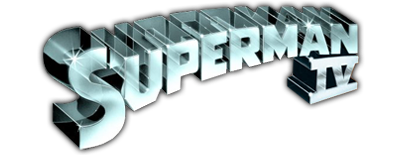
It’s one thing for a TV series to use repeated shots and visual effects to work within its allotted budget. The first five Star Trek series, and even a few of the Star Trek movies, are easy examples where the same effects shots are used and reused and reused ad infinitum as part of their narrative episodic and filmic structures. Even the original Star Wars relied on a few repeated visual effects shots to carry its story (and with a smaller budget at that), but not to the point of overkill.
One of the biggest problems with Superman IV is the use of multiple repeated visual effects shots, footage, and background plates throughout the film. I had always felt that with its reduced budget, the final version came off like a TV movie of the week, as opposed to the first three films in the series, which were made for the big screen.
Right from the beginning of Superman IV it becomes obvious that the visual effects are hampered by repetitiveness, as the same effects shots and background plates are used throughout the film. So let’s look at the culprits, shall we?
First up is this flying shot which crops up a total of six times throughout the film.
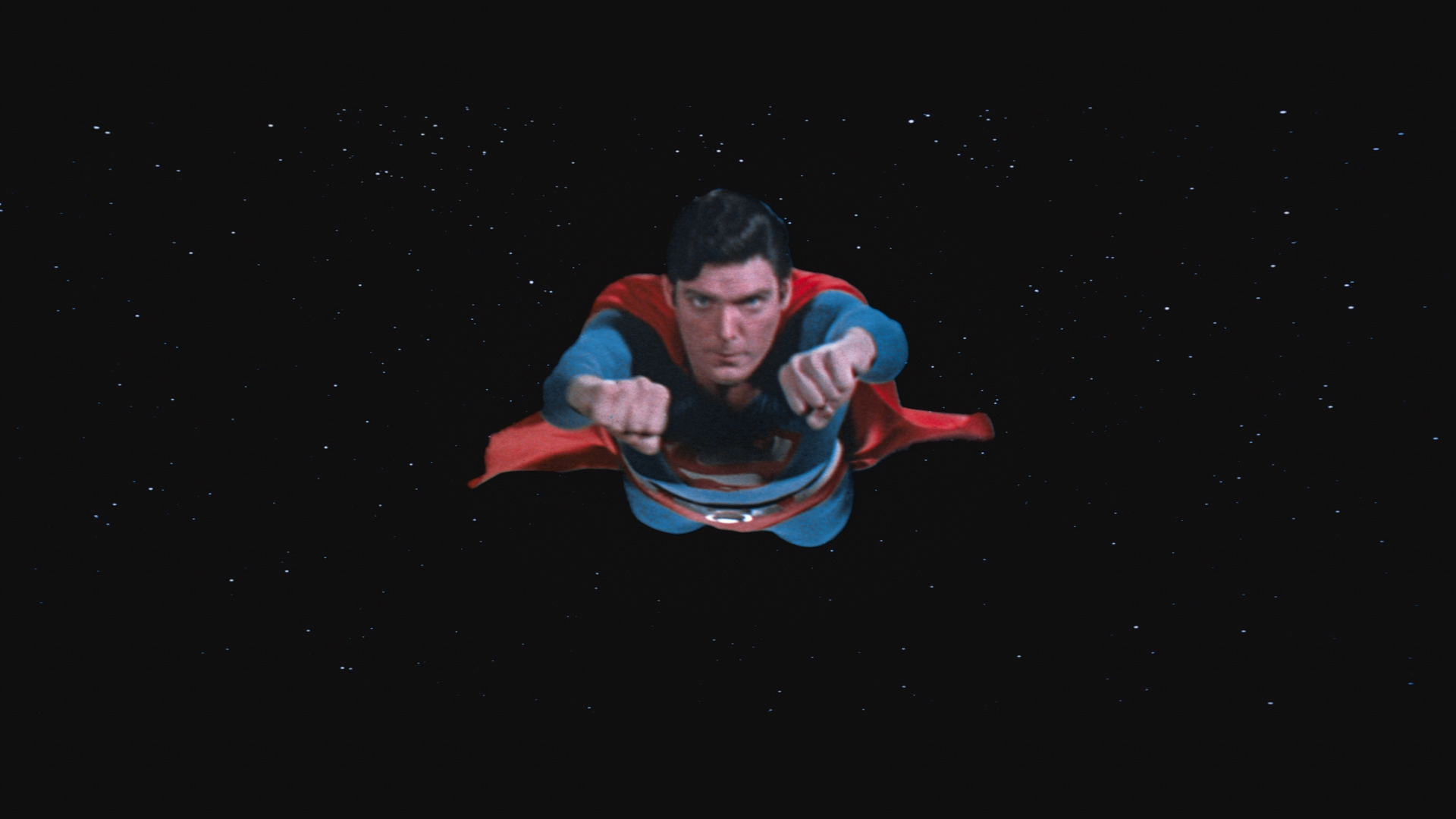
The first time we see Christopher Reeve in flight as he heads towards the Russian spacecraft… 
…and then no less than twenty seconds later as he heads off to rescue the Russian cosmonaut! Later, in a scene that was deleted from the final film, Superman flies from Metropolis to Jeremy’s school to respond to his letter in person.

The workprint uses John Williams’ “Super Rescues” to underscore the moment. One of the TV spots uses a finished version of this exact clip at the start of the ad. Then, closing in on the one-hour mark in the film, the shot returns as he pursues Nuclear Man…

Same background plate as earlier. This is then followed by another use of the same flying shot in the scene of Superman averting a tornado disaster, as he flies up to rescue a little girl (Christopher Reeve’s own daughter Alexandra).

Used in the Cannon Films international release and the 1990 syndicated TV broadcast. And then a short time later the flying shot reappears as he flies to Italy to save a town from a volcanic eruption.

This next one is a clear cheat of footage taken from Superman: The Movie during Clark’s dream about Krypton. Several shots of the starship’s escape from the lab and flight through space are borrowed from the film, as well as the shot of Krypton and its sun exploding.




Next up we have our first two-for-one special, the first of several two-fers. Our next culprit is when Superman takes Lois for some fresh air and flies her seemingly around the world.

Then a few seconds later, we have the same flying element superimposed over the Golden Gate Bridge as they fly across San Francisco.

I have a fondness for Alexander Courage’s “Fresh Air” cue from the soundtrack. Deleted footage from the flight sequence uses a duplicated bluescreen flying element of Superman letting Lois go so she can fly solo. I for one am glad these bits were cut from the film. The thought of Lois being able to fly on her own would have taken me out of the film, thereby destroying any illusion of verisimilitude that was conveyed in the first film.


And here’s our next two-fer, as Superman makes good on his word to get rid of the world’s nuclear weapons.
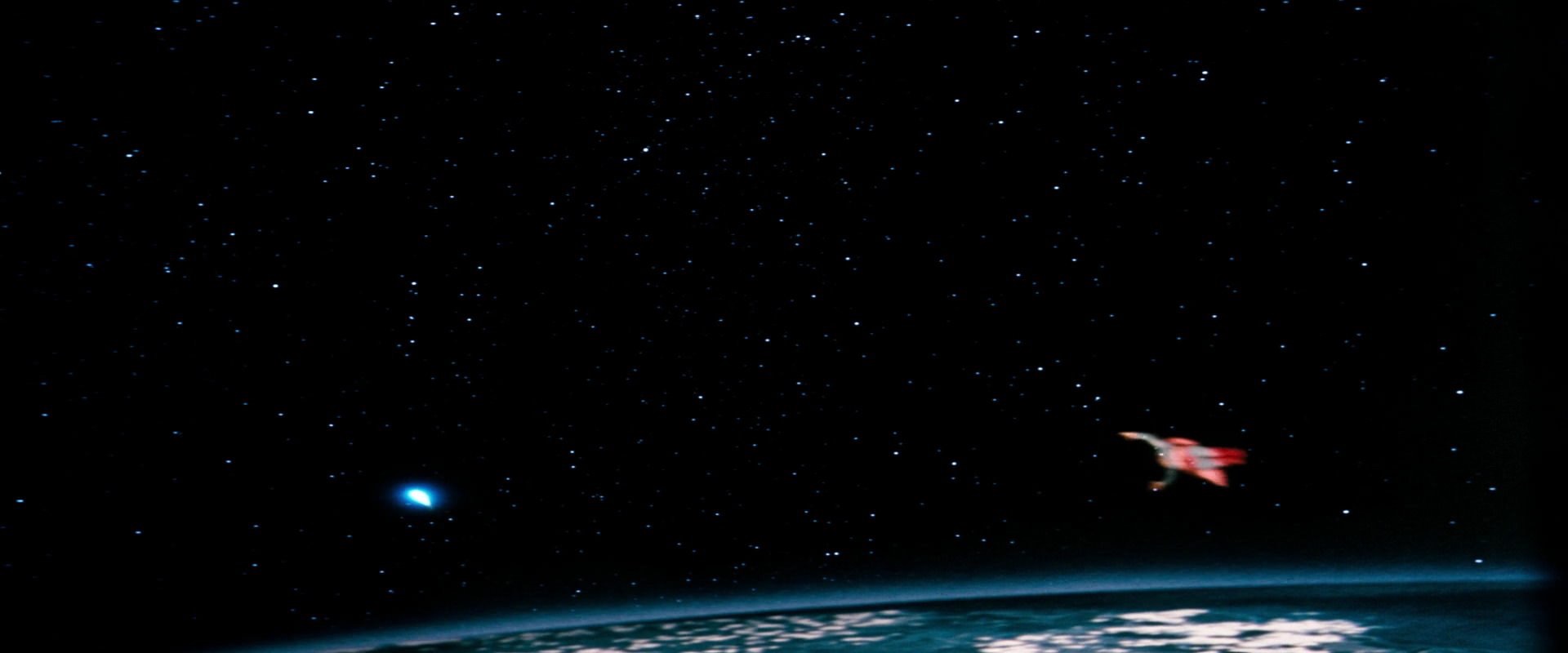
First the US missile… 
…then the Russian missile some twenty seconds later, all by flipping the film. And then there’s this two-fer, as a nuclear explosion in the heart of the sun appears twice in the movie…
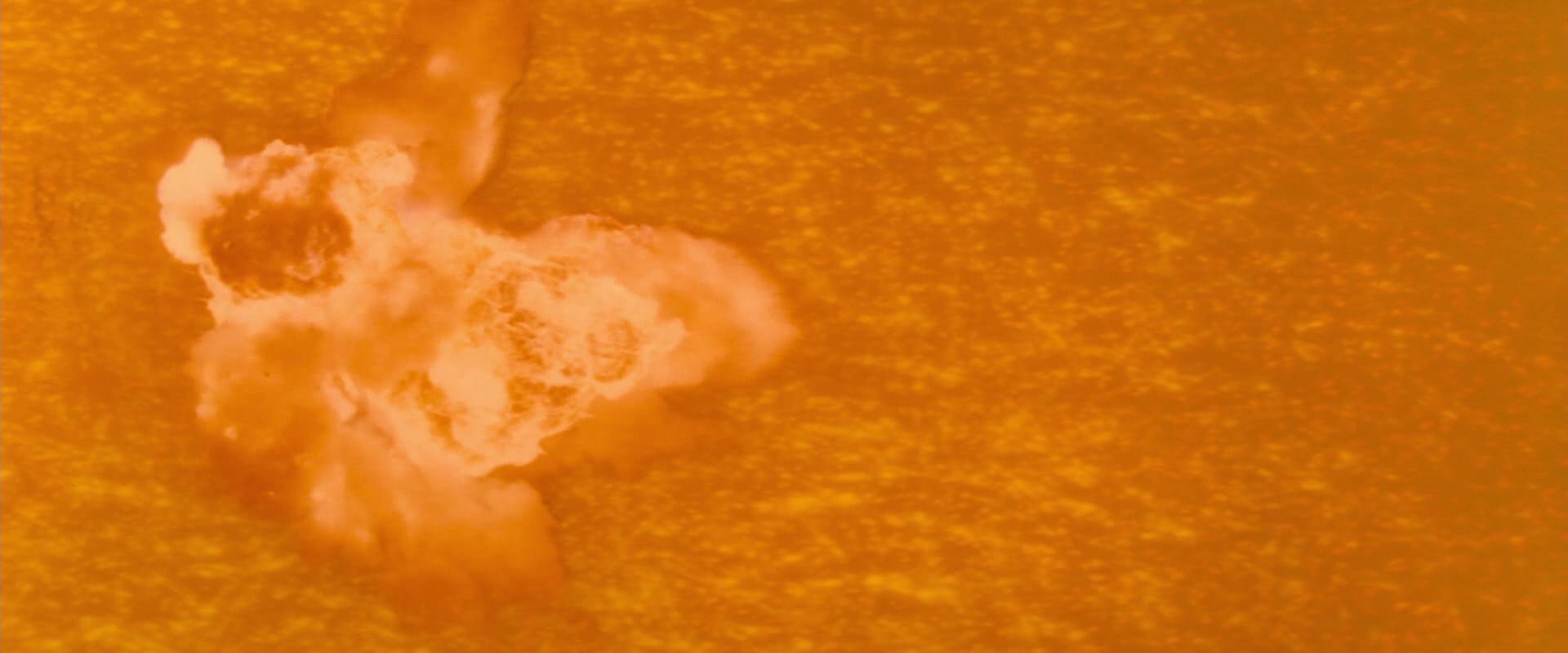
First, when Superman hurls the net of missiles into the sun… 
…and from later, when it’s reused for the shot of the lone missile exploding and creating the second Nuclear Man. Later, as Superman intercepts a missile and hurls it into the sun, thereby creating the Nuclear Man, we have a flying shot that appears twice in the film, first here…

This image was flopped for the film. The giveaway is the S shield on his chest. …and then later, as he flies away from Italy to encounter the Nuclear Man in outer space.

Flying shot corrected here in this appearance. Next up is a shot of the Nuclear Man in flight that is used a total of four different times throughout the film, including the extended international cut.

On approach to Luthor’s lair… 
In flight with Superman in pursuit… 
Just before he creates a tornado… 
And then as he flies to the heart of Metropolis to encounter Superman. During the double date scene, we have a duplicated background shot used to show Superman going back and forth between Lois and Lacy.

Going down… 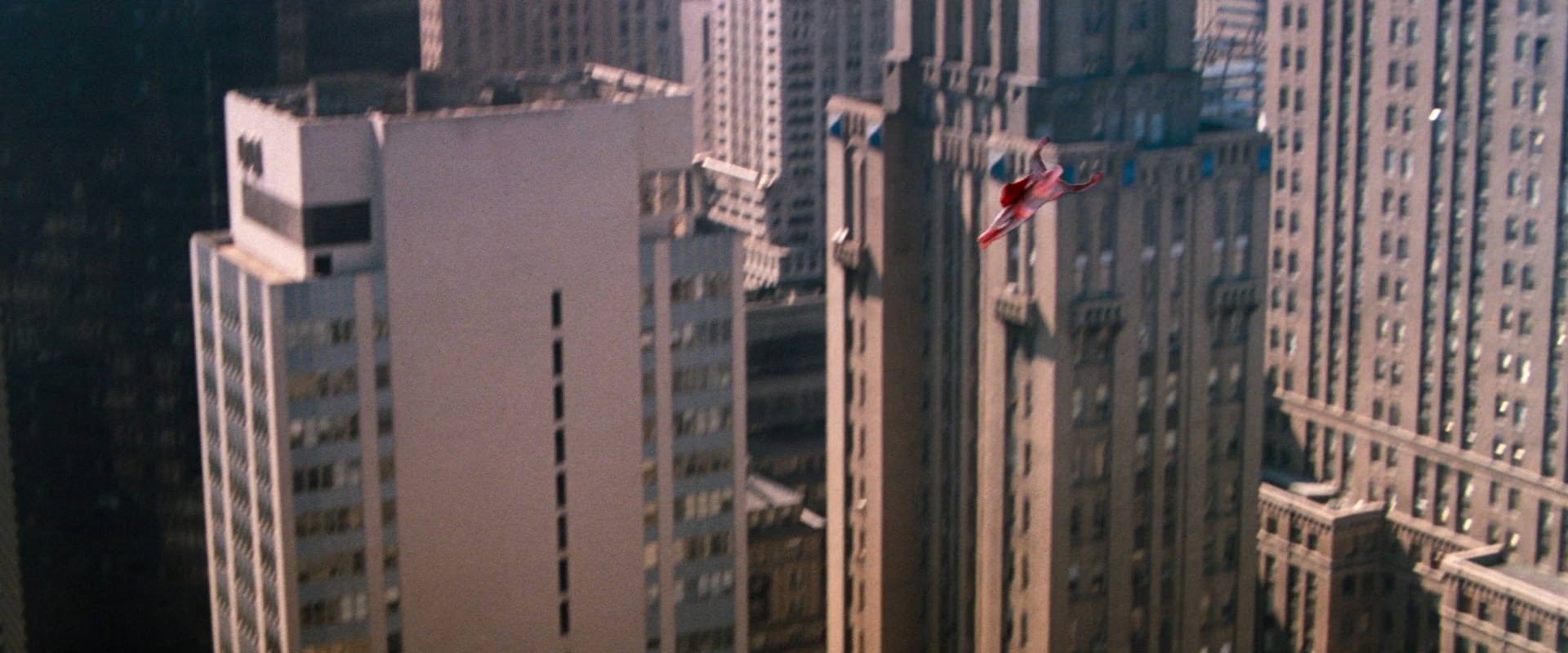
…and back up again! The footage had been run backwards to achieve the “going up” effect. As Lex Luthor reaches out to Superman via his private frequency, pay attention to the New York City background. It’s repeated when he describes “Lex TV” and then when he closes it out and says, “Peace.”

In the extended international version we see an added clip of Superman in flight and searching for the Nuclear Man, which is used twice.
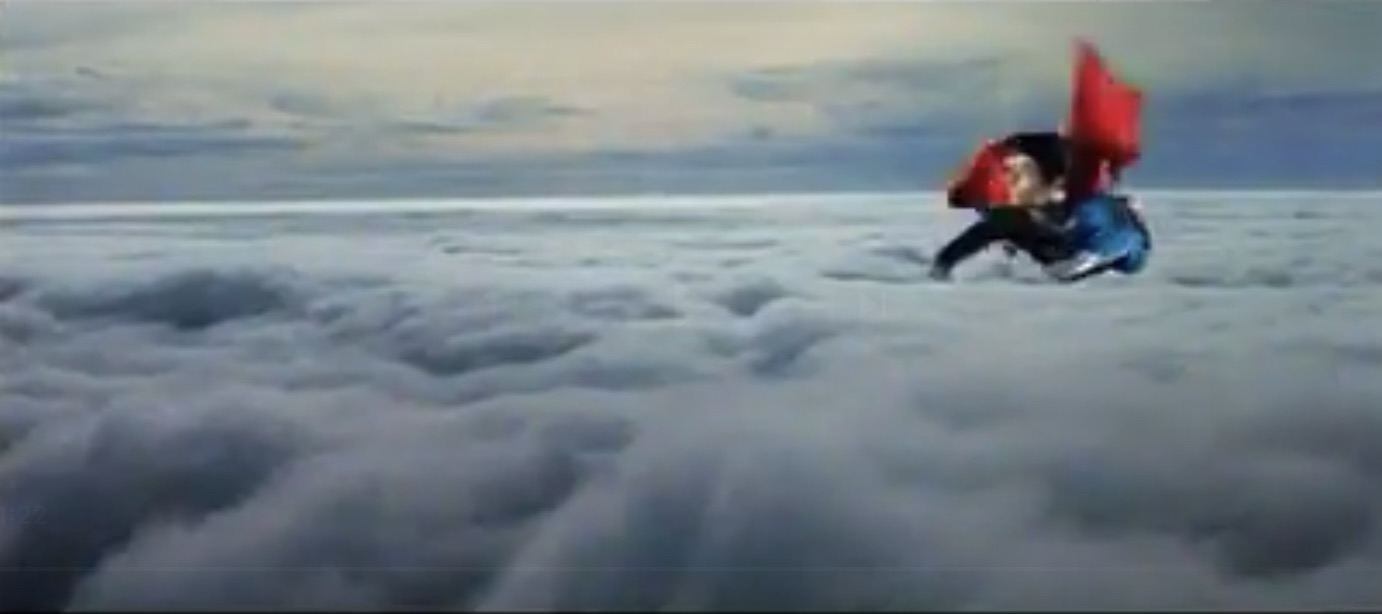
The first time around the shot is trimmed… 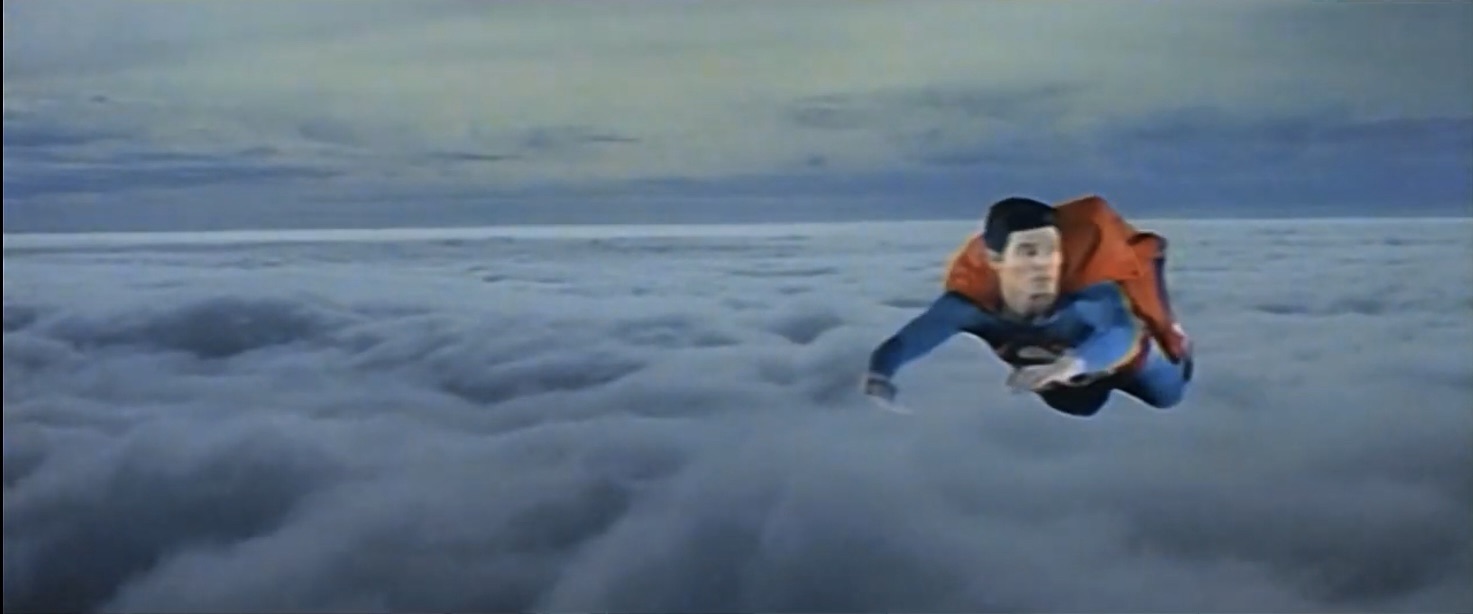
…while the second time it runs longer and uncut as the Nuclear Man arrives and punches him away. When the Nuclear Man arrives in the Midwest to create a tornado, the same background is used, once for his arrival, and a second time for the actual tornado itself.

The tornado effect appears twice, when Nuclear Man flies clockwise to create it, and then when Superman flies counterclockwise to stop it.
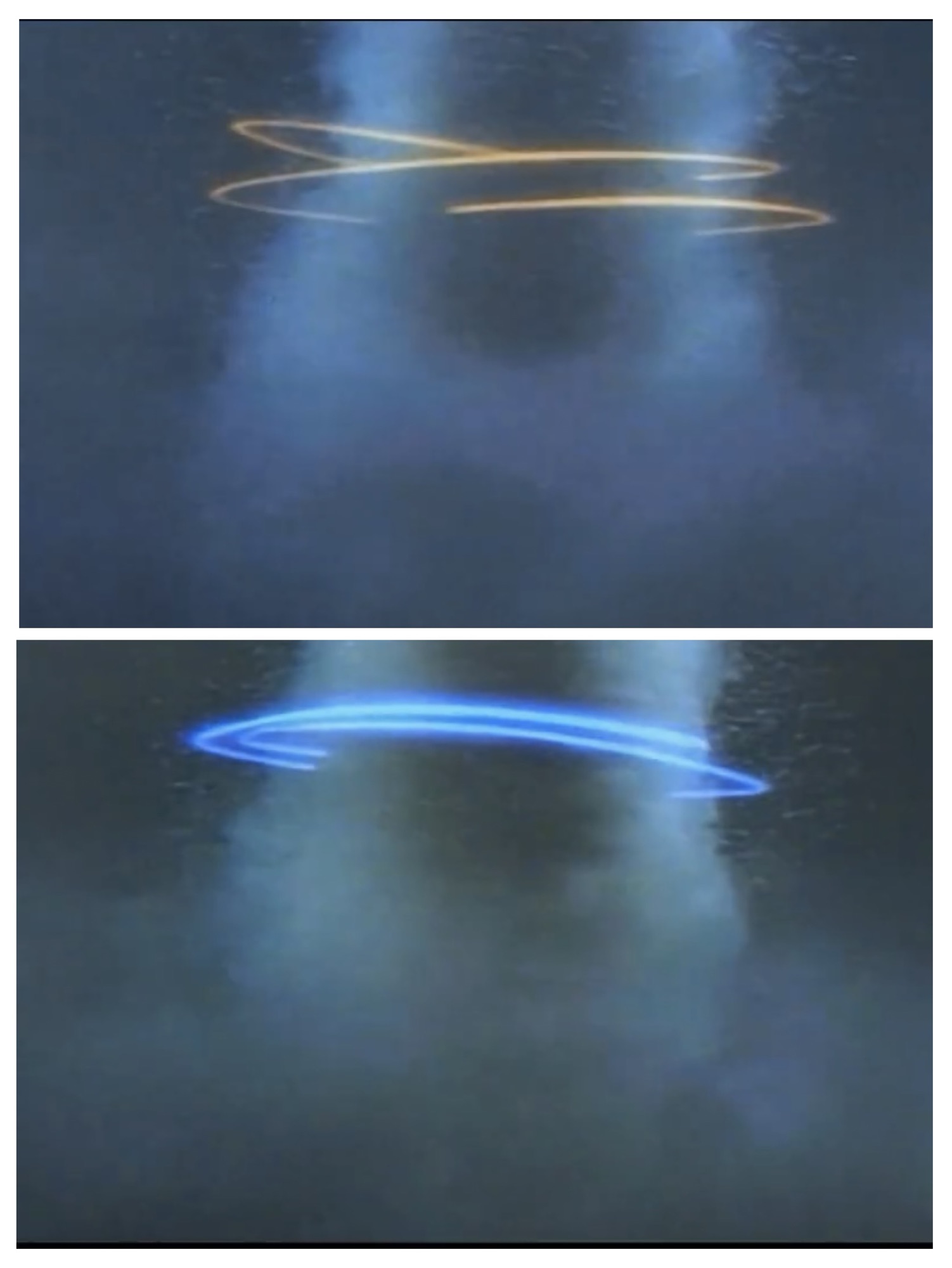
The effect was achieved by playing the footage backwards. At the end of the tornado sequence, the same background plate of the farmlands appears twice, both times for poorly matted elements of the Nuclear Man and Superman.

Now how many times does this next flying shot appear in the movie? Once, you say?

From the end of the volcano scene. Well, if you’re just viewing the theatrical cut, you’d be right. But it’s actually used three different times, if you take into account the extended international version and the deleted scenes from the workprint on the DVD and Blu-ray.

From the added clip of Superman stopping the tornado, as seen in the international cut. And then here…

Same flying shot, but temporarily used at the end of the Red Square scene, as seen in the workprint scene on the DVD. When the Nuclear Man flies downward, this same shot appears three times during the movie.
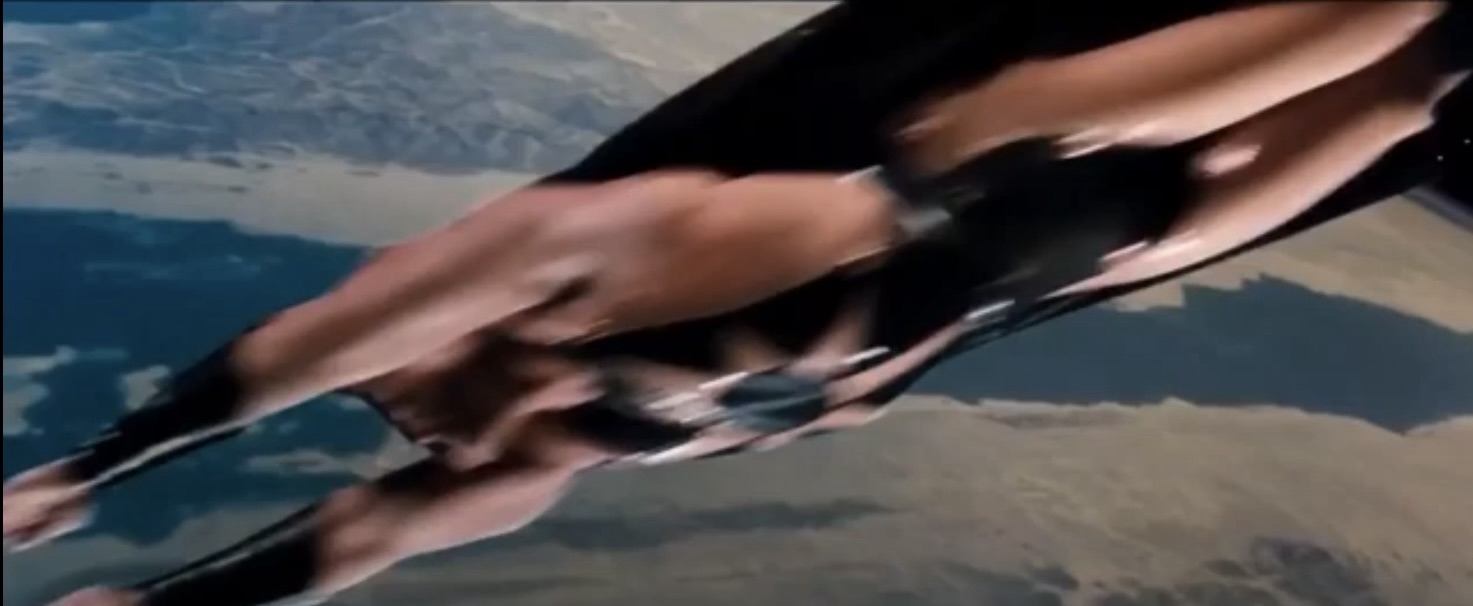
First, as he flies down to China… 
Then, as he flies toward Italy… 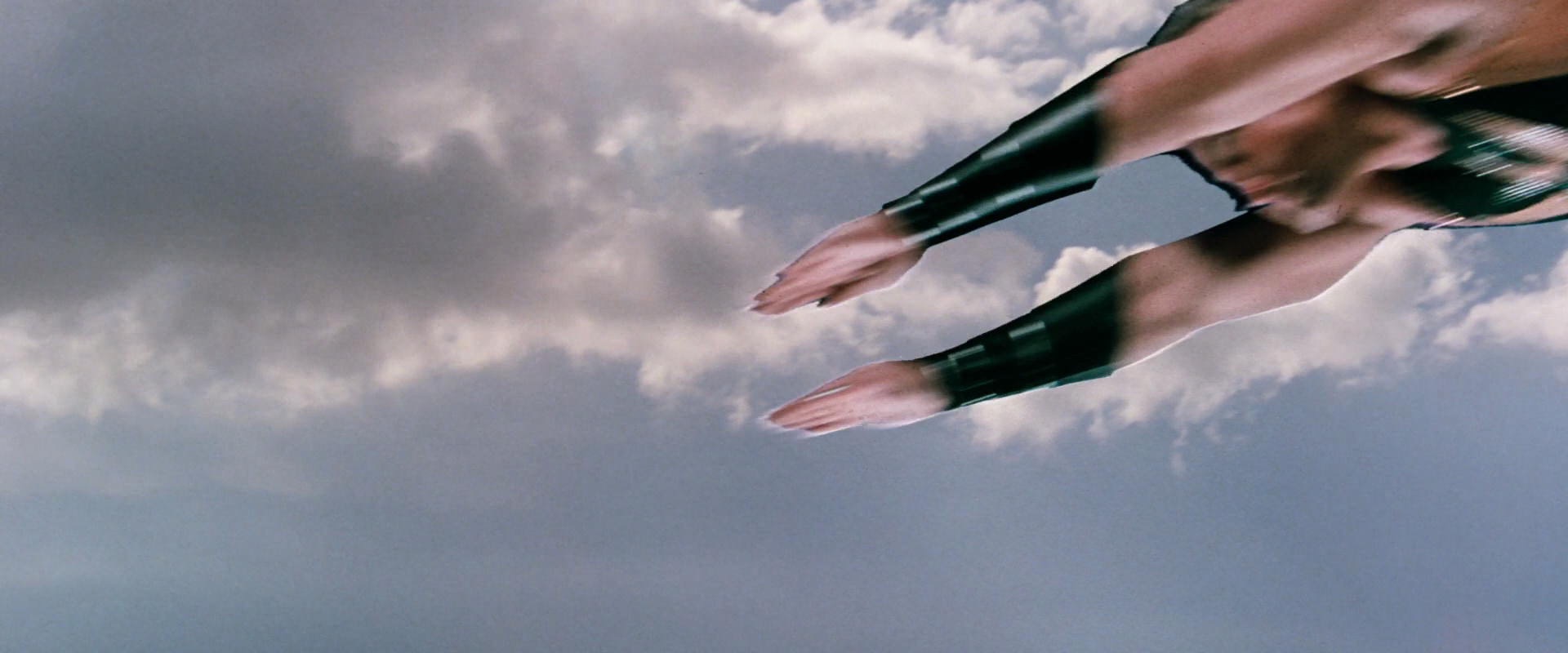
And finally, as he flies to attack Superman after catching the Statue of Liberty. Once Superman arrives to save the girl from falling from the Great Wall of China, a flying shot appears that is used twice.

How the flying element was actually filmed… 
…and then flipped for usage in the film. Now this same flying shot appears later in the movie during the scene where he stops the Nuclear Man in flight by sacrificing Lacy while saying to her, “I won’t let you get hurt!”

Taken from the workprint of the scene. Another background plate appears once, twice, three times during the volcano sequence.

First, as the Nuclear Man flies to the volcano… 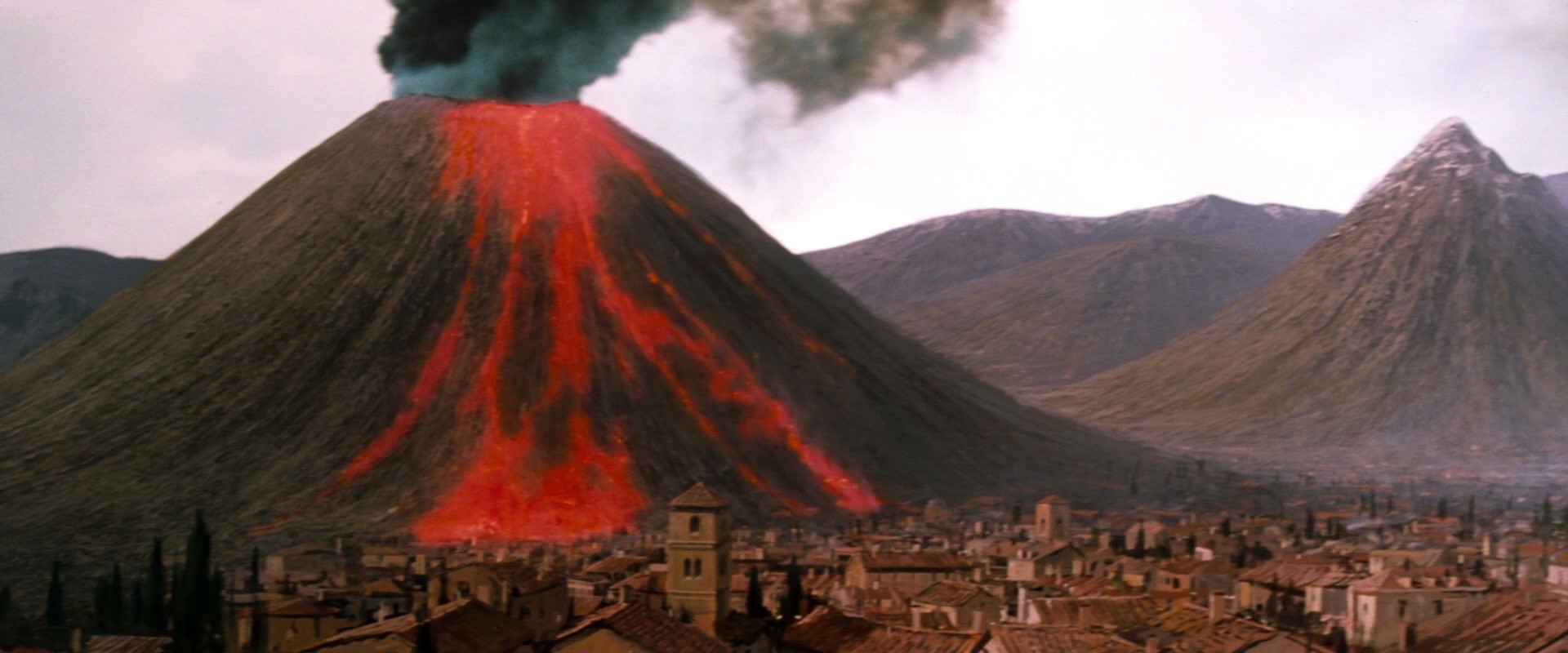
Then, with the lava and smoke effects added… 
And finally, as Superman arrives on the scene. In the same sequence, as Superman uses his heat vision to shear off the top of a nearby mountain to plug the volcanic eruption, pay attention to the background plate.



Same background plate used twice, as the smoke in the background appears to erupt upward twice. Another background plate of the streets of Moscow appears a total of three times, twice in the extended cut and a third time in a deleted scene that is on the DVD and Blu-ray in workprint form.

The introduction to the first Red Square scene… 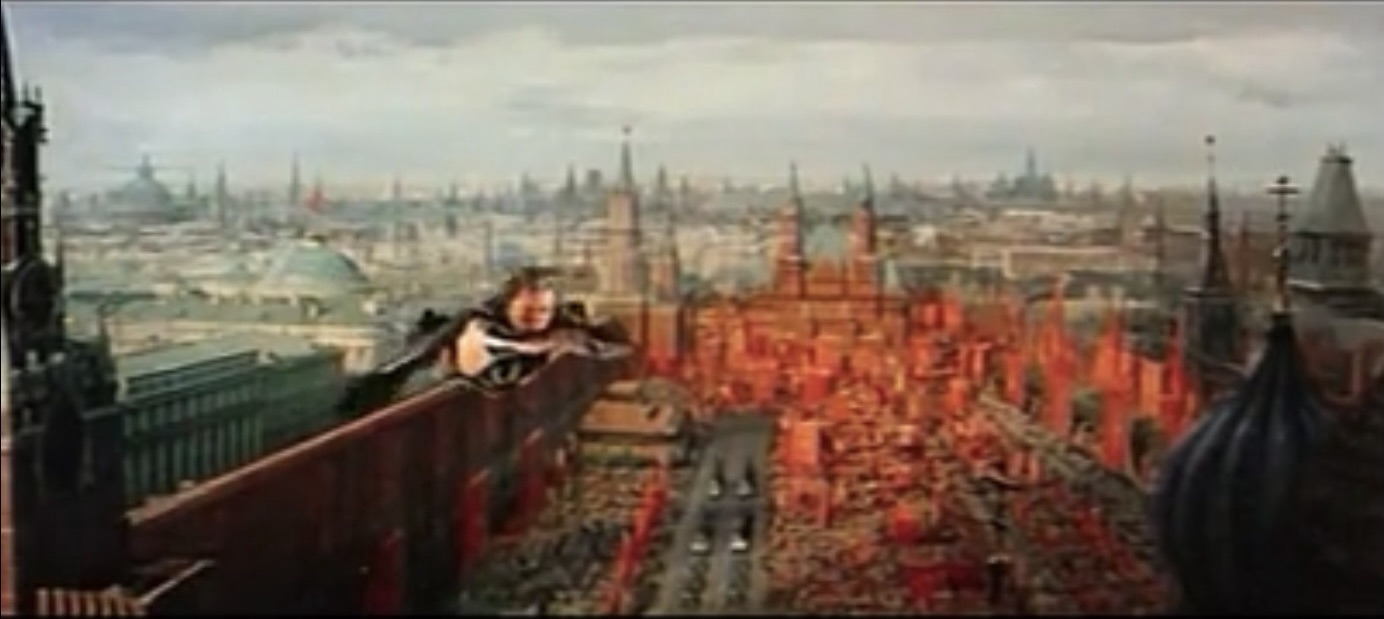
…and then a few seconds later as the Nuclear Man arrives. I liked Alexander Courage’s “Red Square” motif from the soundtrack. 
The shot later appears at the start of the deleted scene of Lex Luthor meeting with the Soviet arms dealers. As Superman arrives at Red Square to stop the nuclear missile from going awry, the same background plate is used to show his arrival and departure.

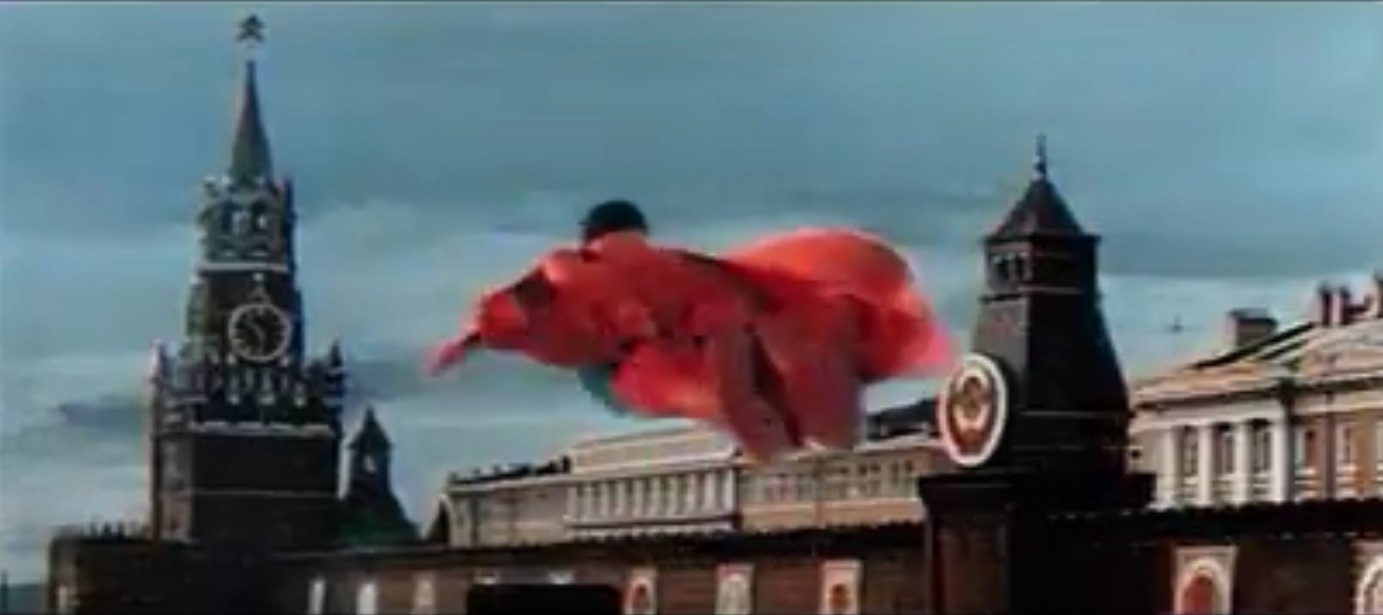
The use of the Superman theme to underscore this moment is a great one that should have stayed in the US theatrical release. A flying element of the Nuclear Man is used three times in the film, twice in the theatrical version and once in the extended version, by flipping the image to where he goes left to right and right to left, respectively.



Another angle of the Nuclear Man flying straight at the screen appears four times throughout the movie.
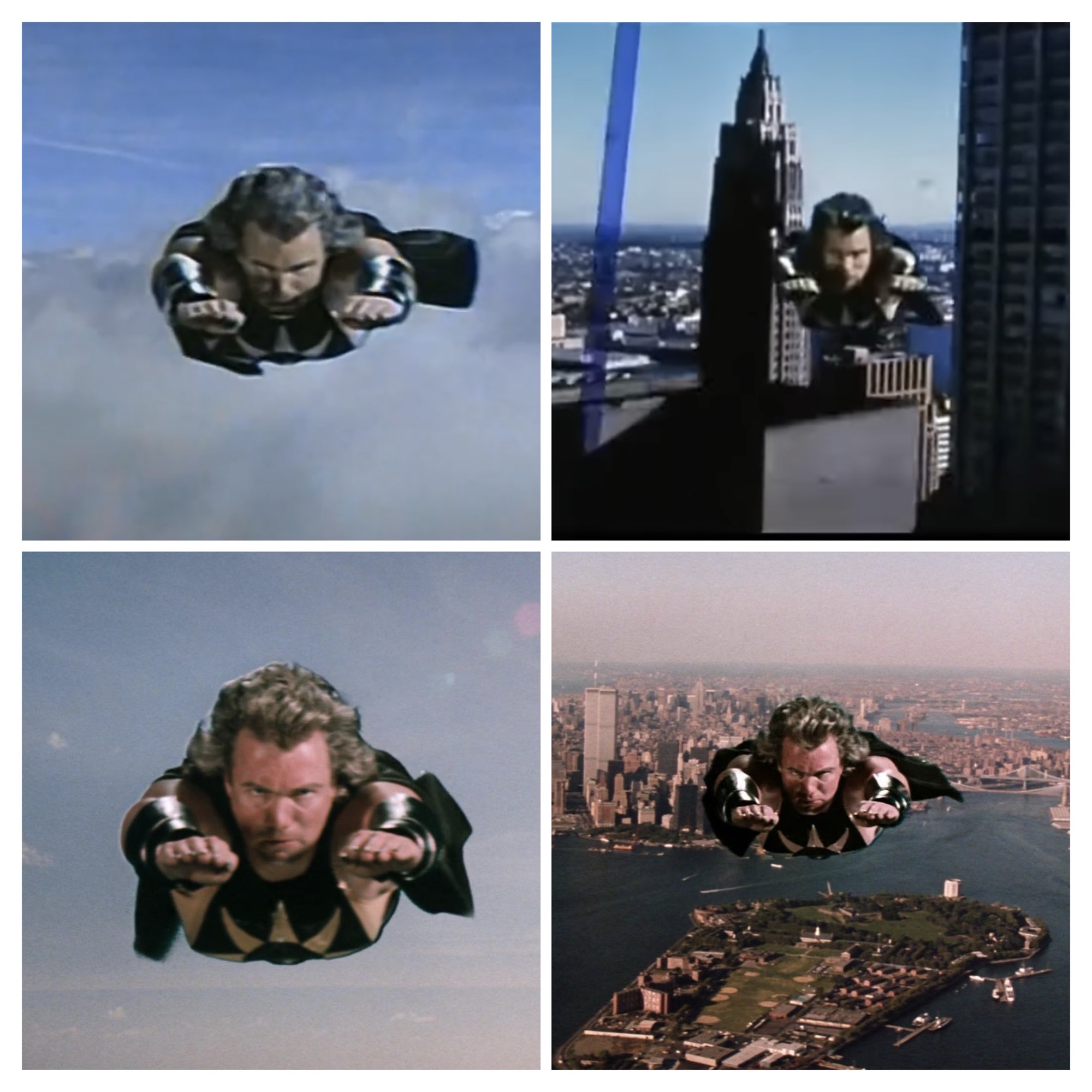
During their first encounter in outer space, Superman punches the Nuclear Man down to Earth, and we can see the same background plate used twice within a matter of a few seconds.


Another flying shot of the Nuclear Man carrying Lacy in his arms appears three times in the film…

Once, during the deleted “Red Alert” sequence… 
…then as he flies her away from Metropolis… 
…and later as he carries her into outer space. During the deleted “Red Alert” segment, which appears only on the DVD and Blu-ray in the deleted scenes section (why it wasn’t included in the streaming version is a mystery to me), we have some additional flying angles of the Nuclear Man that appear in this segment and nowhere else. This entire sequence adds to the story of the world’s nuclear threat and adds to the then-Cold War paranoia that permeated the world for three decades.


Two from the side… 

…and two from the front. And the same NASA element of the Earth appears no less than six times through the movie!
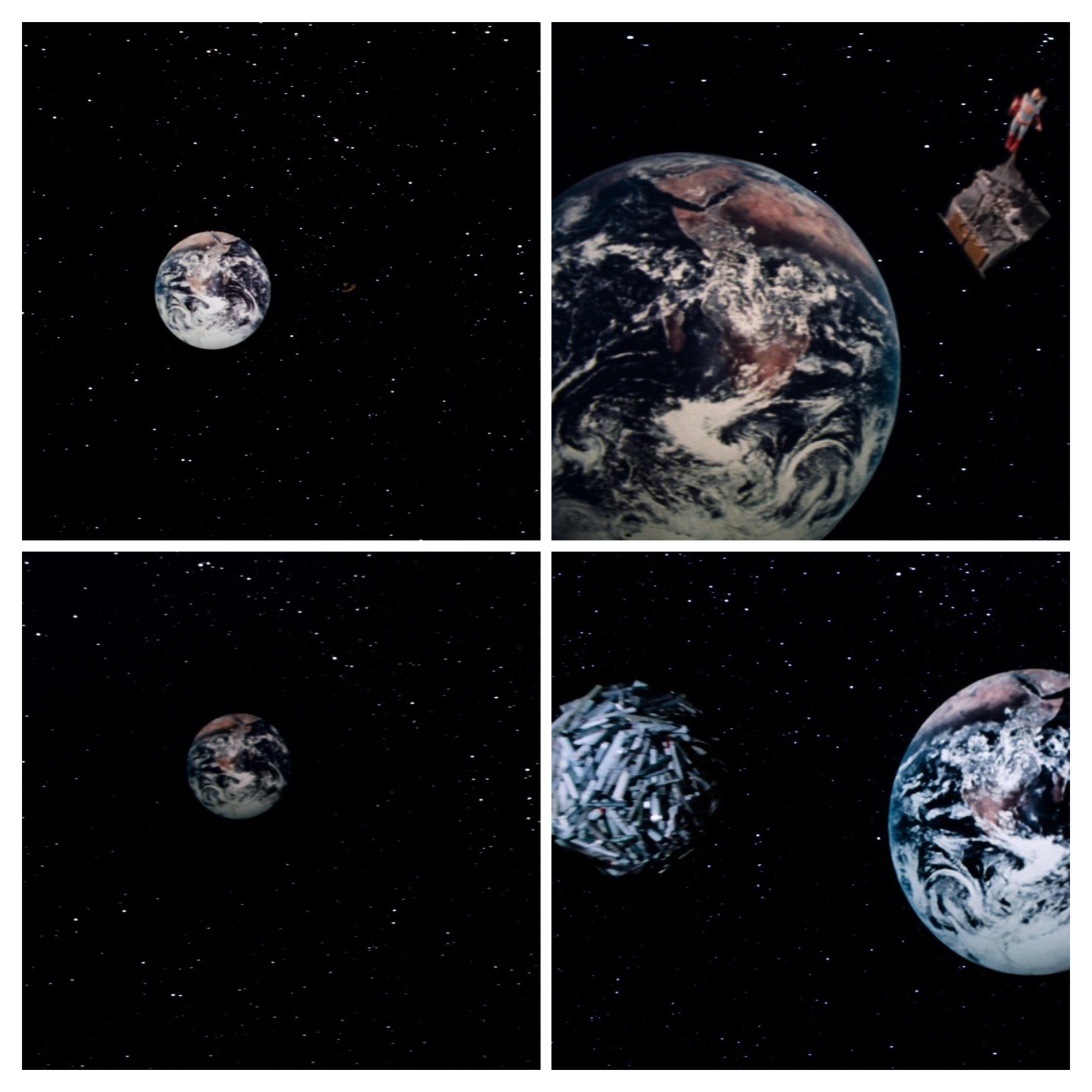

On the DVD and Blu-ray an added sequence of the U.S. and Soviet militaries building up their missiles all to stockpile Lex Luthor’s wealth. Some of the shots in this scene are borrowed from earlier moments in the movie as well as from the deleted “Red Alert” sequence.

This Soviet missile clip from earlier… 
…also appeared in the “Red Alert” sequence. 
As did this one… 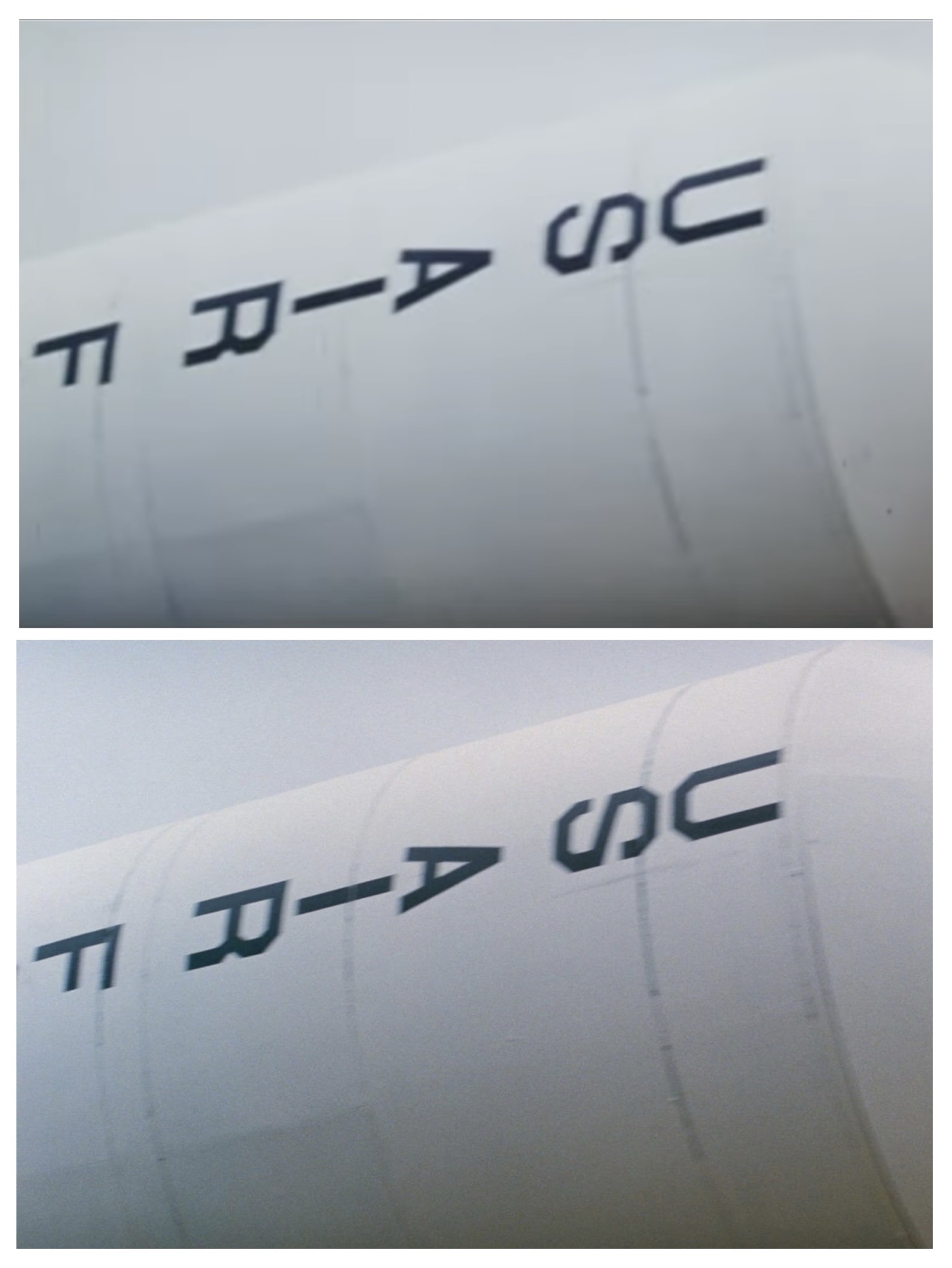
…and this one… 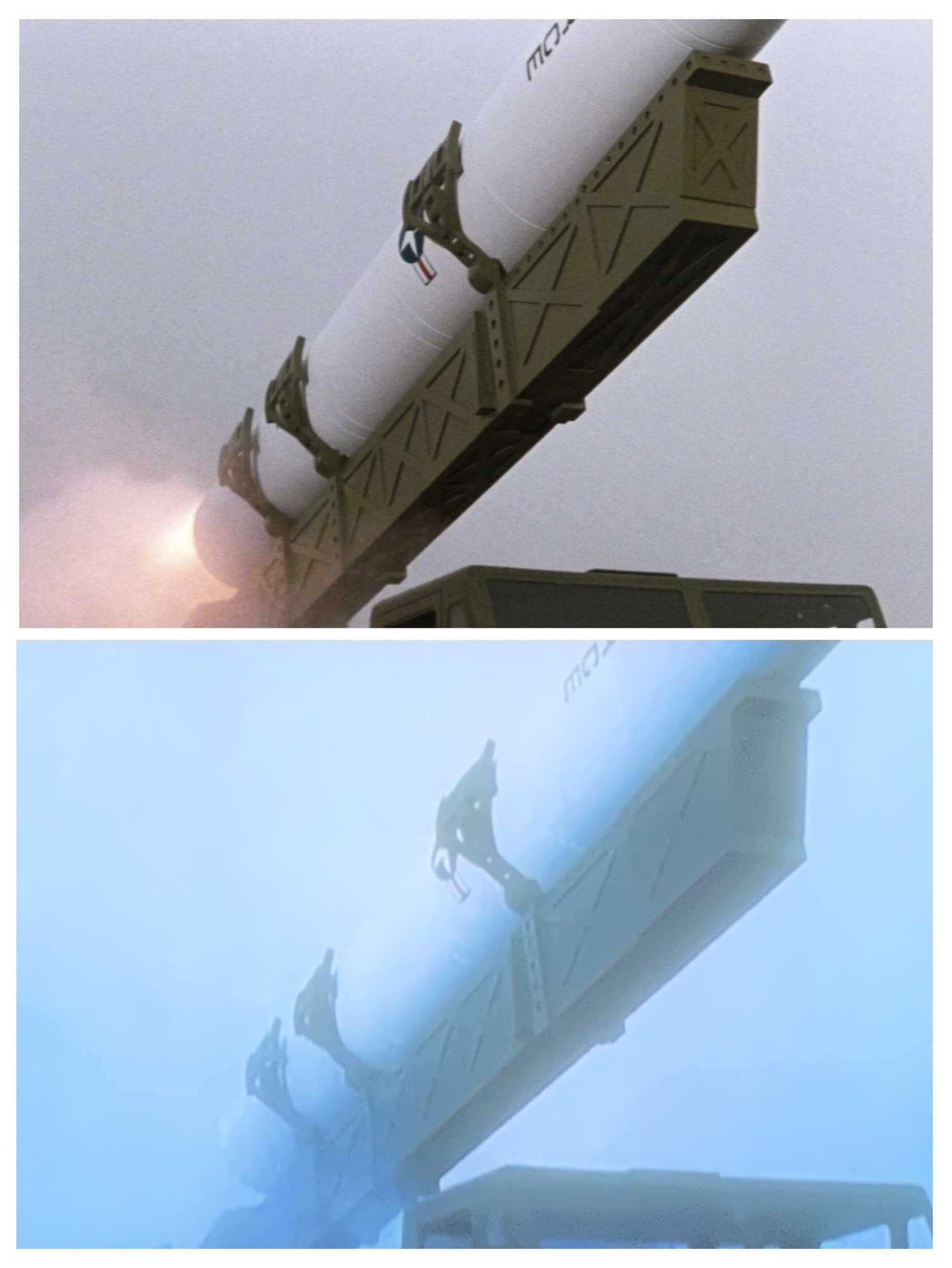
…and this one, but without the hidden device that created the Nuclear Man (imagine if it had gone off a second time and created yet another Nuclear Man!) This shot of the U.S. military appears first during the nuclear pileup sequence…

…then later on during the “Red Alert” scene.

Likewise for the Soviet military.

Nuclear buildup… 
and “Red Alert”. But that’s not all. The final flyover at the end of the film was duplicated by borrowing the footage from the end of the first Superman film.
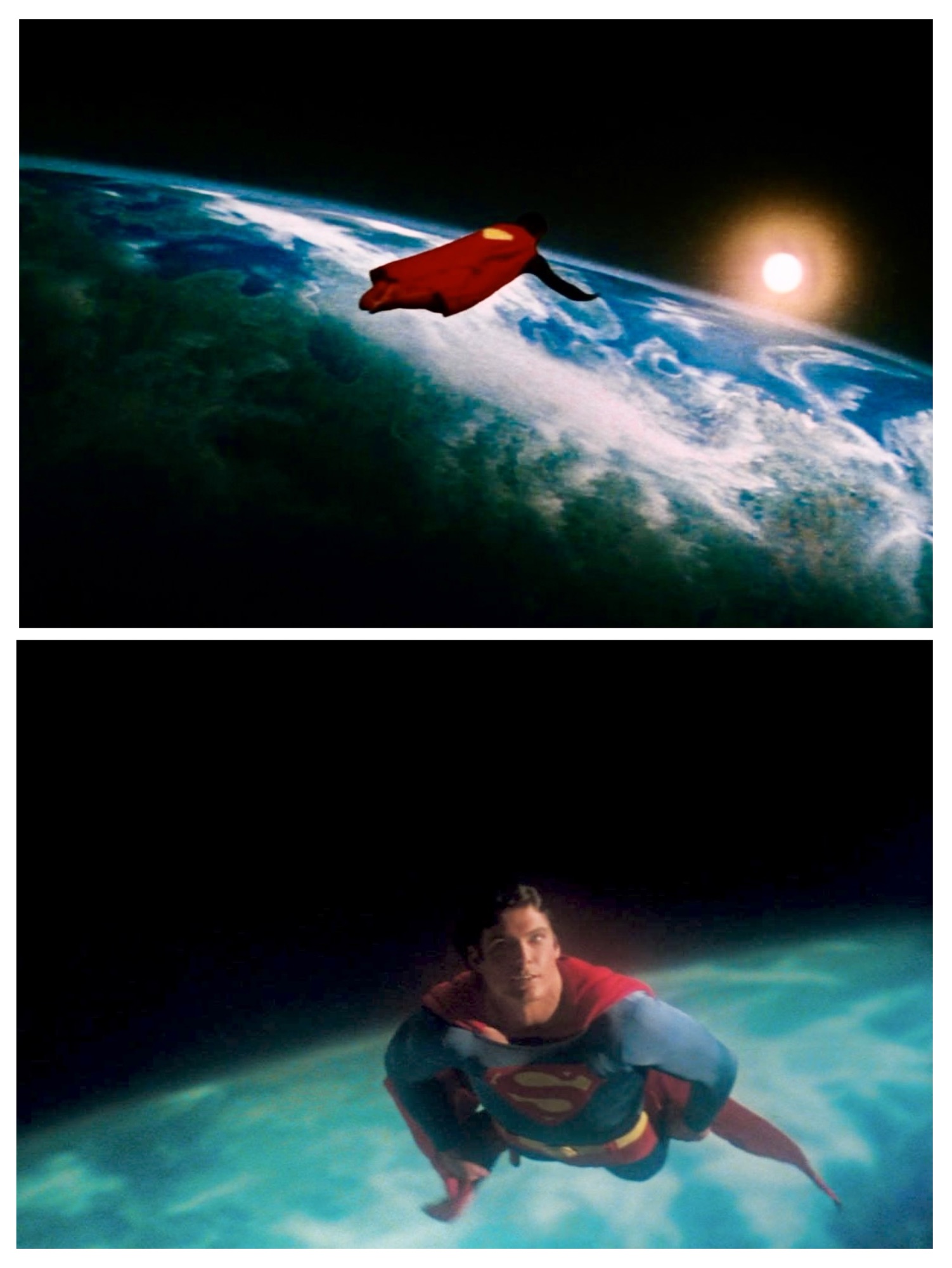
Let’s face it, Superman IV gets a bad rap when it comes to its visual effects and multiple repeated shots and backgrounds to tell its story. That’s how minuscule the budget was and how much Cannon Films had to really pinch pennies to come up with a complete movie to begin with. I had always felt that had the movie had been given another six months, it would have looked a lot better. Little did I know how on target I was. Instead of six months, the visual effects department had thirty days to complete all of the effects for the film. And that meant filming all of the flying shots against blue screens. The days of the Zoptic system were behind them. And everything for the film was produced at Elstree Studios, the same place where Star Wars had been filmed. If only they had a team like ILM to work on the effects, it could have been a winner.
Which is why the best laid plans of mice and men go awry at times.
-
Eighteen Minutes
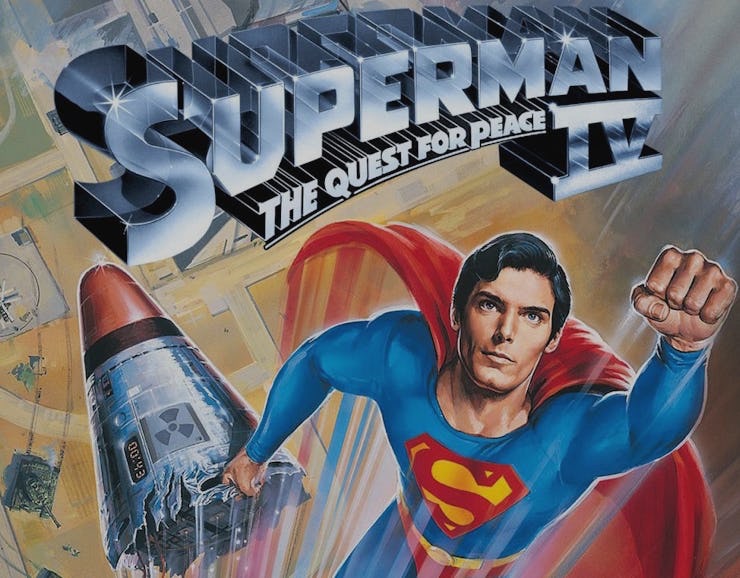
In November 2006 we were treated to the inclusion of nearly thirty minutes of added deleted scenes from Superman IV for the deluxe edition DVD release, all of which were taken from a workprint of the film. In most cases the footage contained temporary music and visual effects, while in other places the visual effects and one piece of music were completed. That would indicate that the workprint was from May 1987, given the scoring of the “Red Alert” sequence in England by that time, and the visual effects team, film and music editors, and everyone were scrambling to get the film completed and ready for its release in July of that year.
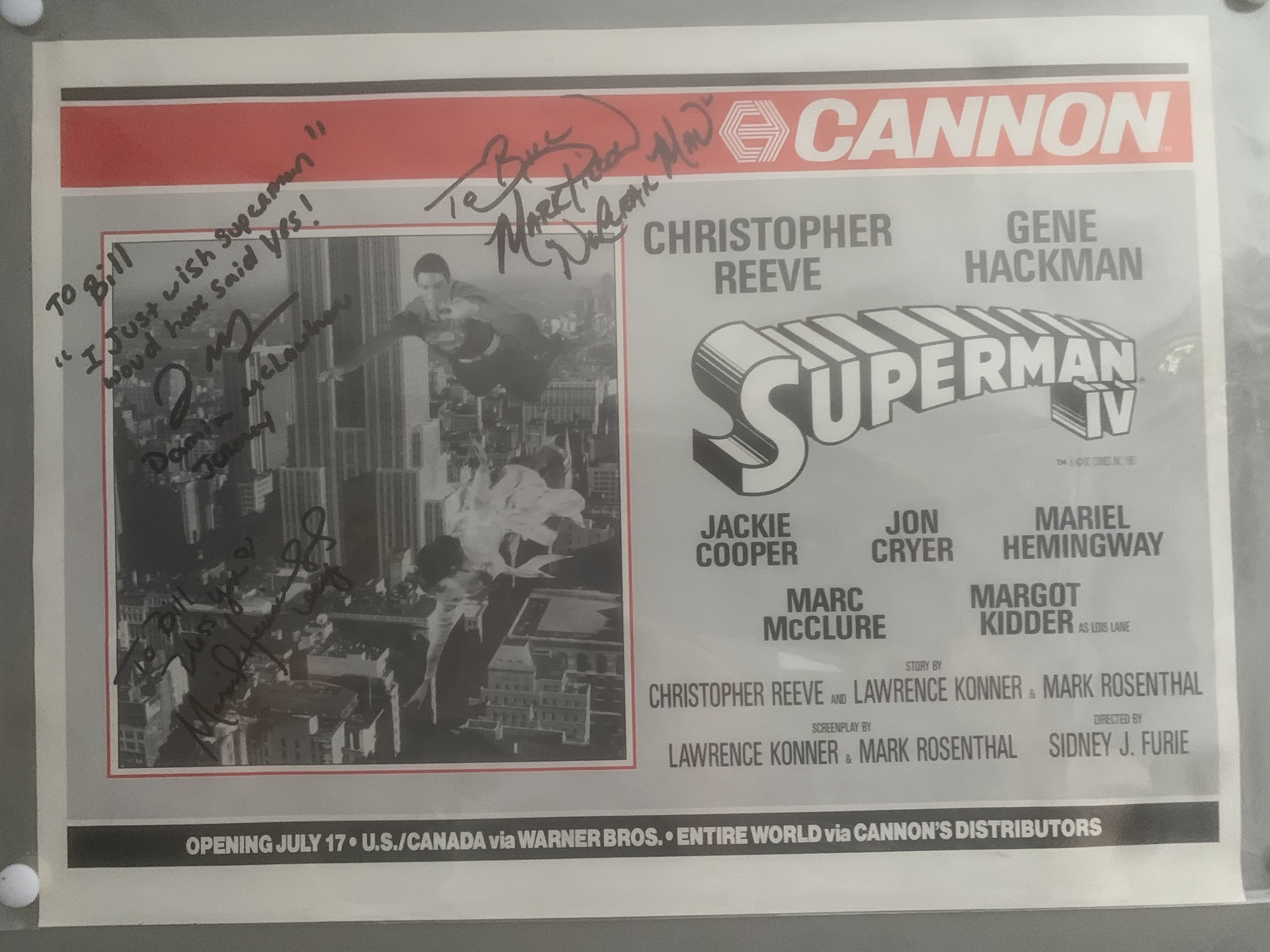
From my personal collection, signed by Mark Pillow, Mariel Hemingway, and Damian McLawhorn in 2022. Then came the press interviews for the film, followed by the infamous and disastrous Orange County, California, screening in June, followed by the wholesale editing of 45 minutes of footage from the film—which I believe was shown in Orange County in its final completed form—at the request of Warner Bros. executives to meet its release date. Cannon Films producer Menahem Golan later said that the cuts were made to squeeze out more screenings, which in turn would bring in more money, which obviously didn’t prove to be the case. Starlog Magazine, which was the biggest source of information on movies in the days before the Internet, reported that some 30 minutes of footage had been cut from the movie, suggesting at least a running time of 120 minutes.
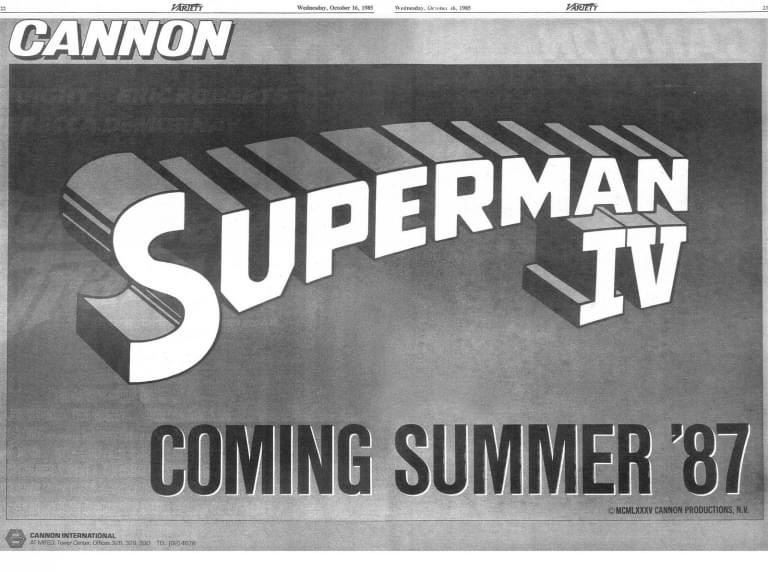
Marc McClure later stated that what started out as Superman IV and what ended up as Superman IV: The Quest for Peace were two totally different things. It wasn’t until the mid to late 1990s that reports of a 134-minute cut first surfaced online, and the earliest place I saw it was on Gregory Oshel’s Superman movies page on Geocities. (Who remembers Geocities?) This soon followed on various sites and message boards including Superman Cinema, and over the next several years a wild rumor spread that the 134-minute cut aired on the then-defunct SFM Holiday Network as its final telecast, with various people posting that they had a copy of said cut, but nobody could supply the proof. It was met with variations on the same theme—they couldn’t locate the tape, their parents or relatives taped over it, their dog ate the tape, and so on—which led scores of people including me to debunk the rumors as false. One rumor led me to contact a video store in the Netherlands that supposedly had a 120-minute copy of the film, but they informed me that it was actually 88 minutes long. And then there was the Japanese laserdisc from Tohokushinsha Video (see my earlier blog “That Japanese Laserdisc” for more details), which ran 93 minutes long. To date it remains the longest cut of the movie to be officially released.
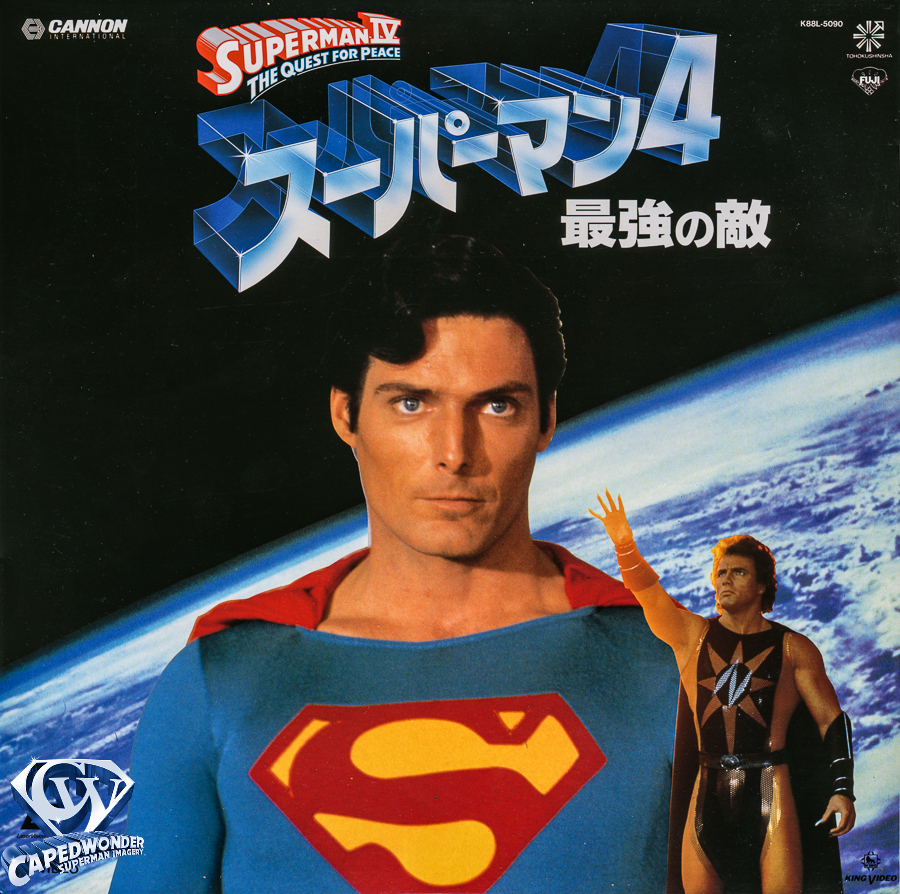
Still a wonderful collectible for any Superman or laserdisc fan! Eventually the report of the 134-minute cut was proven to be factual, first by an interview with visual effects supervisor Harrison Ellenshaw in a print interview, I want to say that it was in Starlog, and then by screenwriter Mark Rosenthal in his audio commentary on the DVD.
In 2007 I took it upon myself to assemble all of the available pieces together into a reconstruction of that original cut, using the deluxe edition DVD, a copy of the Japanese cut, and a DVD+R recorder. I didn’t have a copy of the script or the DC Comics adaptation or the Scholastic novelization on hand to guide me, and the soundtrack was still a year away, so I went with what I had. Crude but effective. (Other people have since done more seamless edits, including one fan cut called “The Quest for Coherence”, using the comic book adaptation and the 2008 soundtrack CD release to bring it even closer.) It remains one of the few pleasant memories of an otherwise painful year that saw my life descend into chaos and despair.
But two things stood out in my Superman IV reconstruction project. First, the film began to make sense. I had memories of reading the DC Comics adaptation and the novelization, but now I could see it for myself, even if there were gaps in obvious places. Second, with all of the available pieces brought together, that cut ran a few seconds short of 116 minutes. I had a conversation with Mike Matessino about the film, and he suggested that the film may have been no more than 124 minutes long, which at the time was certainly not out of the question.
That leaves eighteen minutes of footage to account for. Eighteen minutes of scenes that to this day remain unreleased and unseen by the public since the Orange County screening. So which scenes remain unaccounted for? Here’s what we can determine, based on behind the scenes pictures, script information, the DC adaptation, and the actual film itself.
The first scene that remains lost is a brief moment early in the film, as Clark Kent returns home to Smallville and visits the graves of his parents. The scene is apparently short, but it’s a touching moment for Clark.
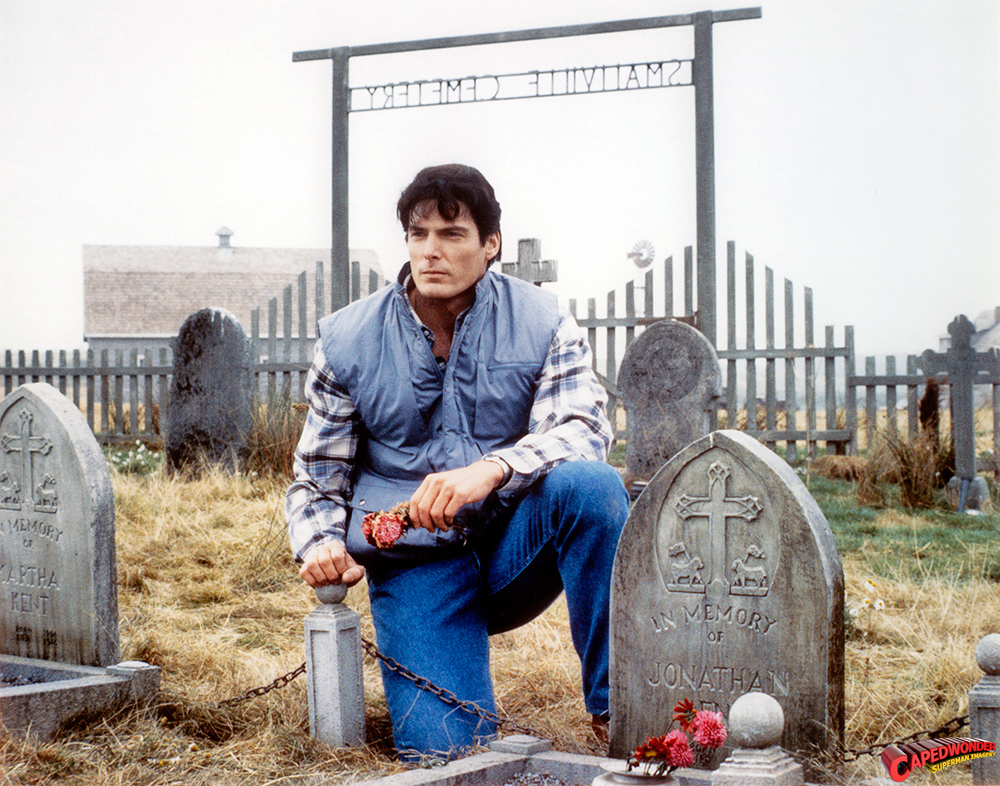
Christopher Reeve’s outfit for this scene is on display at the Superman Museum in Metropolis, Illinois. 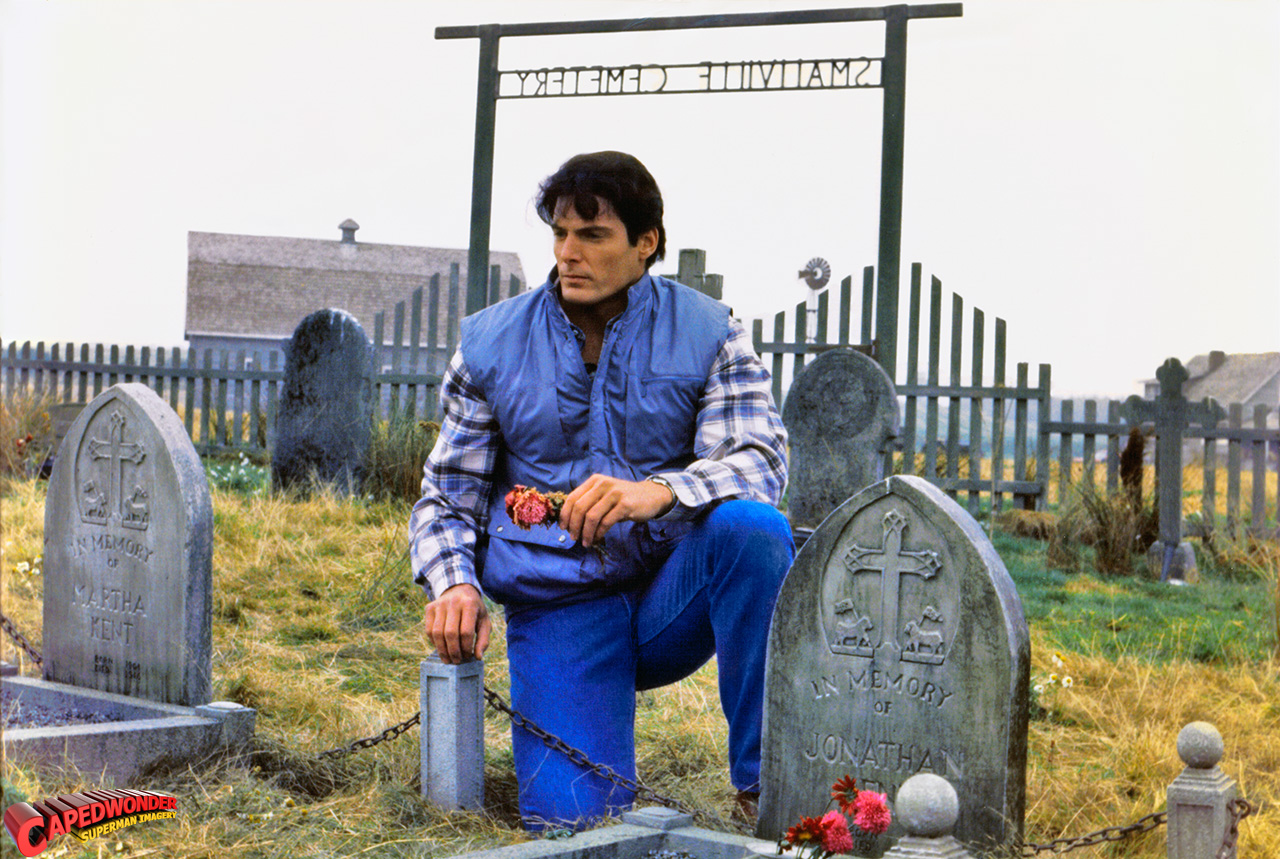
The set designers did a great job of recreating the Smallville Cemetery from Superman: The Movie, but we can see in the background a couple of buildings that are obviously the Kent house and barn. This is apparently to keep the filming in a more concise location. Later in the film we see Lex Luthor’s escape from the prison quarry via his nephew Lenny. In a quick moment from the script we see a couple of prisoners asking Luthor to help them escape. Here is that excerpt as it appears in the shooting script:
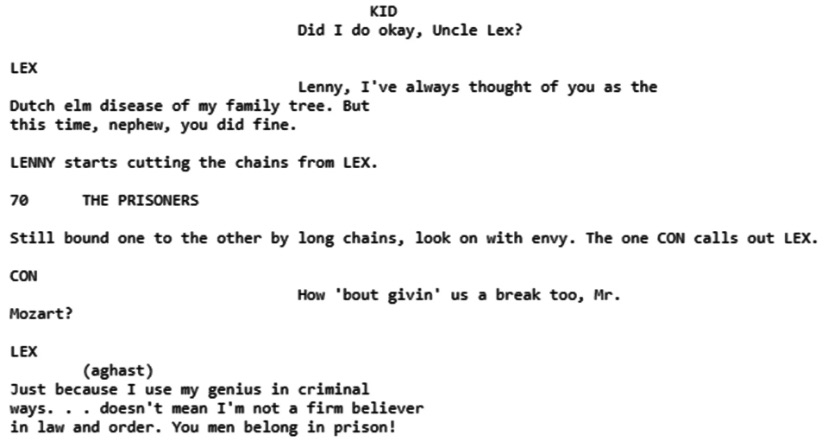
Whether or not this added moment was filmed, it remains unclear. Based on the music from the soundtrack, it’s highly unlikely that this beat was filmed to begin with. This next bit is one that’s featured only in the US theatrical trailer. When Superman uses his abilities to stop the subway train, we see a further extension of the electricity surging through him. The theatrical cut doesn’t show this extension.
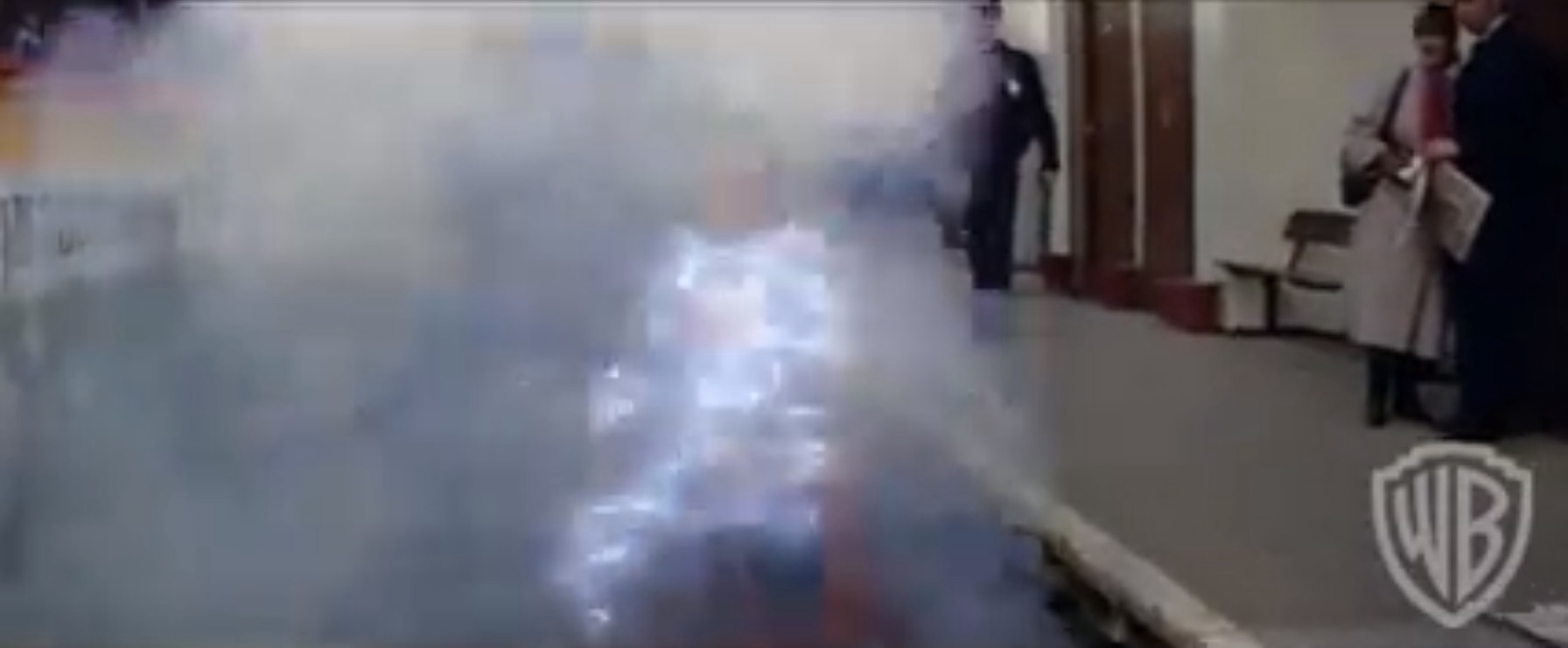
The next time we see Luthor and Lenny, they manage to steal a strand of Superman’s hair from a museum. In an added beat at the end of the segment, they successfully escape capture by the security guards. Based on the editing of the scene and the end notes of the music for the scene, it’s likely that it was in fact shot. Here’s how the scene appears in the comic book adaptation, with the end beat intact.
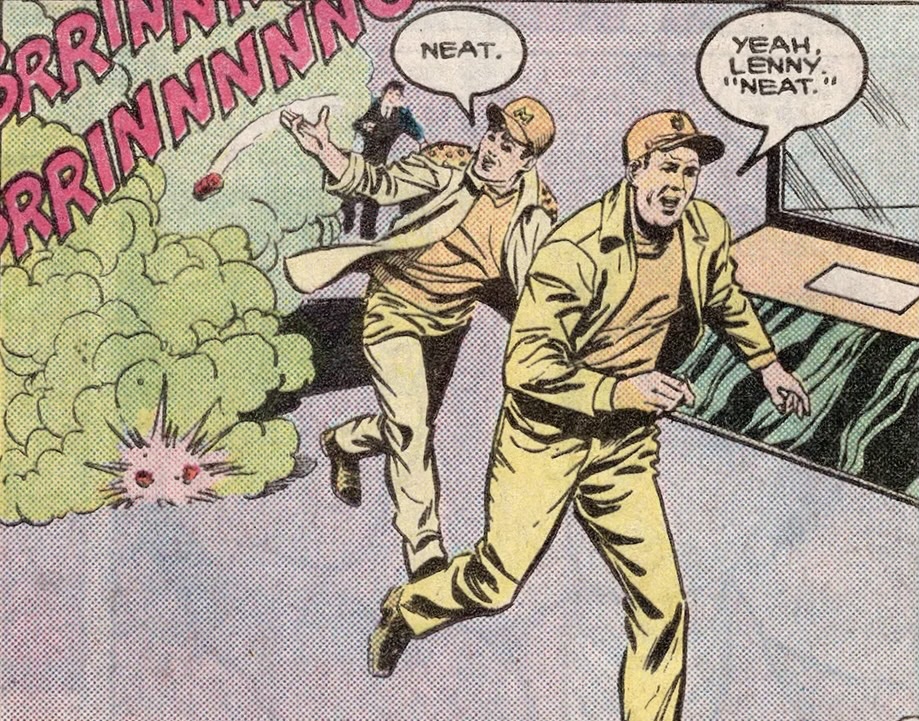
Now we arrive at the biggest loss of footage from the entire film: the first half of the Metro Club sequence. Lots of photographs and the Paul Fishman source music from the scene attest to its existence, but why it was not included on the DVD, even in workprint form, is anyone’s guess.
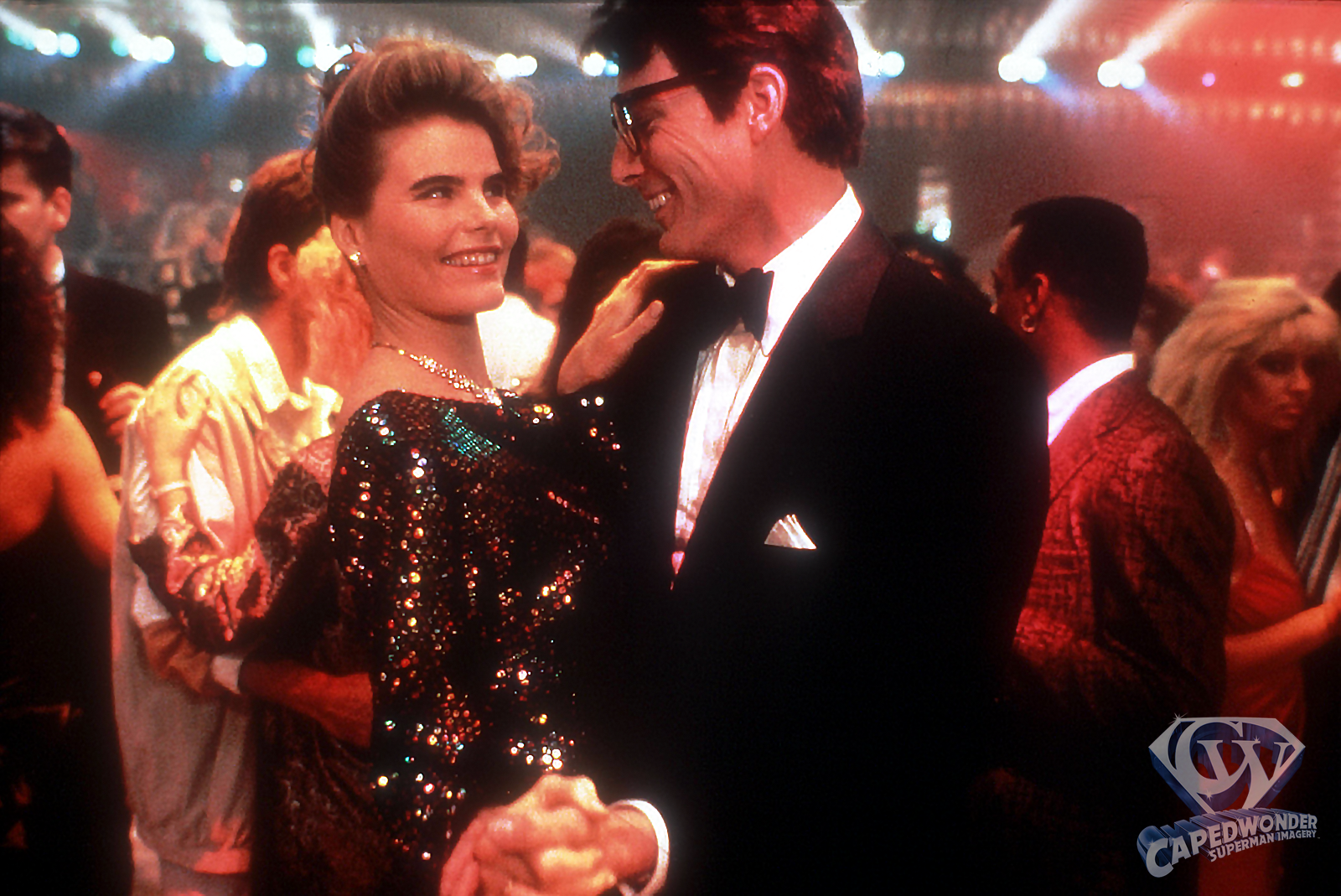
At one point Clark confesses to Lacy that he learned how to dance from his mom the night before his senior prom… 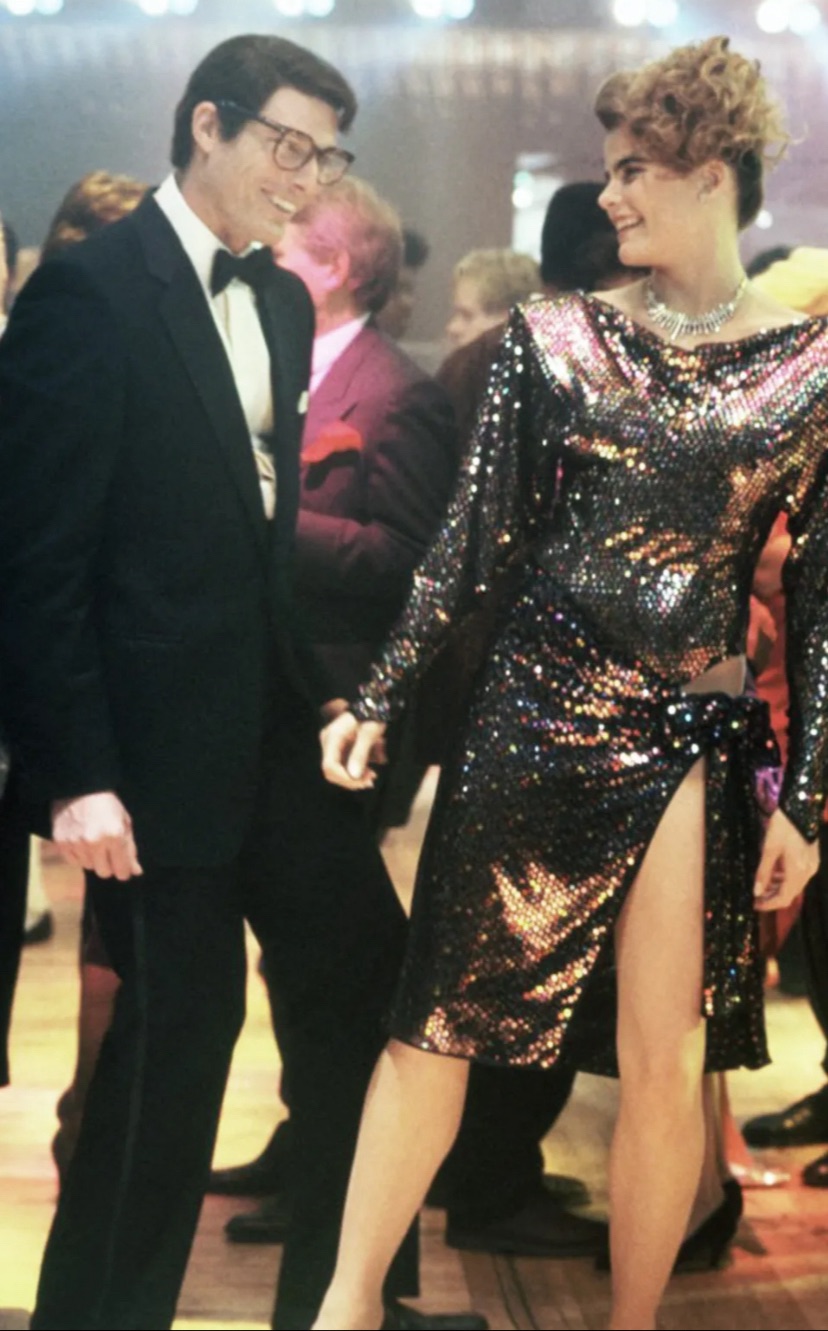
…and Lacy asks him if there’s anyone back home waiting for him. 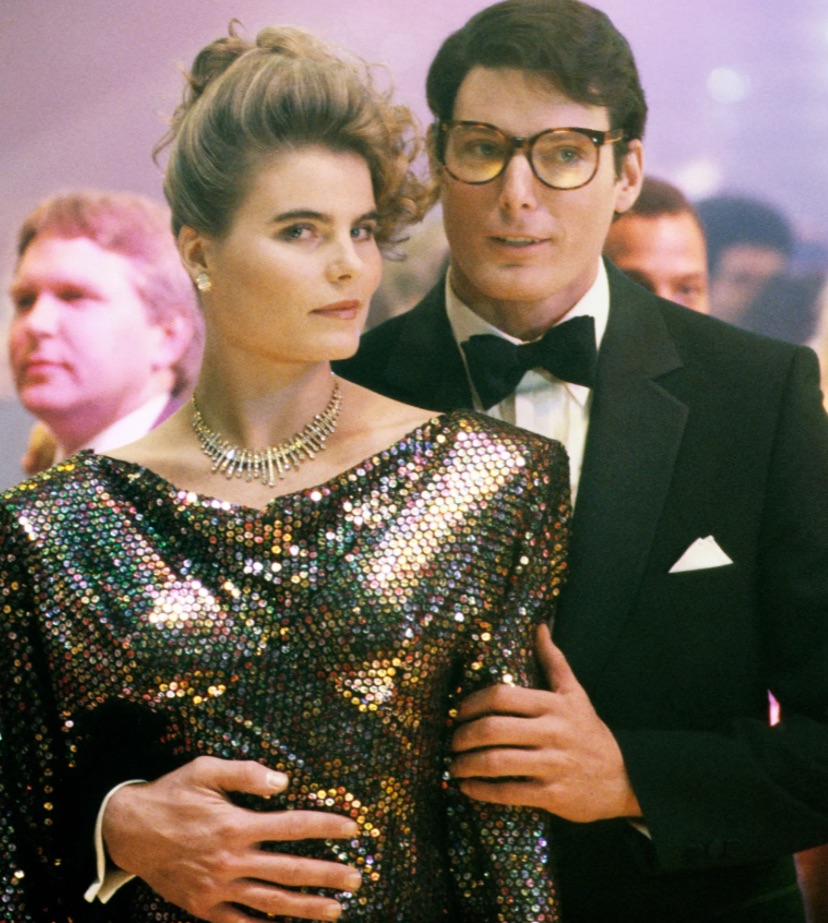
To this day fans still wait for the scene to be released in its entirety. More footage of the first Nuclear Man (Clive Mantle) follows when he barges into the Metro Club and gets his first glance at Lacy. It’s this moment that sets up the second Nuclear Man’s pursuit of Lacy in the second half of the movie.
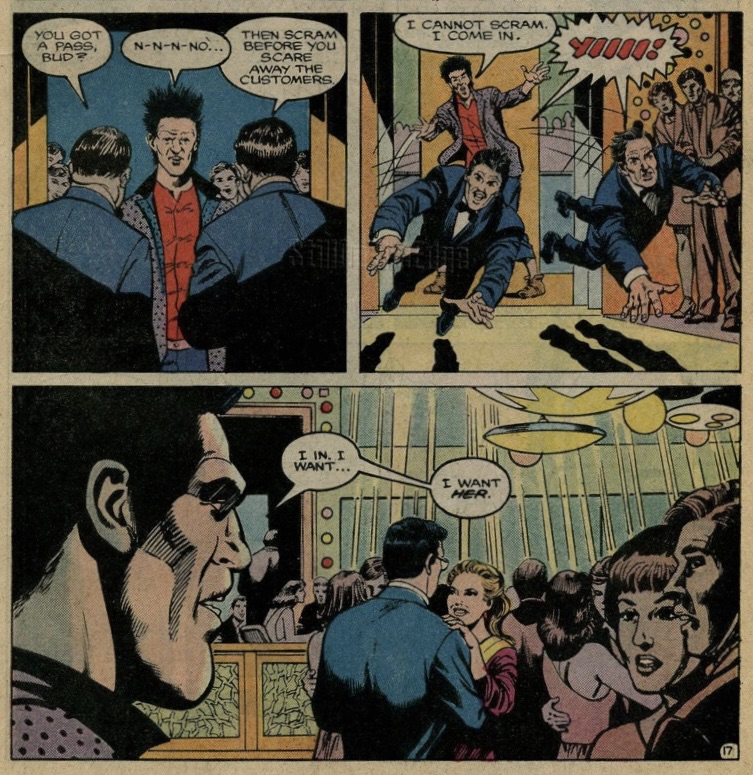
Ultimately he gets picked up by a drunken floozy and taken outside, and it’s then that the deleted footage of the second half of the Metro Club sequence begins.
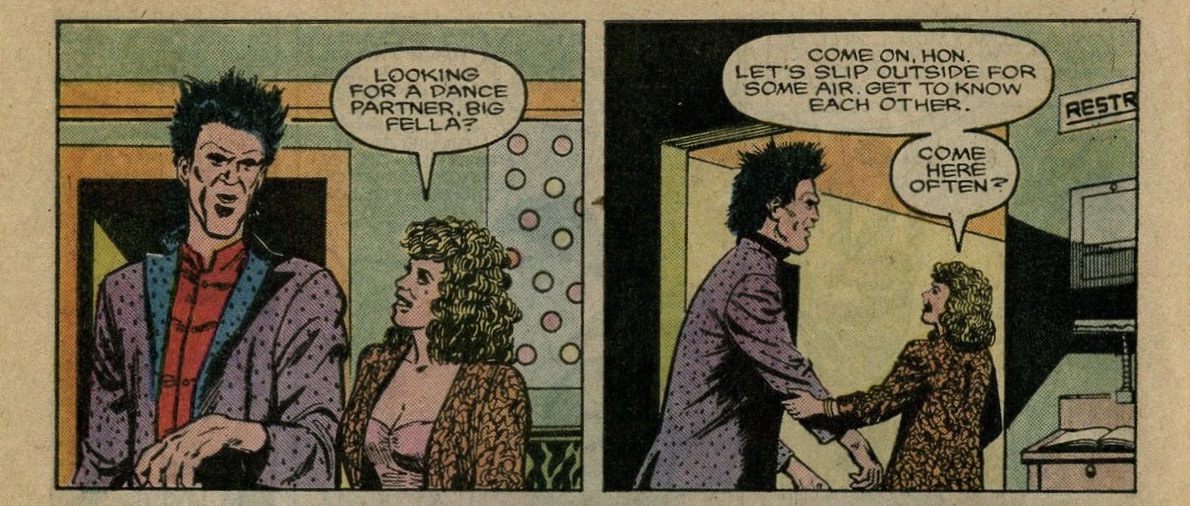
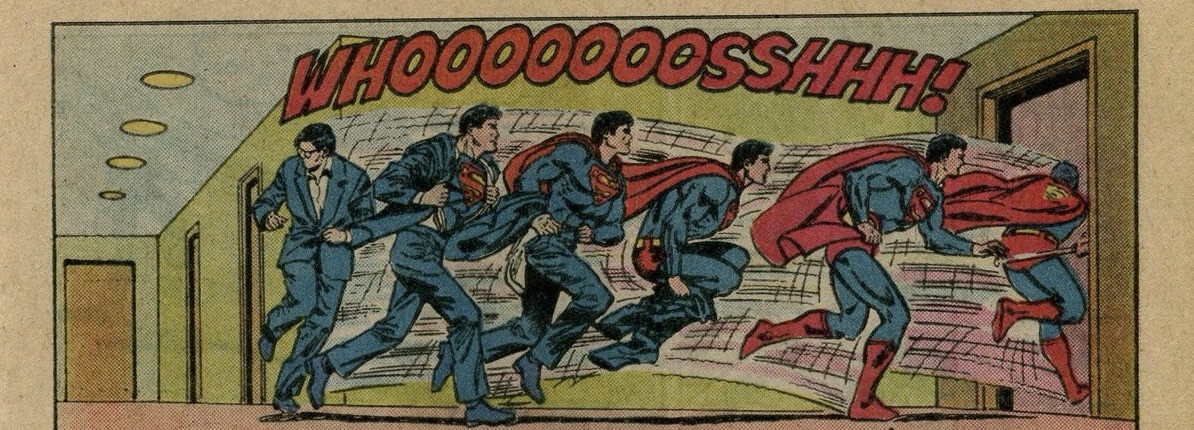
Even with the second half of the sequence in workprint format on the DVD and Blu-ray, there’s obviously some footage that was held back by Warner Home Video. This includes part of the fight where Superman intercepts a dumpster from the first Nuclear Man.
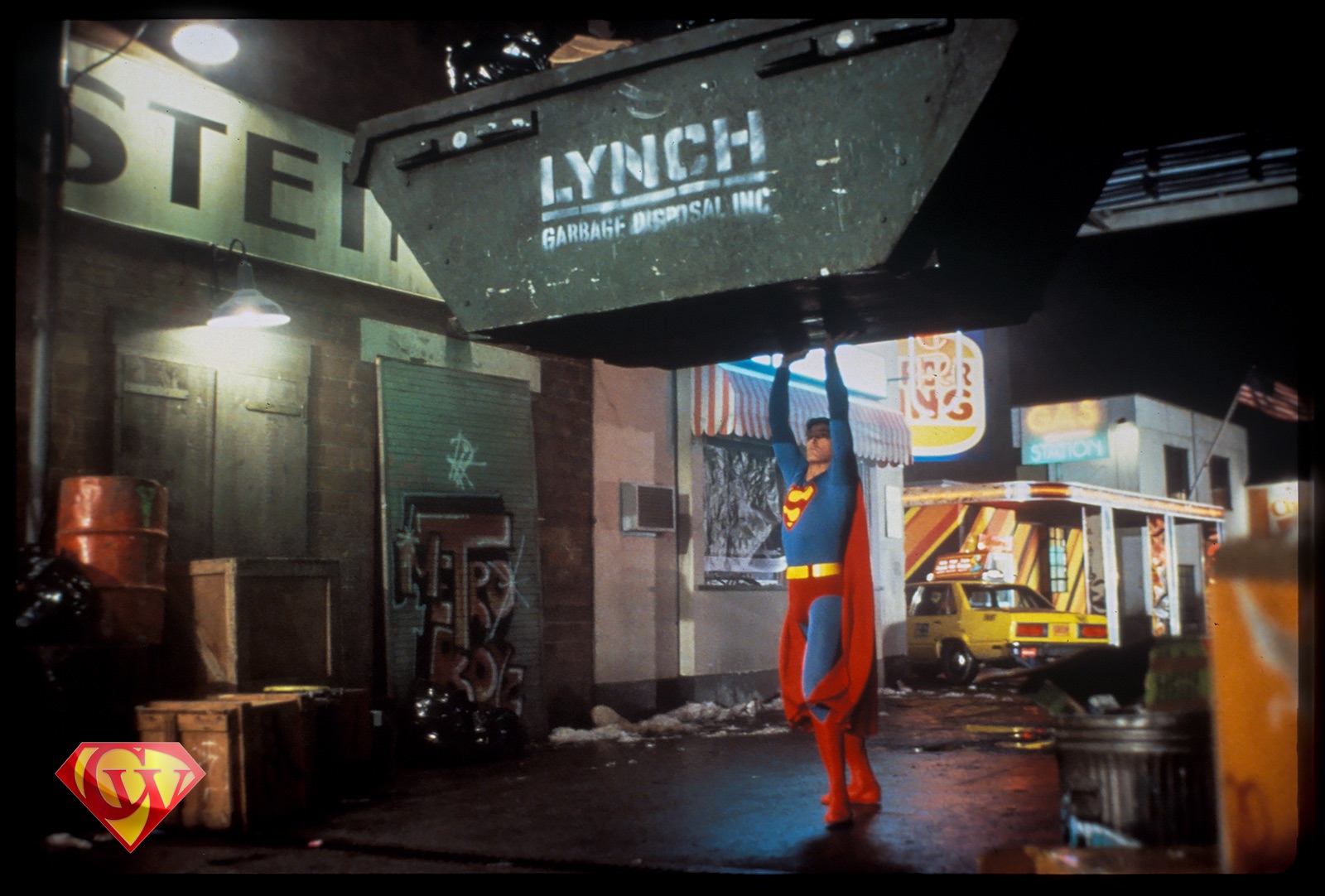
This moment occurs right before Superman turns the corner and gets knocked backwards by the Nuclear Man. What gives it away is the Burger King in the background. 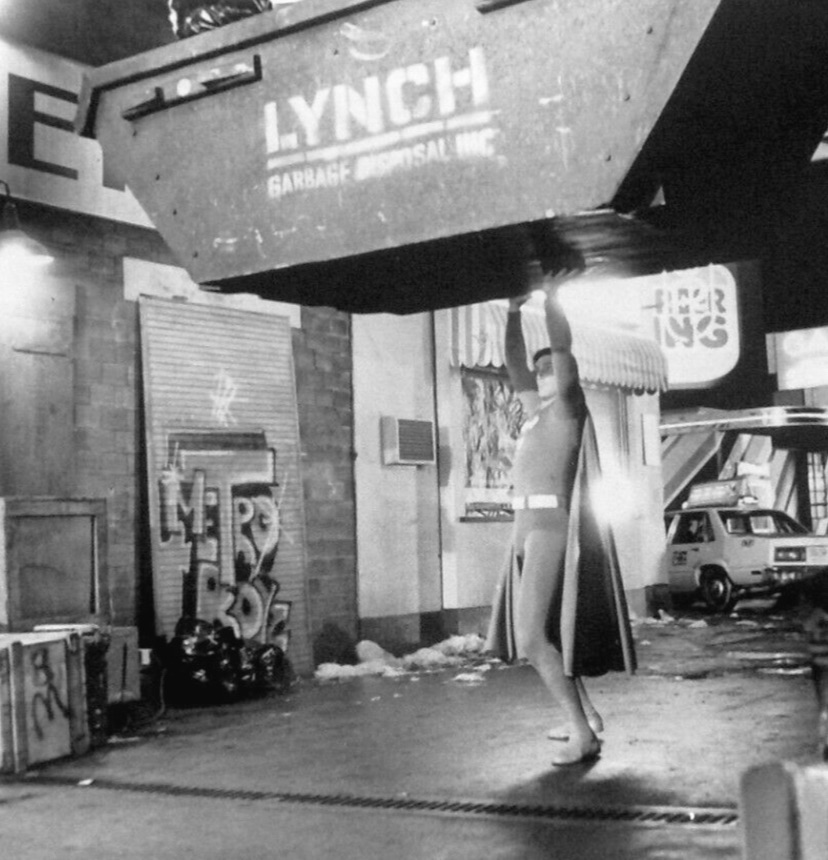
As opposed to the lagniappe that was included in the TV cut of Superman III, any lost scenes from Superman IV involving Christopher Reeve is a must. There’s also a moment when Superman stops in the middle (or at the end) of the fight and wonders who or what this mysterious creature is.
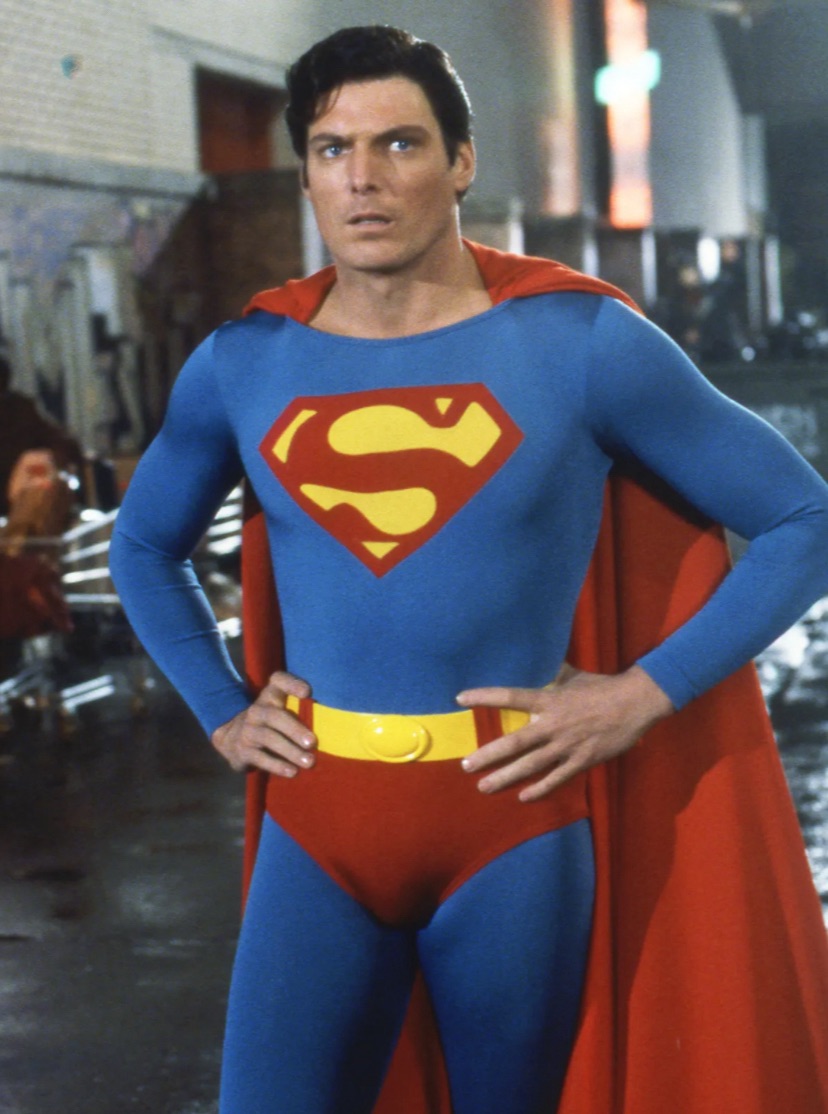
In a moment that occurs before Superman arrives at the United Nations, there is a short sequence of Lois and Lacy talking at a cafe about men. Margot Kidder confirmed in an interview with Starlog Magazine that the scene was filmed.
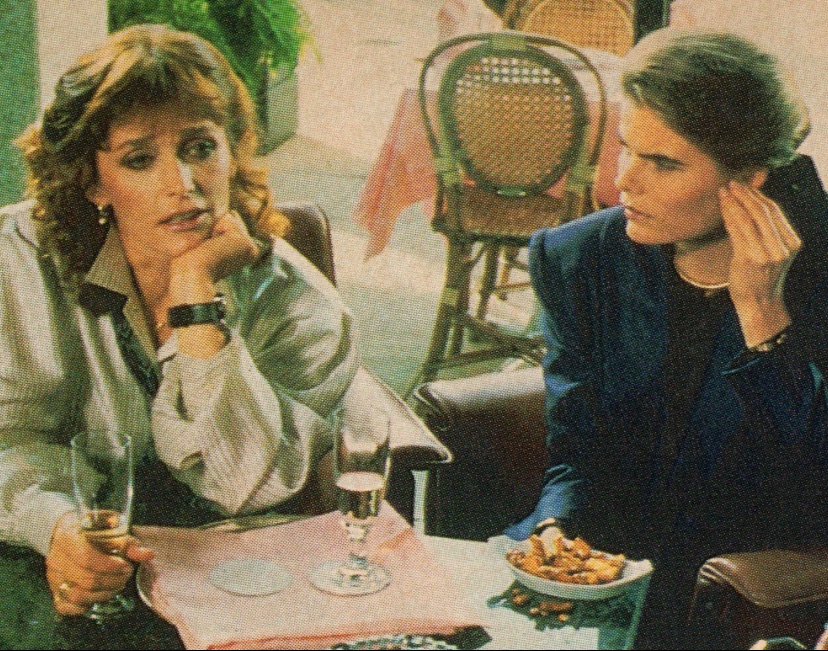
And here’s the dialogue of that scene as featured in the DC Comics adaptation.

Once Superman destroys the first batch of nuclear missiles, there’s a short sequence of the US and Soviet military leaders observing that he has destroyed 57 percent of the world’s missiles at that point. I want to say that one of the US military officers says something to the effect of, “He’s the only one I trust to do this.”
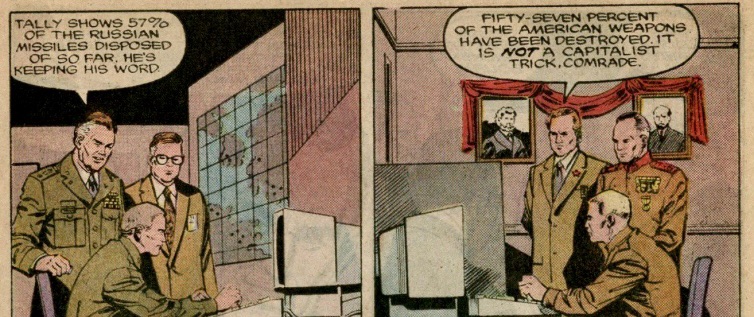
When Superman finally confronts Luthor and introduces him to the new and improved Nuclear Man, there’s an added snippet of the Nuclear Man showing off his powers, and Luthor pointing at him and asking, “Is that adorable?” This clip was featured in the international theatrical trailer from Cannon Films and one of the US TV spots, and the music underscoring the clip is included on the soundtrack CD.
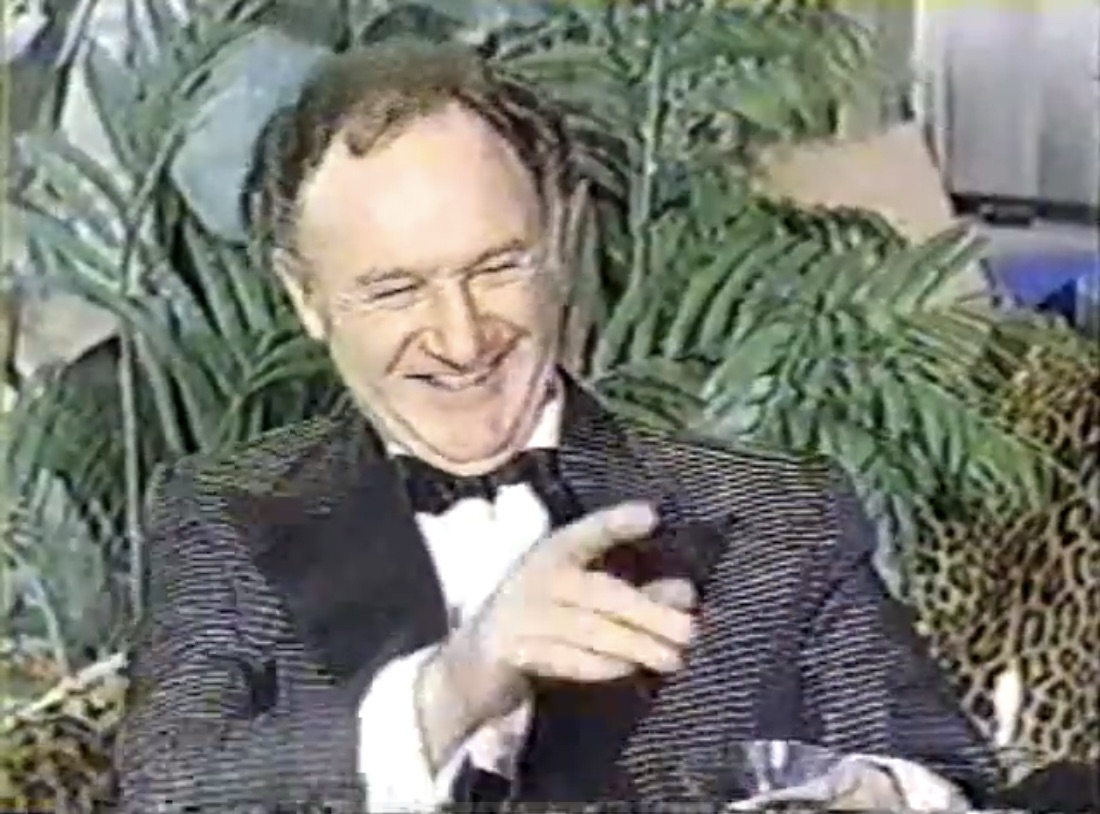
Mike Matessino further confirmed the clip’s existence in the liner notes for the FSM 2008 soundtrack collection, aka the Blue Box. But that’s not all. When Gene Hackman says, “When I escaped from prison, I had one thing on my mind: the end of Superman…” pay attention to where Christopher Reeve is standing. As Hackman says this, Reeve is standing right next to him. Then in the next shot, Reeve is standing several feet away.
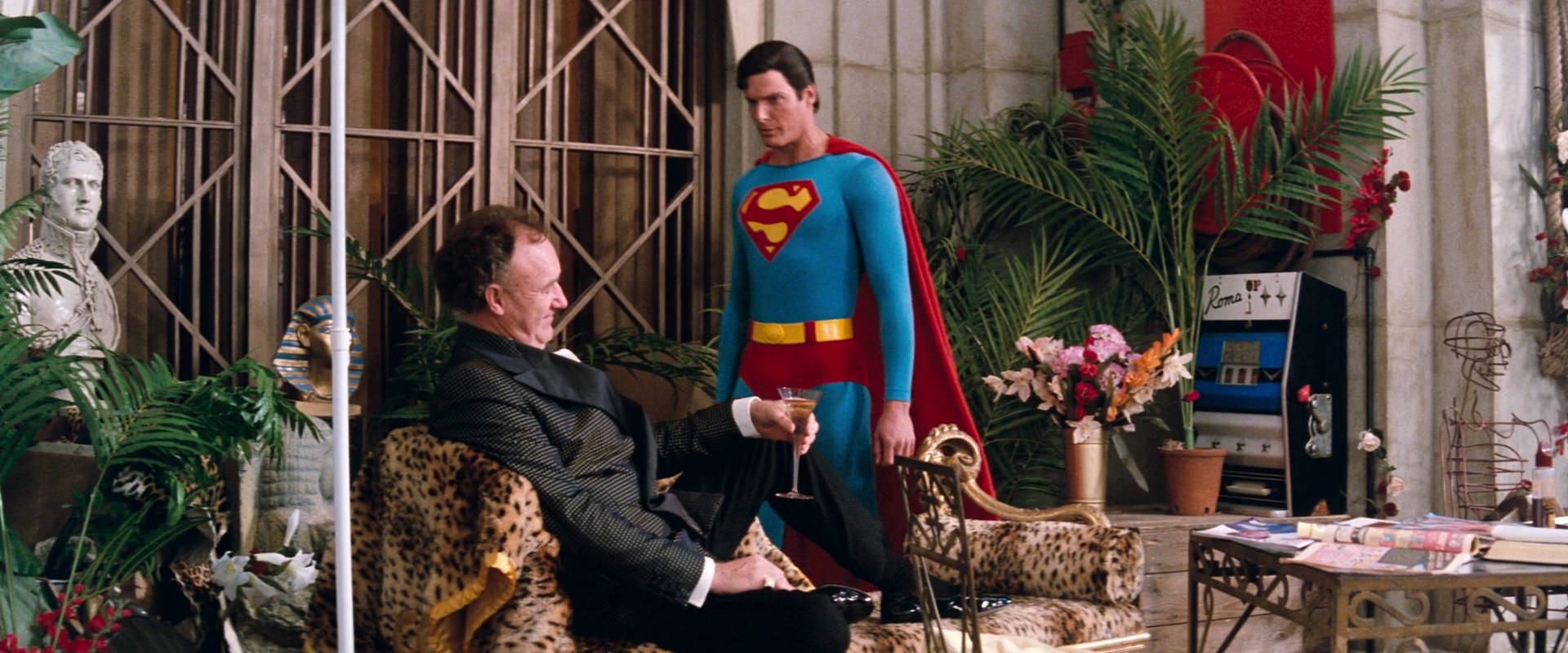
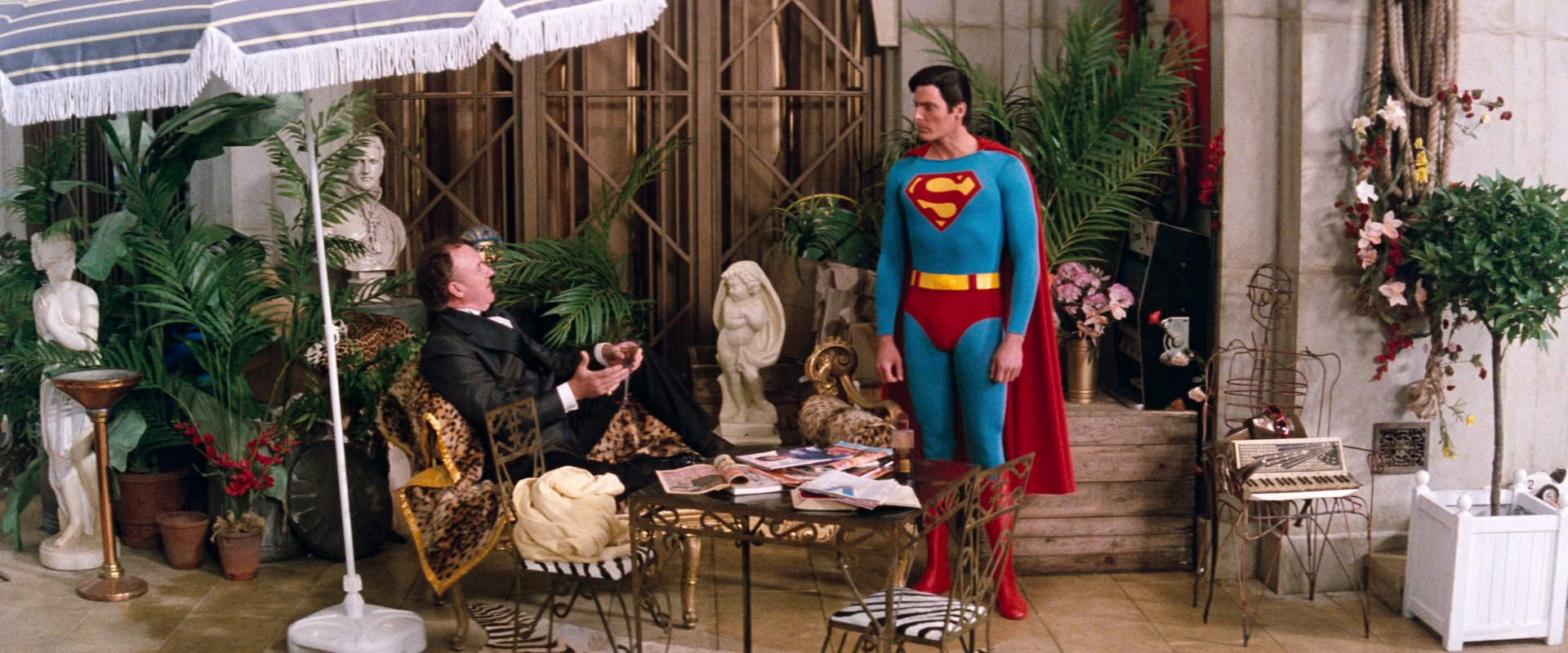
Notice where he is standing in these shots. The soundtrack CD further confirms that more footage exists, but it remains unseen to this date. However, it can be proven that at one point Reeve steps away from Hackman to look at the Nuclear Man, and we have some interesting trick that he shows off. This prompts Luthor to say, “Is that adorable?” In one behind the scenes video shown on Entertainment Tonight, it showed Reeve clearly stepping away from Hackman. I clearly recall seeing this video, but it’s been a while.
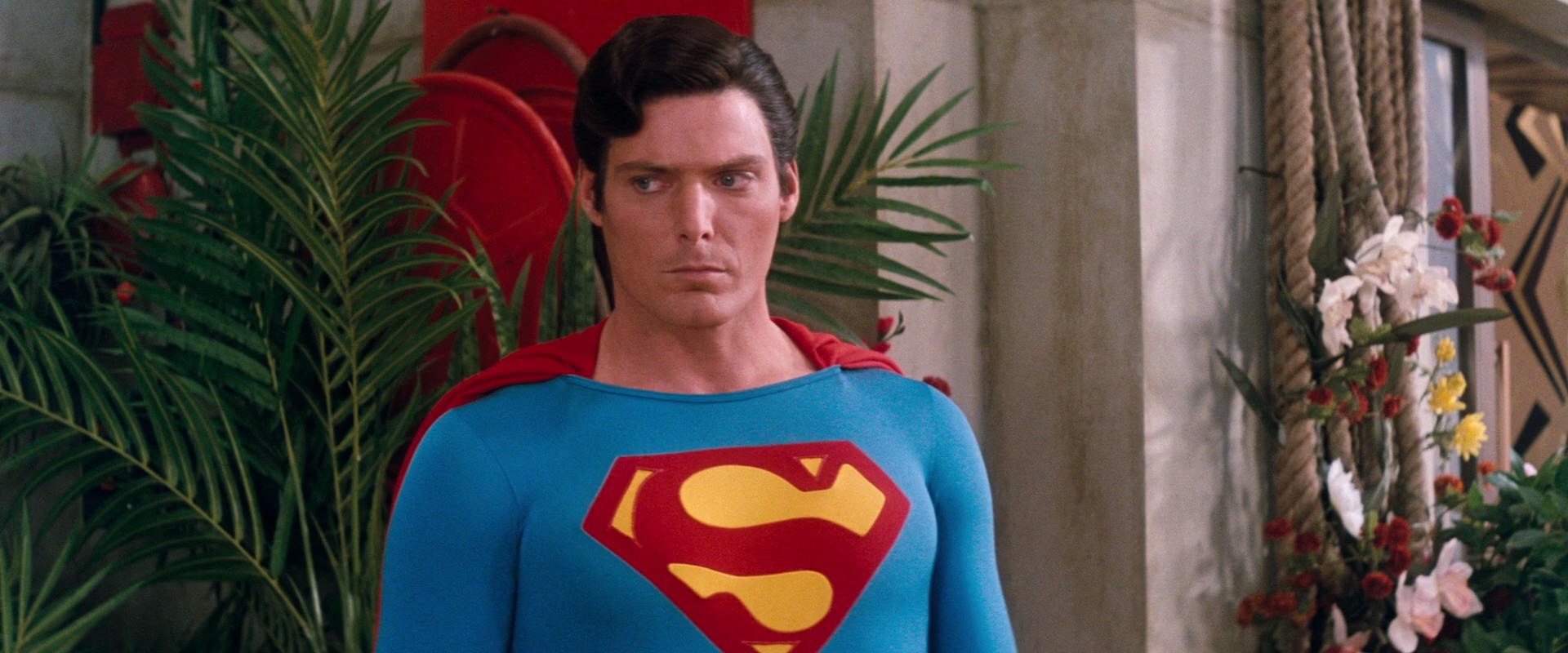
That missing footage is what causes Superman to now stand several feet away and look back at Luthor. After the Nuclear Man has defeated Superman in battle, there are two added moments at the Daily Planet featuring Lois. The first one is a clip where she attempts to call Clark but can’t get him to answer the phone. We have documentation of the moment from the script and the DC Comics adaptation, but no proof yet that the clip was filmed.
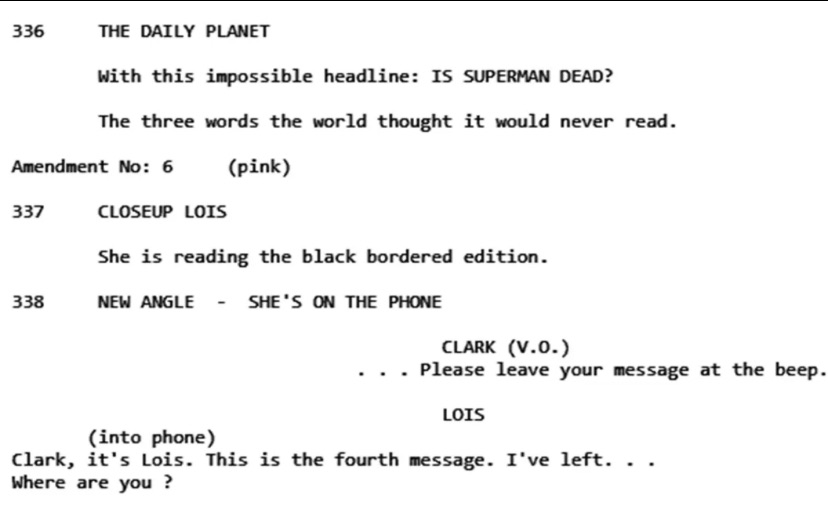
After Lois bundles up Superman’s cape and leaves, she runs into a banker named Bill Compton, who is looking for Perry White. This scene was filmed with actor Dennis Creaghan, and the proof comes in the film’s end credits, which contains his credit.
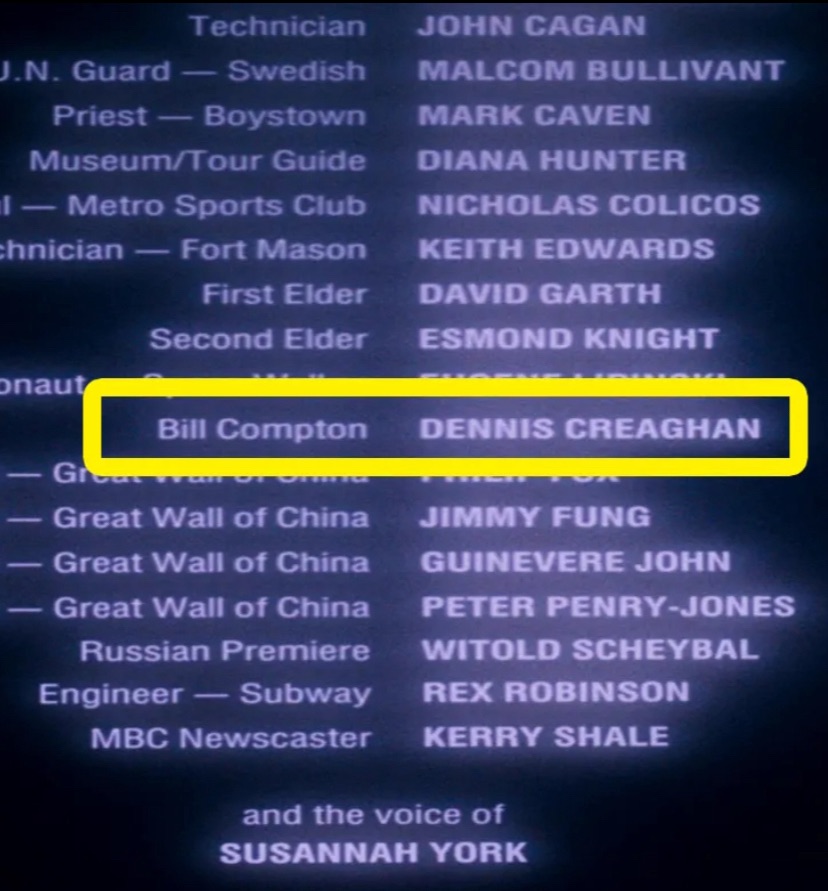
Another casualty of the editing process. The next sequence is one that occurs when Luthor travels the world and meets with his shady nuclear arms dealers. The deleted scenes feature him with General Romoff in Russia and Harry Howler with the US military, but there is also (and very likely) a moment when he meets with Jean-Pierre Dubois (played by Jim Broadbent) and his team of nuclear weapons dealers. Not many pictures of this scene exist, only a couple of pictures of Gene Hackman, but if you look carefully at the pictures he is wearing a different outfit than in the scenes with Romoff and Howler. I also want to say that I recall seeing a behind the scenes picture of the two actors about 15 years ago, but I cannot be sure.
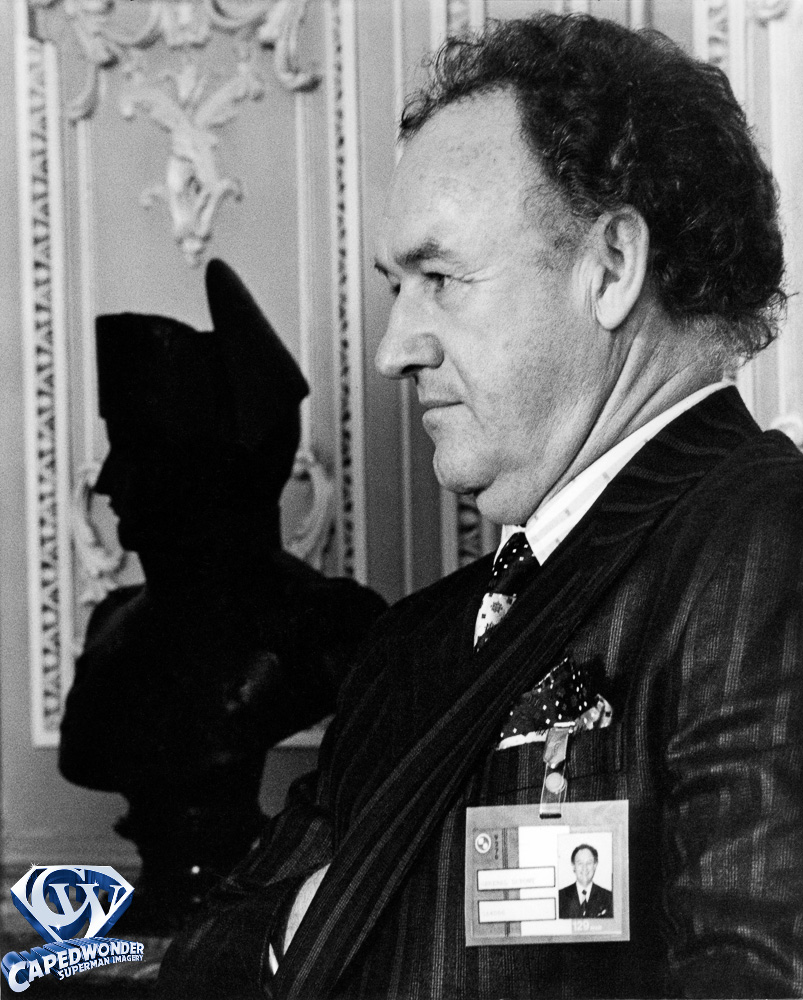
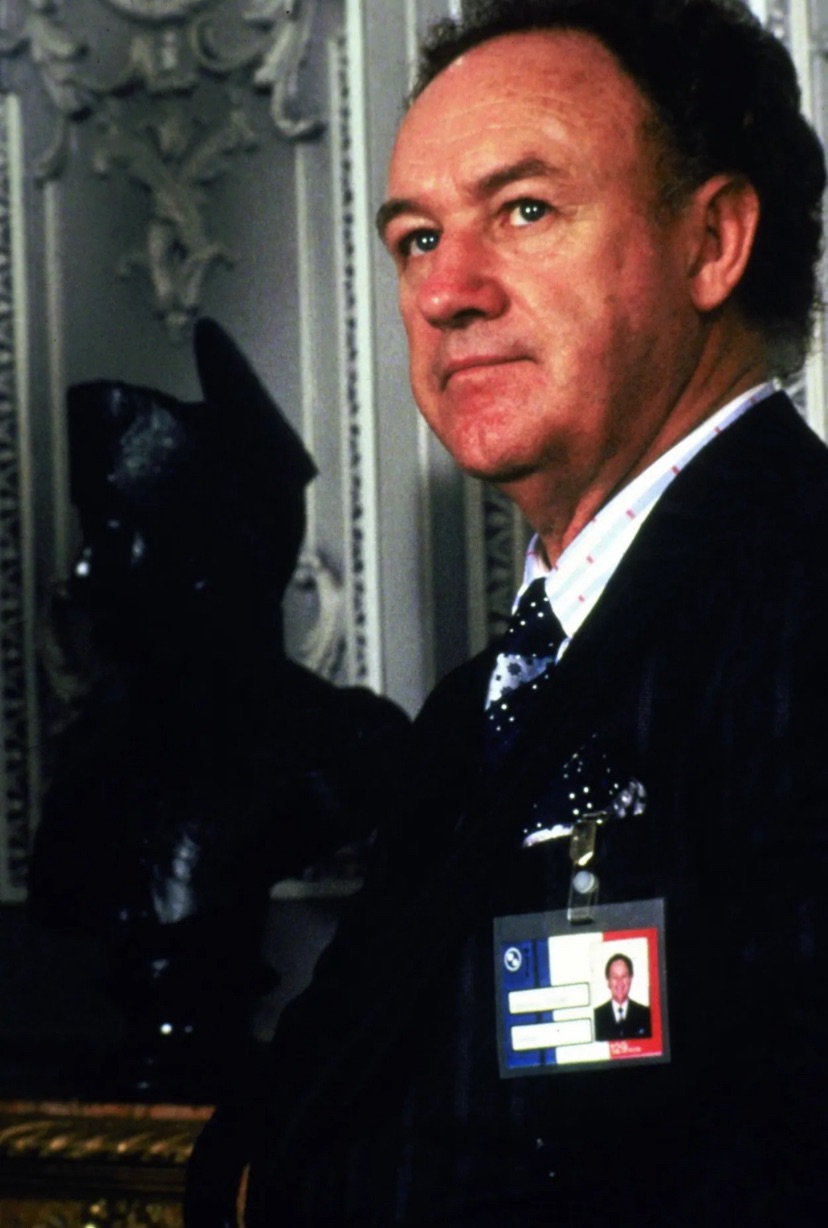
In these shots, his tie and handkerchief are different, and his name tag features the French colors of blue, white, and red. In addition, there is also a script excerpt of the scene indicating additional dialogue between Luthor and Dubois. This occurs after his meeting with the other two dealers, but based on the scoring of the sequence I would place it before those meetings. It’s likely that this scene may have been cut early in the editing process.

Once Luthor has dismissed his nuclear dealers, he and the Nuclear Man have a bit of dialogue. When Luthor says, “What’s to fear?” there is an added bit of the Nuclear Man responding with, “Destiny.” Luthor then reaches for an umbrella and holds it over the Nuclear Man, exerting his control over his own creation.
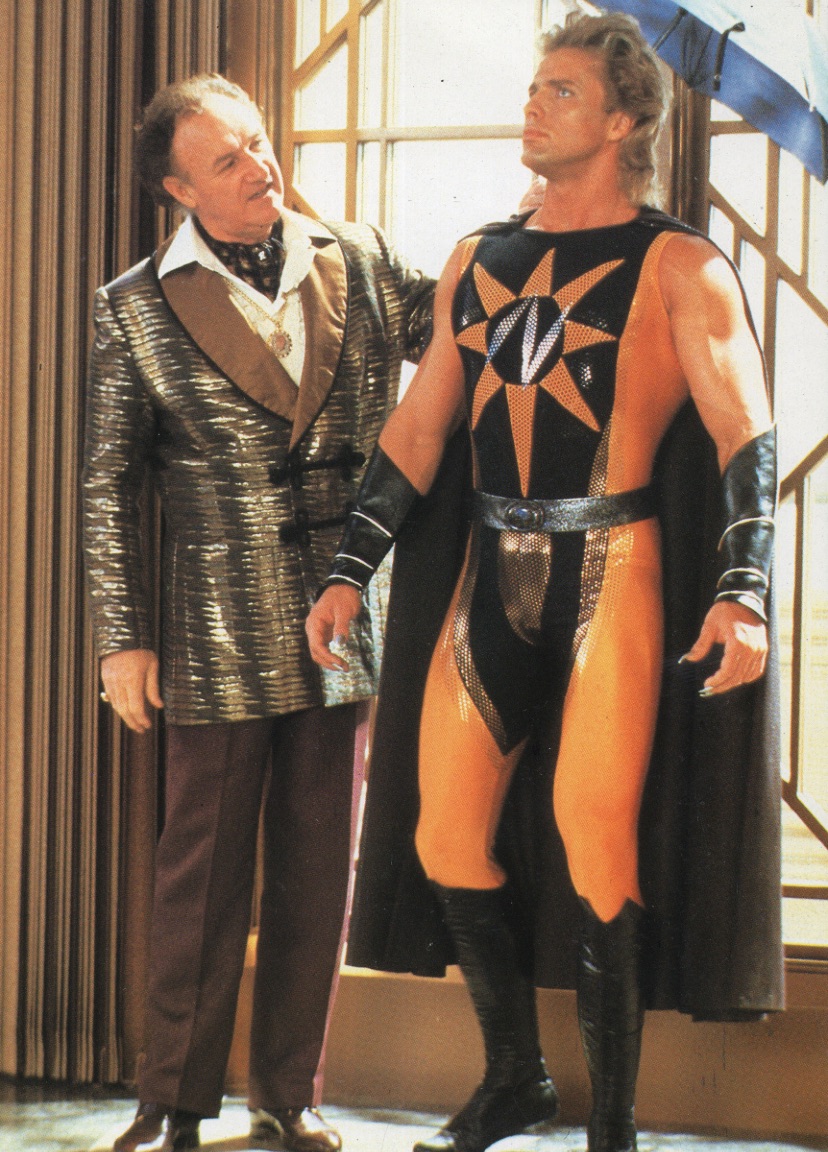
Before Nuclear Man leaves to abduct Lacy, Luthor comes in and says he plans to take the Nuclear Man to the United Nations to get his point across that he’s in control. Nuclear Man asserts control and burns up all of Luthor’s money before leaving. Numerous pictures confirm that this scene was filmed.
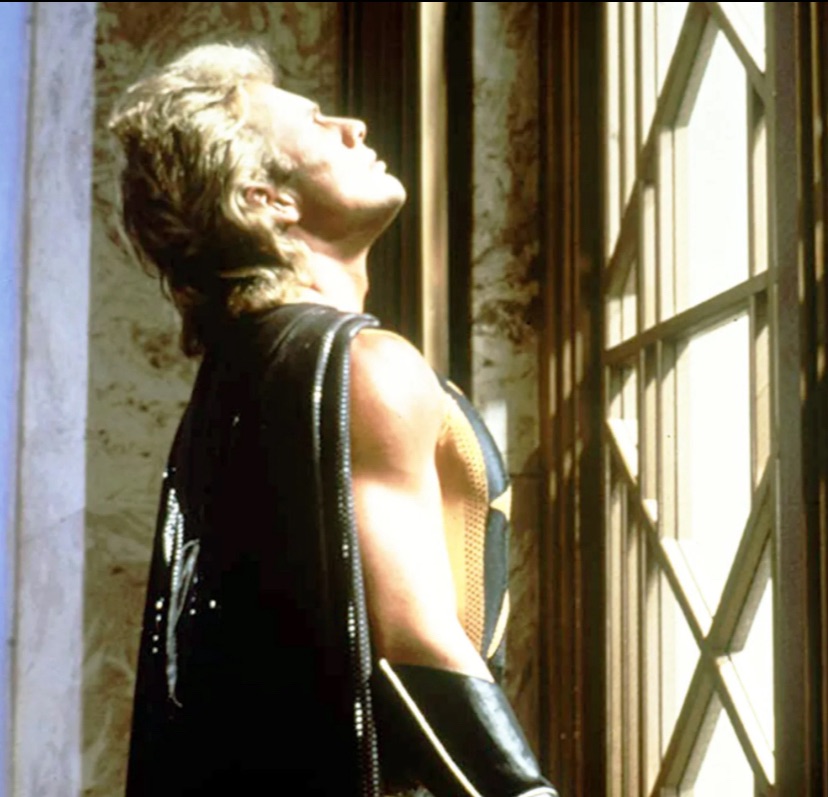
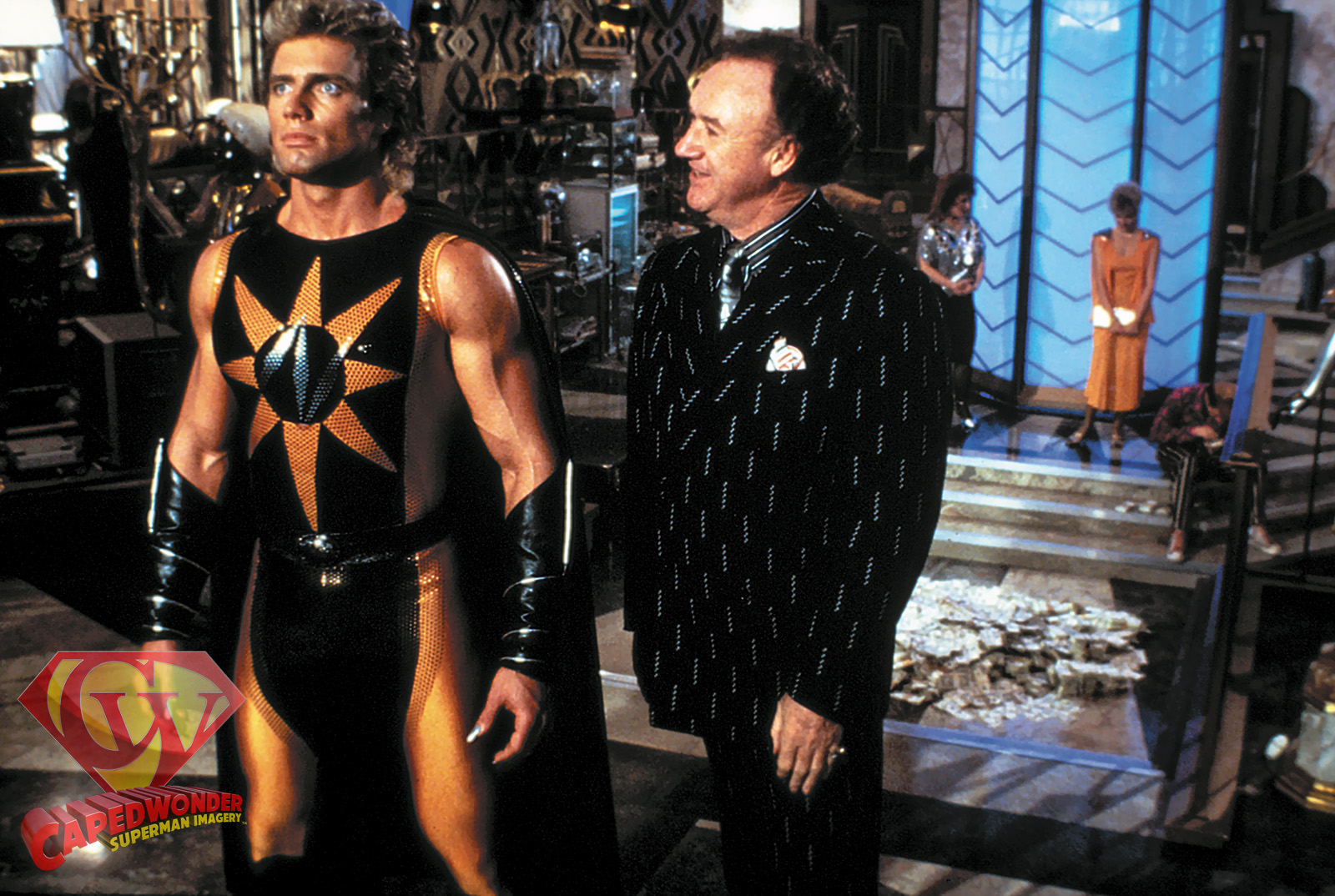
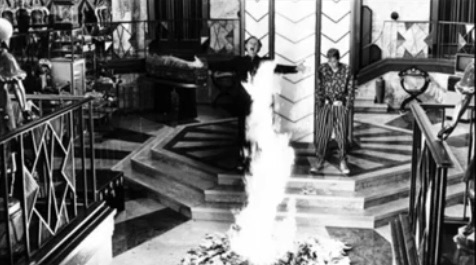
It looks like Gene Hackman really hammed it up in this scene. This next one, I kid you not, is a lost moment that remains unseen. It occurs during the fight between Superman and the Nuclear Man. Once Superman drops Lacy towards the ocean, the Nuclear Man changes from a missile back to his human form and flies towards Superman, turning it into a game of chicken. All of a sudden there’s a missing shot, and the next thing we see is Superman crashing into the Nuclear Man, averting a potential missile attack between the United States and the Soviet Union. I’m thinking this missing scene is intended to be a visual effect of the Nuclear Man in flight. There’s no way to tell.
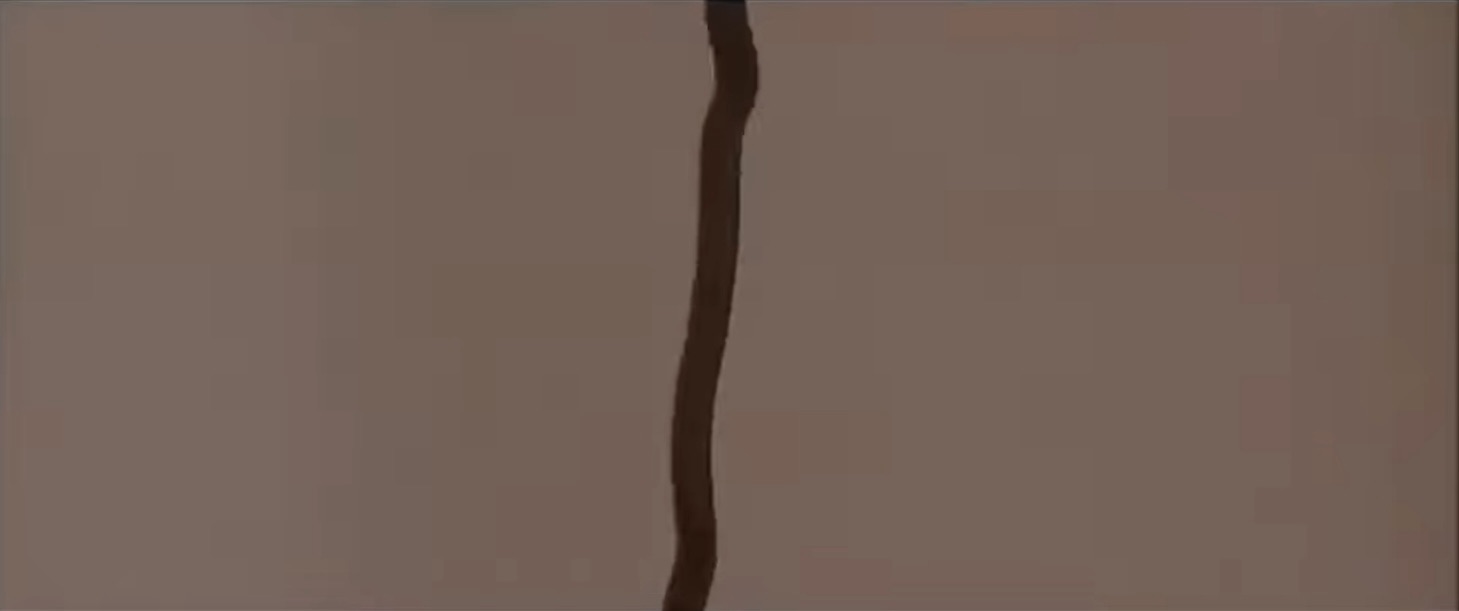
From the workprint of the scene on the DVD. During the fight in Metropolis, Nuclear Man levitates a taxi can with an elderly woman inside, and Superman successfully catches the cab. The elderly woman gets out and asks how much she owes him. Storyboards and behind the scenes photographs point to it being filmed, and in an episode of the CapedWonder Superman Podcast, Martin Lakin confirms that the scene was in fact shot for the movie. But it’s also likely that this moment was cut early in the process, as the music for the scene was scored to the final version of the sequence.
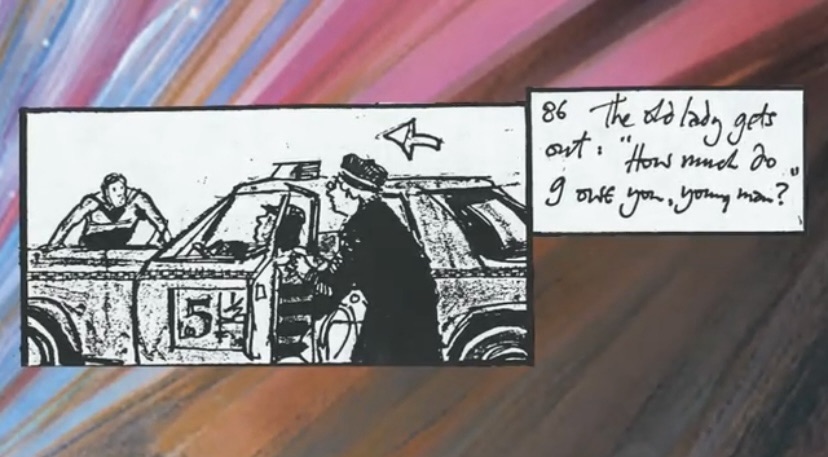
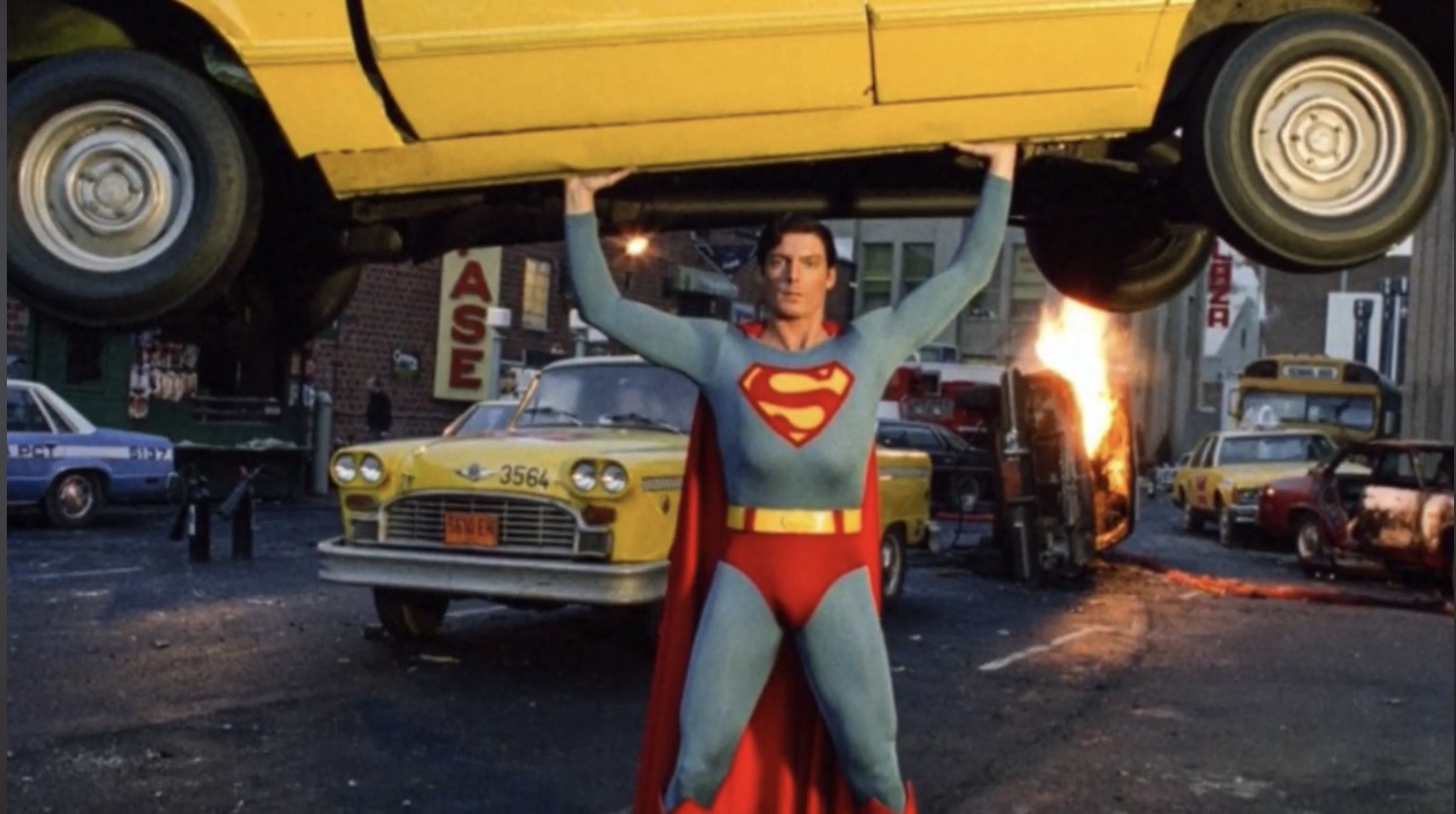
There are a couple of additional shots of the lunar fight that didn’t make it into the final film. Behind the scenes pictures point to those moments, but seeing as how the film was cut together and scored, it’s possible that those moments were cut early on in the editing process.
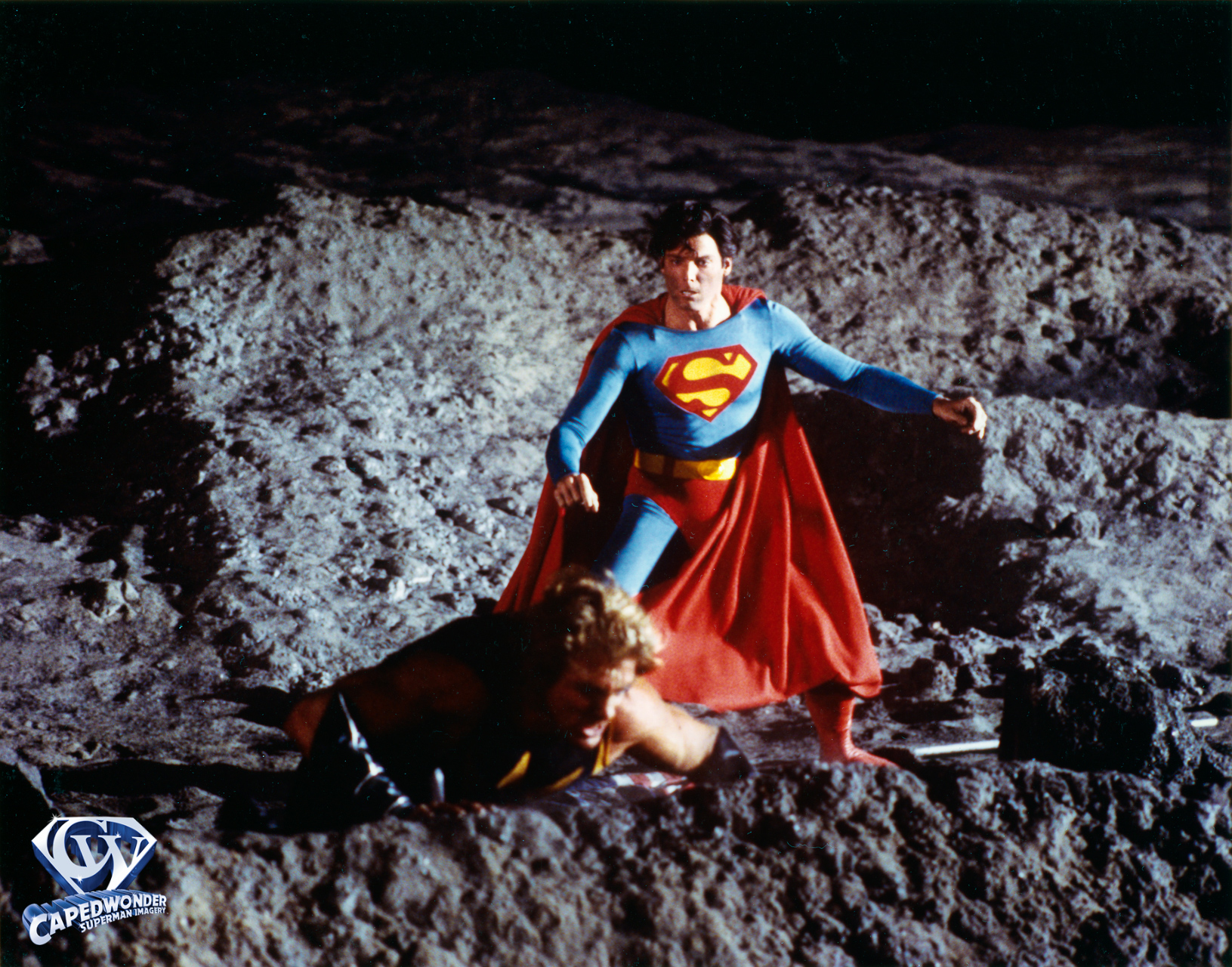
Towards the end of the film, Clark and Lacy say their goodbyes (in a deleted scene on the DVD). Another moment that occurs after that is when Lacy’s cab pulls away and Clark turns to go into the Daily Planet. Behind the scenes footage point to this moment being filmed, but since the music for the scene was scored, it’s likely this extension was cut early in the editing process.
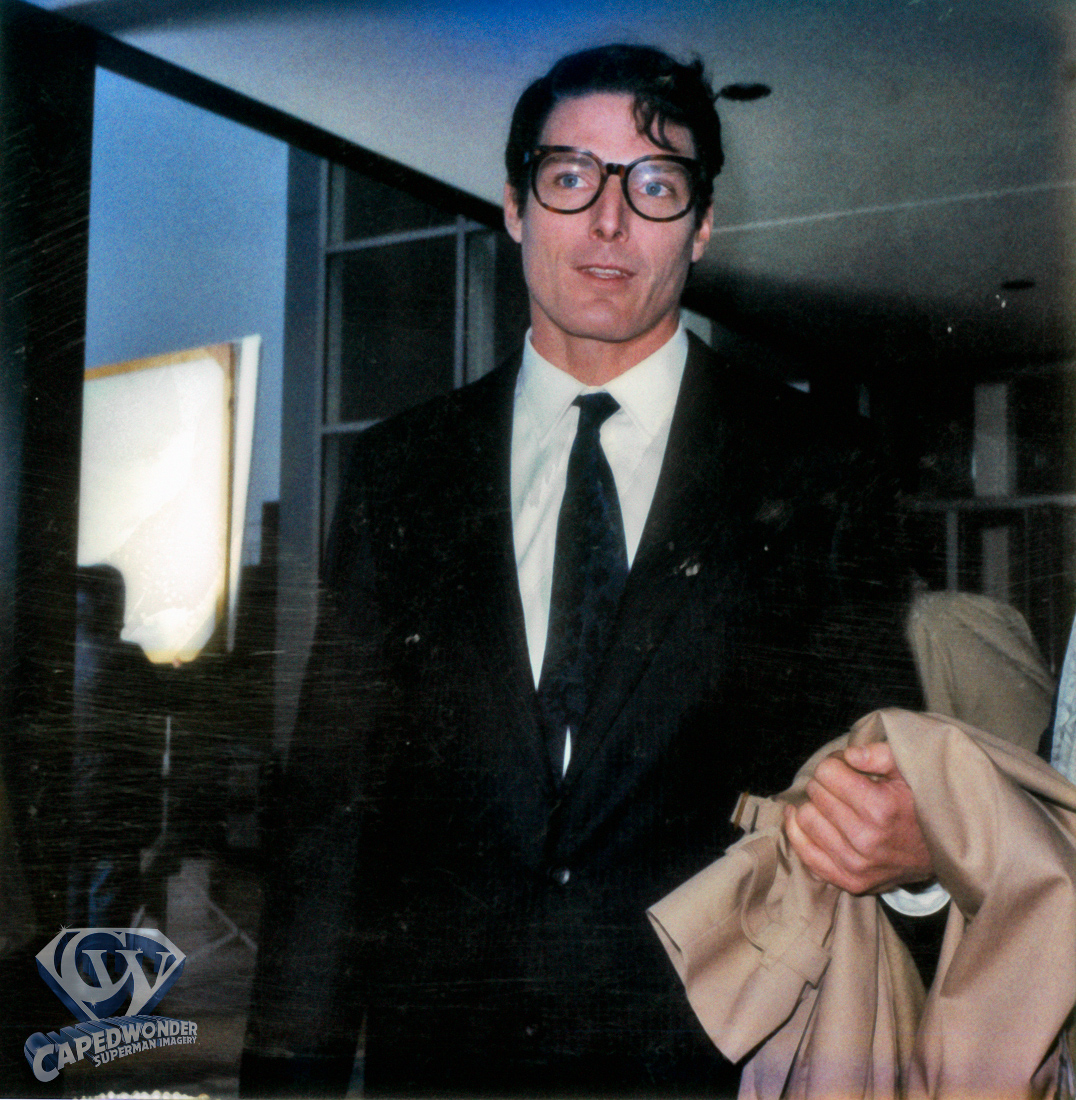
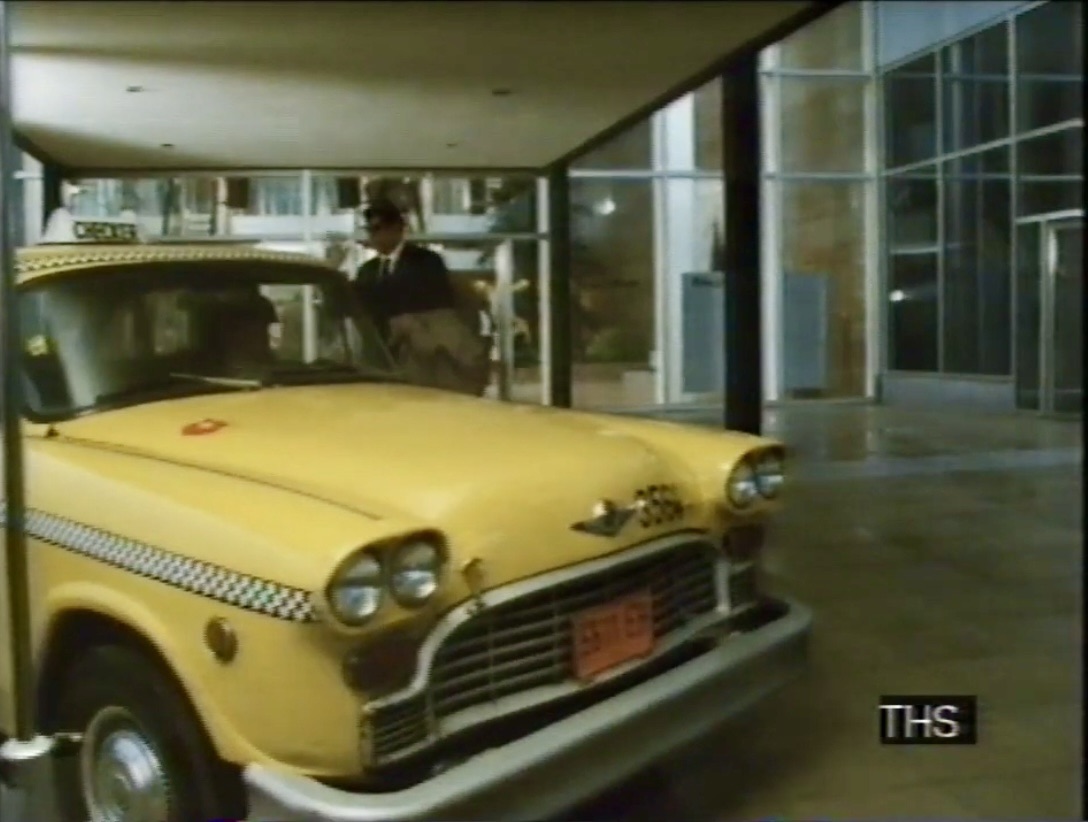
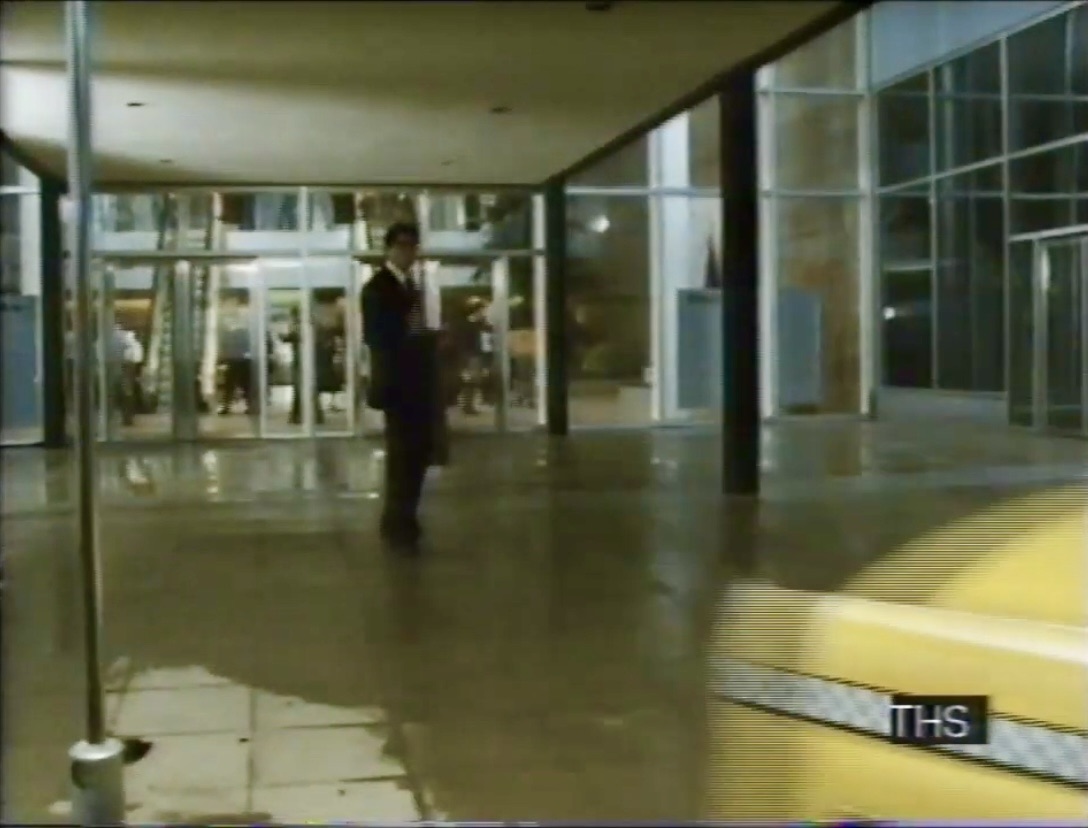
Editing a film can be a tricky process. Filmmakers want to make sure that everything that is shot gets into the first cut of the movie, and then they start trimming the fat to make sure that unnecessary bits and pieces are pulled and the film is brought together to what audiences will likely see. All films and television shows go through such editing processes. One such case in point: Star Trek: Generations, a movie that originally ran two and a half hours in length before it was cut down to 118 minutes. That meant over thirty minutes of bits and pieces gone from the film. I’ve seen that first cut, and those added bits and pieces really drag the movie into a slow ride.
But wholesale editing of a movie to get it into theaters… that’s another story. Superman IV was not the first time this happened. It happened sixty years earlier with none other than Fritz Lang’s magnum opus Metropolis, which was shown to German audiences one time in 1927 before it was cut down from 155 minutes, then slammed together and restructured to around 90 minutes for distribution in the United States and other countries. And it was decades before it was finally put back together to bring it back to Lang’s original vision. Even then, by the time 2008-09 rolled around, the last surviving print was located in a museum in Buenos Aires, Argentina, and that was a 16-millimeter print that looked terrible. It’s a miracle that the print was even located, confirmed, and restored to as best a quality as possible for viewing. And all that was without a script! Music logs, intertitles, and German censorship logs were all used to create the most complete version ever, and even then some footage couldn’t be used because of time and poor quality of the 16-millimeter print.
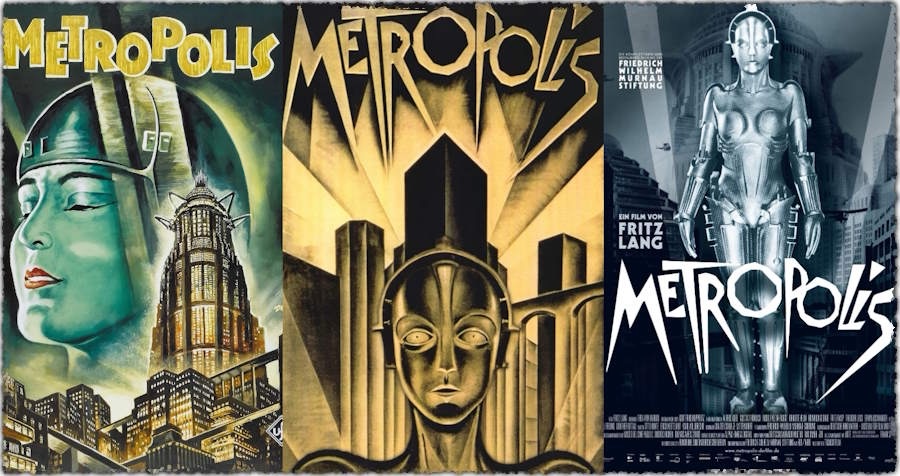
Nearly 100 years later, Metropolis remains the grandfather of all science fiction films, and without it Superman wouldn’t have a city to call home. It’s a cautionary tale that still stands up to time, and it’s also why studios should hold onto all its footage from films and television shows. Superman IV falls into that same category as Metropolis, a film that had potential but was severely butchered and slammed together into an incoherent narrative just before its release. And it didn’t help that Cannon cut the film’s budget before filming began and shuffled its budget over to their numerous productions at the time, including Masters of the Universe. Anyone who has followed the story is aware of these lost moments, from Starlog to the syndicated TV broadcasts beginning in April 1990, to the Japanese laserdisc, to the DVD and Blu-ray releases, and of course online websites. And this not only includes all of the deleted scenes but those lost moments that have yet to be released in their entirety.
It was confirmed in 2018 that Warner Bros. had a print of the complete 134-minute cut in their vaults, but in what shape this cut is in, nobody knows. After the successful release of Zack Snyder’s four-hour cut of Justice League in 2021, there was an online movement that continues to this day on social media called #ReleaseTheFurieCut. And hardcore Superman fans want to see this cut. I know I do.
Let them know. Make your comments known as politely as possible and to the point. A Blu-ray of this from the Warner Archive Collection would be a huge seller, along with the extended TV cut of Superman II. We’re coming up on forty years since its release. We should have a chance to see it before time lays waste to it.
A rare TV spot from Chile. Warner Bros., please make this happen. (Some of the photographs in this blog are used courtesy of CapedWonder.com.)
-
The Man of Steel and Those Colorful Metaphors
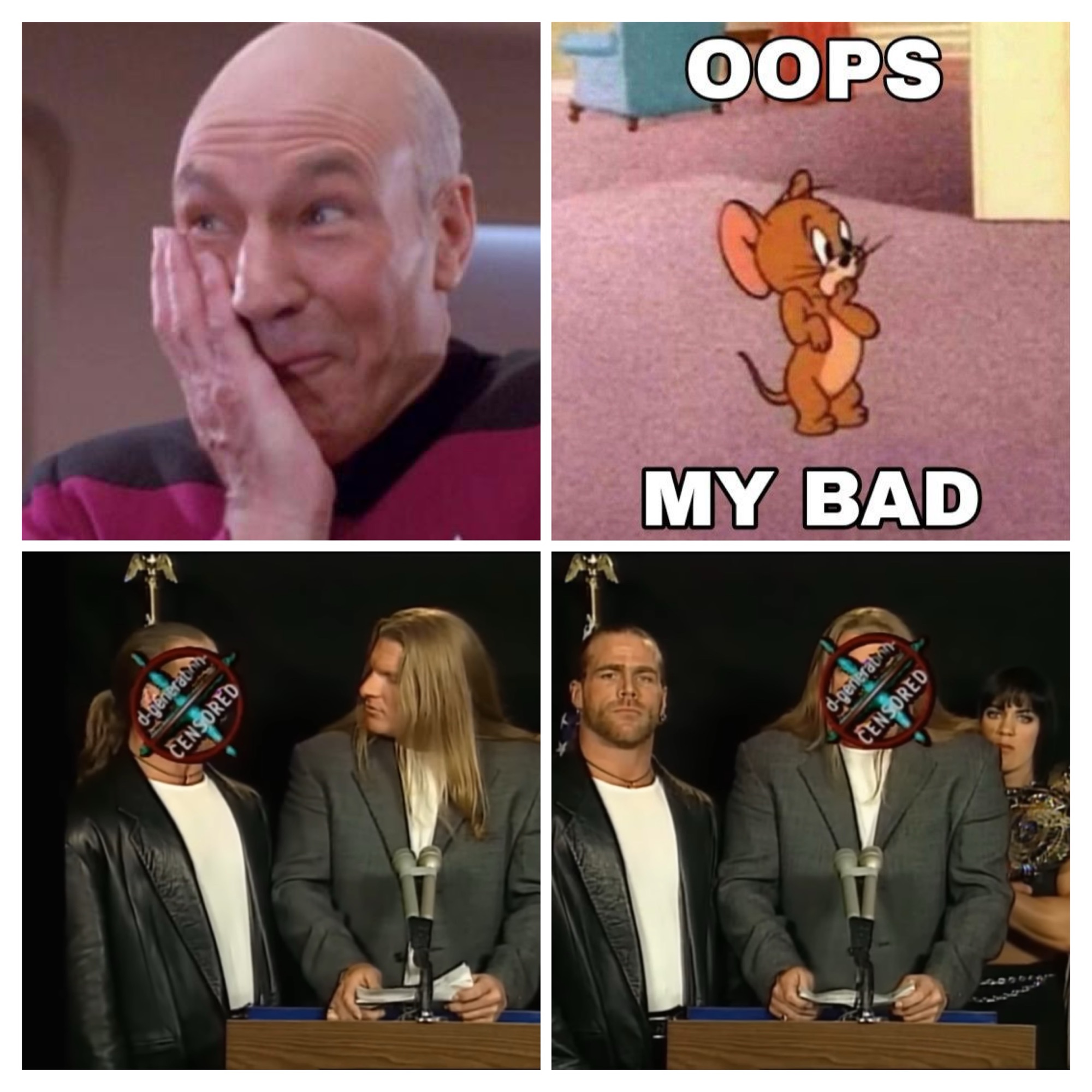
Four-letter words. “Wordy durds” as I heard it growing up. Unwholesome talk.
“You mean the profanity. That’s just simply the way they talk around here. Nobody pays any attention to you unless you swear every other word…” – James T. Kirk, Star Trek IV: The Voyage Home
Or in the word of Captain America…
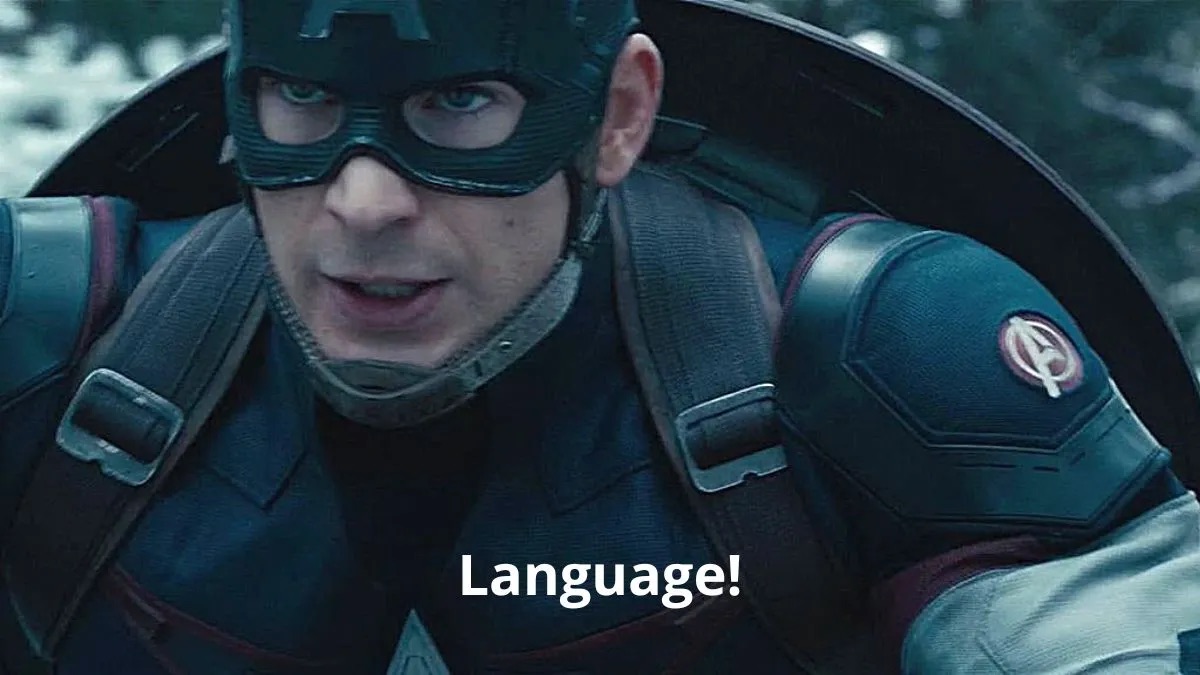
Before you get any thoughts, let me just say, no, I’m not playing the language police here, nor am I condoning the language that was used in the first three Superman movies. Rather, I want to take a straightforward approach at how and where such “wordy durds” appeared in those movies and how they were cleaned up for the extended TV broadcasts. (Surprisingly, Superman IV is the cleanest of the films where the language is concerned.)
It’s hard to believe that language in movies has been around for nine decades now, and we have this person to thank for it all:
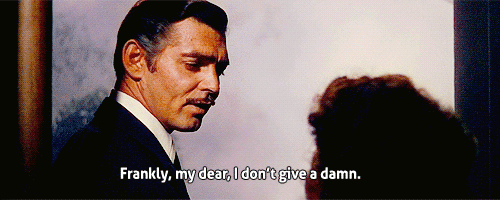
And that’s straight from the end of the novel. By the 1960s, language broke through on television, and this is probably the most notable culprit:

Enough said. Shocking back then in 1967. And then in the 1970s came George Carlin’s famous routine about the seven things you can’t say on television. Not going to share that with you, you’ll just have to look it up for yourself.
Over the years the networks have had to rely on what could and couldn’t be said (or shown) on television because of the rules and guidelines established by the Federal Communications Commission (FCC). And they still do. Nowadays with the explosion of streaming services, anything goes. Those guidelines are thrown out the window. So needless to say I was a bit floored when I saw none other than Sir Patrick Stewart—Shakespeare trained, Olivier award winner, writer, producer, Professor Charles Xavier of the X-Men film series, the esteemed Captain Jean-Luc Picard, and the accolades go on—dropping the F bomb during an episode of the final season of Star Trek: Picard. That definitely wouldn’t have been allowed on network television back in the 1980s and 1990s, or even in syndication.
When the Superman films hit ABC in the 1980s, the network made sure that the films were as squeaky clean as possible to keep the FCC happy. That meant some cleaning up in places and quite a bit of cleaning up in others. That’s just the difference between what Richard Donner filmed in 1977-78 and what Richard Lester shot in 1979-80 and then in 1982. In places it meant dubbing over those words with additional sound effects, in other places relooping those lines, and in some places trimming footage or inserting language-free alternate shots (this also happened for the network broadcasts of Ghostbusters and Tootsie, among others).
So where in the ABC airings of the Superman movies did those changes occur? Let’s take them one film at a time.
SUPERMAN: THE MOVIE
For its ABC premiere in 1982, there were two edits made for footage and two made for language. The first occurred early in the film when the infant Kal-El emerged from the wreckage of his Kryptonian starship on Earth wearing nary a stitch of clothing to the surprise (and even amusement) of Jonathan and Martha Kent. While behind the scenes pictures showed him wearing a cloak around him, Donner and company went with au naturel instead. So ABC cut the obvious footage from its telecasts, even when they later aired the theatrical version.

This edit was also duplicated for the ABC telecast of the extended version of Superman II. Later in the movie, as officer Harry pursues Otis to what he believes is the entry to Lex Luthor’s lair, Luthor automatically pushes the manhole cover forward as the commuter train approaches, forcing him into the path of the train to his death. ABC made the cut to the footage of Harry being thrown in front of the train, going instead with the sound of his voice as the train goes by.

Now we come to the language portion of the movie. During the shootout between the bank robbers and the police at the harbor, we clearly hear a couple of words said by the bank robbers. First, once they begin to board their getaway boat, one of them say, “Move your a—! Come on, come on!” That first part is cleverly dubbed over in the ABC broadcast with a couple of additional gunshots.

Likewise, as the getaway boat takes off from the harbor, the police officers demand that the bank robbers drop their weapons. We can clearly hear one of the robbers say, “Bull——! Come on, let’s get out of here!” As with the earlier shot, this moment is also dubbed in the ABC cut with a couple of added gunshots to remove the language.
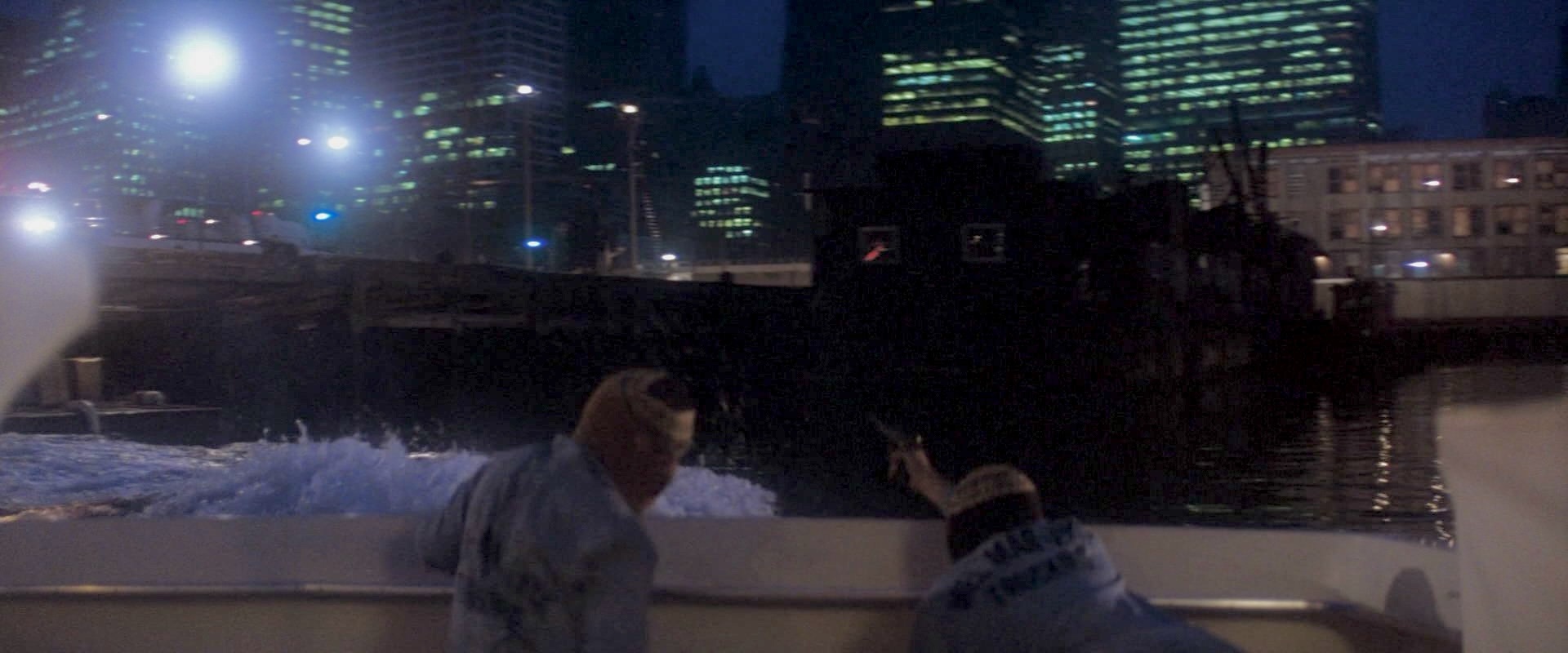
SUPERMAN II
Before I go into the edits made for the TV broadcasts, I have to point out one moment that was cleverly handled by Richard Donner, writer Tom Mankiewicz, and editor Stuart Baird. It’s an added beat that appears not only in the extended TV broadcasts but also in Superman II: The Richard Donner Cut. Once the Kryptonian villains have rampaged through the Daily Planet, General Zod wants to know if Jimmy Olsen is in fact who they’re looking for and asks, “This is the son of Jor-El?”
Non lifts Jimmy up by the collar of his jacket, and Jimmy blurts out, “No, but I’ll bet you’re a son of a…” To which Lois stops him just in time from completing his colorful metaphor. It’s handled quite well both in the writing and the editing of the scene.

Who knew our cub photographer had it in him? Marc McClure had some real zingers that got left out of the Donner Cut. Another edit, which I mentioned in my earlier blog “Every Nook and Cranny” about all of the added footage in the TV cut of II, occurred only in the ABC edit during the first diner scene. As Rocky gets ready to leave, he says, “I don’t like your meat anyway.” This was slightly cut in the ABC broadcast to, “I don’t like you anyway,” to remove any potential sexual connotation towards Lois. This edit did not appear in the international telecasts, however.

While making his Superman films for grownups, Richard Donner was obviously aiming to make his movies as clean as possible for the kid in all of us. Once Donner was removed from completing II, and Richard Lester took over, the door opened a little more for the language and even a bit of sexuality to be peppered into the film. A little seasoning is good for food, but don’t add too much to it. We’re not talking Samuel L. Jackson territory or Die Hard or anything R-rated here. Still, Lester and screenwriters David and Leslie Newman didn’t hesitate to pepper it up a bit for not only Superman II but also Superman III as well.
When the sheriff and his deputy encounter General Zod, Non, and Ursa, Zod demands that they make way, to which the sheriff responds, “Did I hear right? That son of a b—— give me an order?” This line is dubbed over in the TV cut to, “That son of a gun give me an order?”

Is it just me, or does the sheriff look like he should have some chewing tobacco in his mouth? It wouldn’t be too far of a stretch, as Clifton James’ character of Sheriff J.W. Pepper had a bit of a chew going in his James Bond movies! In the next moment we hear the sheriff tell Dwayne, “You gotta learn to kick a—if you wanna be a peacemaker.” For the TV cut this was relooped to, “You gotta learn to kick hard if you wanna be a peacemaker.”

For some reason the relooped line sounds a bit nasally in the TV cut. It’s possible that Clifton James may have been unavailable to reloop his lines, and the Salkinds went with a soundalike. This next one is a footage replacement. Once Zod fires the shotgun on himself, we clearly hear Dwayne mutter an audible profanity. This line would not have gone over well on television, as some viewers would have taken offense at the use of the Lord’s name in vain. This clip was replaced in the TV cut with a clean, nonverbal alternate take (which would also appear in the original 122-minute version of the Richard Donner Cut).

As I mentioned in “Every Nook and Cranny,” I prefer the alternate take myself. SUPERMAN III
In my previous blog “The Lagniappe of Superman III” I mentioned how the edits for the TV cut were all over the place. If I had gone into them, that blog would have gone longer than I expected. Hence, this blog.
So our first edit is a visual one, as Perry White chides Jimmy Olsen about the amount of pictures he brought back after Ross Webster was chosen as humanitarian of the year. “You bring me back one picture of him and fifteen pictures of this other person…,” which turns out to be Lorelei Ambrosia. One of the shots is of her, well, front, but in the ABC edit the producers smartly duplicate the picture of her face. Standards and practices, y’all.

During the chemical fire sequence we have our first audio relooping for the TV cut. In the film, as the fire engines’ water supply runs out, we hear one of the firemen say, “———, the pump pulse has gone!” This is an audible profanity, as at that time taking the Lord’s name in vain was considered improper for television and might offend some Christian viewers. This was replaced in the TV cut with something to the effect of, “…port side! Going over here on the north side!”
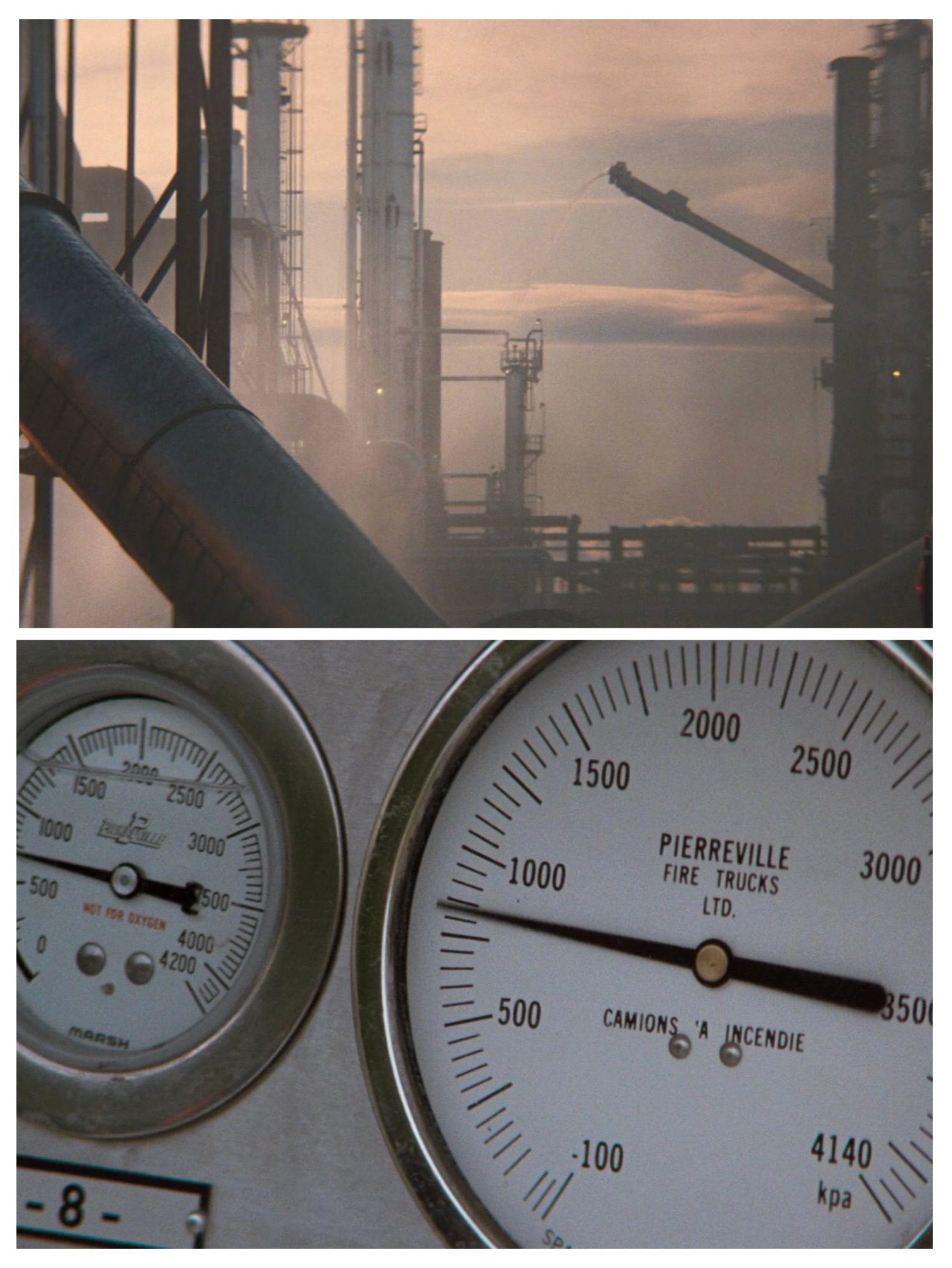
It could be a case where those lines had in fact been recorded and buried in the sound mix. The next edit in the TV cut is a brief edit to remove an audible profanity. During the conversation with Gus Gorman, Ross Webster expresses his disdain toward Columbia and how they don’t want to play ball with Webscoe Industries, referring to Columbia as “one miserable piss ant little country.” This is trimmed down to “one miserable little country,” as ABC might have taken offense to the term “piss ant.”

Originally, Frank Langella and Alan Alda were considered for the role of Ross Webster. Would you have wanted to see either of them in the part? Later in the movie Gus arrives in Smallville, Kansas, to infiltrate the local Webscoe office and hack into its computer to access the Vulcan weather satellite. When he goes through town, he passes by a clothing store and notices a country-looking blue plaid suit. He then overhears a couple passing by and arguing, and all he can do is shake his head and mutter an obscenity. In the TV cut, said obscenity is dubbed out.

That night, Gus succeeds in getting into the local Webscoe office and getting Brad Wilson, former high school football star turned night security guard, drunk. In order to access the office’s computer, Gus drags Brad’s drunken body through the office to the computer room. Along the way, Gus notices how heavy Brad’s body is and mutters a certain four-letter word. That word is dubbed out of the TV cut, even though the music underscoring the scene remains intact.

You kinda have to wonder what happened to Brad after that. Did he recover from his drunken stupor in time? Did the boss find him in the computer room and fire him for drinking on the job? Once Superman has been corrupted by the tar-laced kryptonite, he starts going around the world and causing mischief wherever he goes. First stop: the Leaning Tower of Pisa. Once he straightens it, the little kiosk keeper throws his miniature tower to the ground and curses the Man of Steel out, saying, “Stronzo, Superman!” And this one’s an all-out curse. For the TV cut it’s been redubbed to where he now says, “Stornzo, Superman!”
If you’re not familiar with Italian, run both phrases through the translation app of your choice. Basically, stornzo translates to “stupid”, while stronzo… well, this one was deservedly cleaned up for TV for all the right reasons.
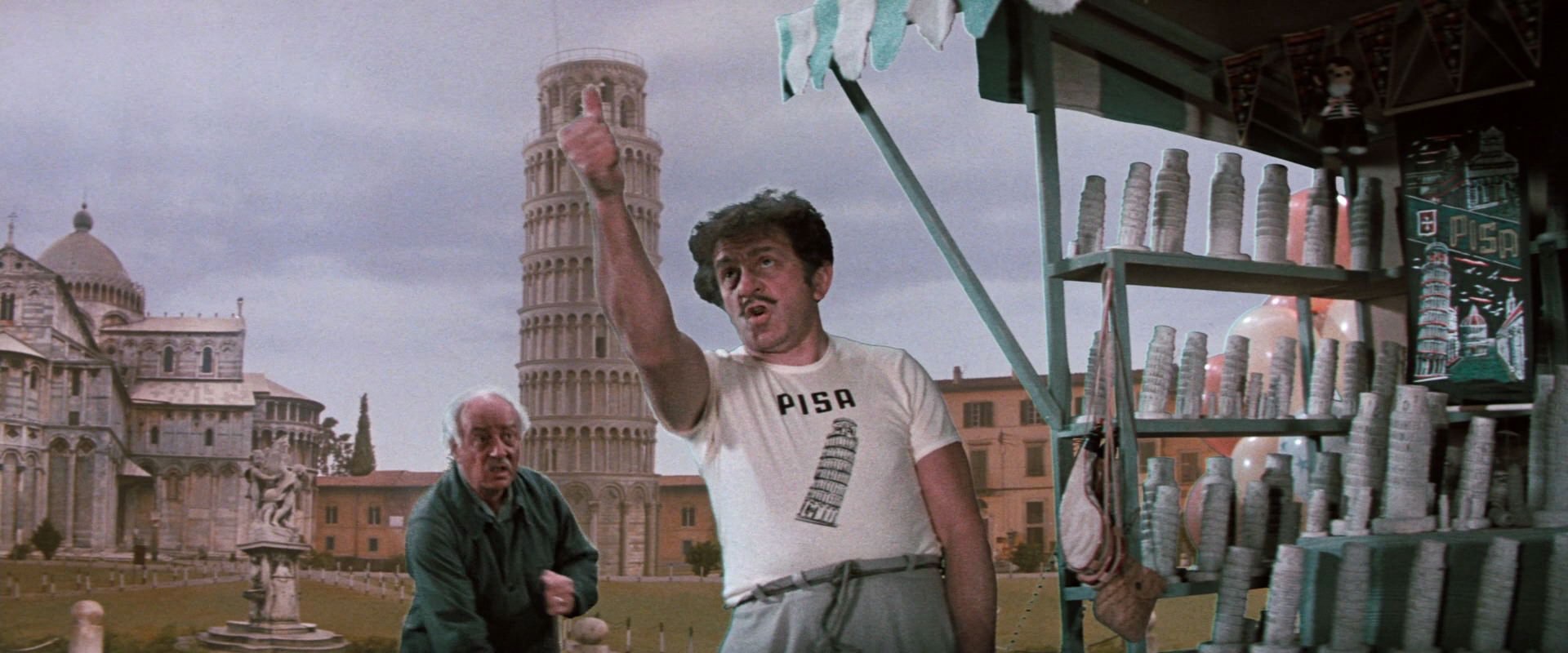
This scene was originally written by the Newmans and intended for Superman II as far back as 1976. The fun doesn’t stop there. When Superman is back to normal and pursues the villains to the Grand Canyon, he dodges one missile after another in a nice visual dogfight until he collides head on with an MX missile. As Superman sees the missile heading right for him, we can clearly see Christopher Reeve mouth the word, “S—-!” Fortunately, we don’t actually hear him because the music and sound effects drown out any potential language. Still, if you watch him very closely, you can make it out.

But not all language got cleaned up for the TV cut. When Gus finally arrives at the computer cavern, he throws a rock at his donkey and says, “Git, you jackass!” This is one time where a bit of language slipped through, as Gus is clearly talking to and about the donkey, so technically it’s not a true bit of foul language, but I mention it anyway.

Finally, at the end of the movie, Brad tracks down Lana to a hotel in Metropolis and sees what looks like Clark proposing to her (when in fact he’s actually replacing her diamond ring that she had pawned the year before to pay her power bill). Neither Clark nor Lana expect to see Brad standing there, and Brad says, “Son of a b——!” In the TV cut this shot is replaced with a clean alternate take of Brad saying, “Kent….”

And that, dear reader, is how the first three Superman movies were cleaned up by the producers and by ABC for their broadcasts on television. And as I mentioned earlier, only Superman IV is the cleanest film in terms of such content.
To this day these alternate cuts have made the rounds thanks to file sharing sites, but I for one hope that Warner Home Video will release them on Blu-ray through the Warner Archive in an official capacity for fans to enjoy.
(Some of the screenshots in this blog are used courtesy of CapedWonder.com.)
-
The Lagniappe of “Superman III”

As we have reached the anniversary of the release of Superman III, one aspect of this underrated film that I find myself looking back on is the extended version of this film. And the one word that comes to mind is lagniappe. Some of you are probably wondering, what’s lagniappe? Let me explain.
According to the dictionary, lagniappe means “something given or obtained gratuitously by good measure.” In his 1883 book Life on the Mississippi Mark Twain described it as “a word worth traveling to New Orleans to get; a nice limber, expressive, handy word-‘lagniappe’…. It is Spanish-so they said.” It’s based on a word from Quechua, yapa, which means “something added.” It’s there that it evolved into the American Spanish word la napa. And if you have been to New Orleans as I have, or are at least familiar with the culture, it’s a melting pot of English, Spanish, French, and everything you could imagine.
So it’s something added, something thrown in, just because. And if you compare the theatrical version of Superman III to its extended TV cut, that’s just what the extra footage is, something thrown in just because the Salkinds felt like it. Their intentions were obvious: pad the film out, get more advertising dollars, get more money in their pockets, as they did with the first two Superman movies.
And here’s where it’s much different. As opposed to the first two movies, which had substantial amounts of footage that enhanced and advanced their respective stories, the added footage for Superman III is… well… just there, just because.
The first official broadcast of the extended TV cut occurred on September 5, 1985, when ITV in the United Kingdom aired a 142-minute version of the film. That meant 17 minutes of lagniappe added to the film. It would then air in the United States for the first time on April 20, 1986.
So does this added footage contribute anything significant? Let’s take it from start to finish.
First off is a new main title sequence for the broadcast. As opposed to the first two films, the opening credits to Superman III are awkwardly superimposed over a montage of comic moments depicting a day in the life of Metropolis, setting the tone for a lighter approach to Superman. For its broadcasts, the Salkinds created a new main title sequence to bring the film into alignment with the first two movies.
Brilliantly recreated by Aaron Price! From there we see the first added scenes to the film, which consists of added bits of scenery to the unemployment office where Gus Gorman is attempting to get his weekly unemployment check.


From there is an added bit to the comical chaos in Metropolis, as some construction workers witness the flooding of a passerby’s car, only to unknowingly hoist the bank robber’s bag away.
Who’s the robber here?!? Then we come to the first added scene involving Christopher Reeve, which finds Superman saving a little boy stuck in a tree.
So this is what happens when a robber’s missing money bag goes missing. All in a day’s work for the Man of Steel. An added bit of two computer operators running into each other.
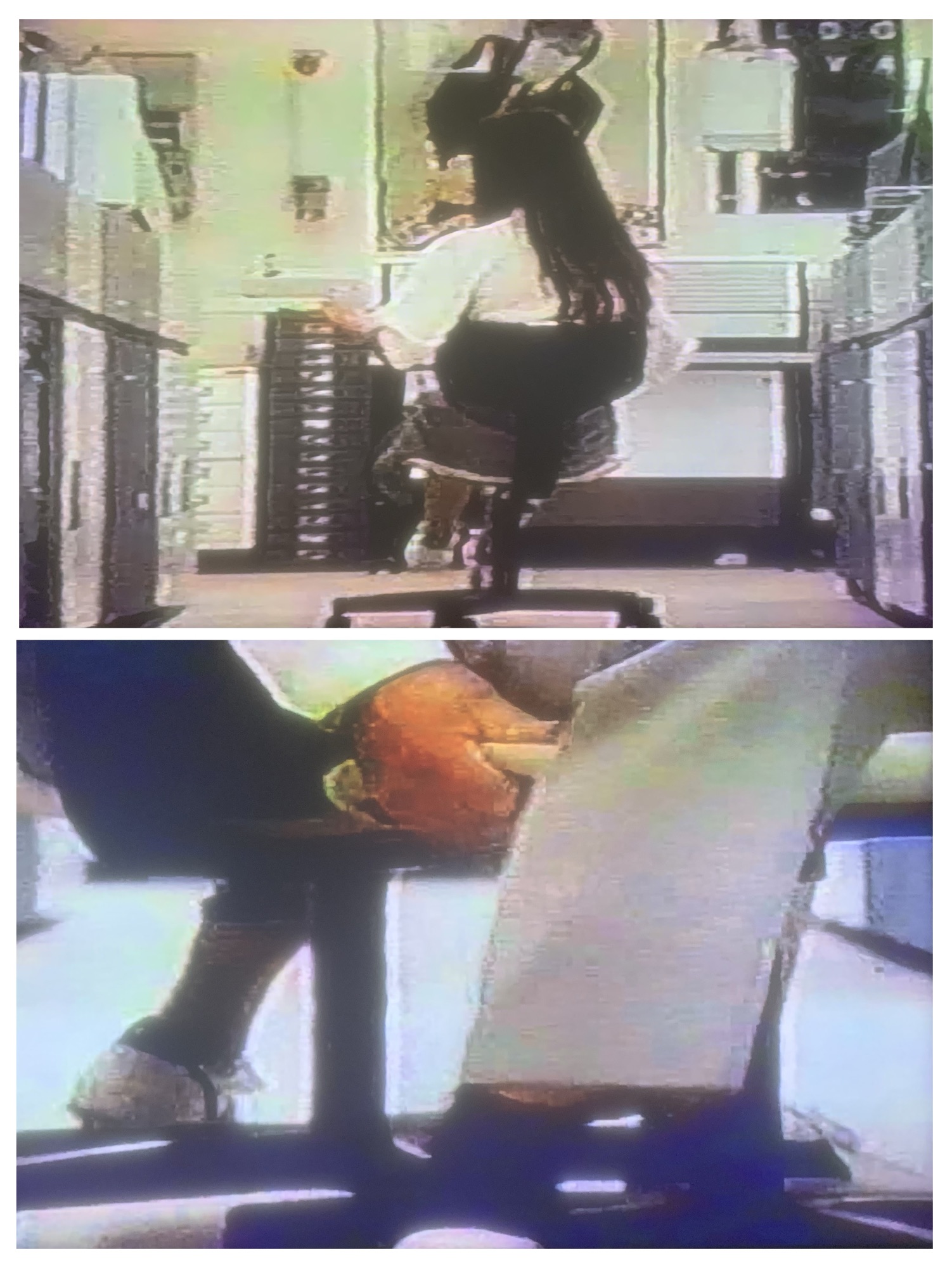
Just before the start of the chemical fire sequence, there’s an added shot of Clark and Jimmy on the bus, as Jimmy notices the glare of the fire and comments, “What a beautiful sunset!”
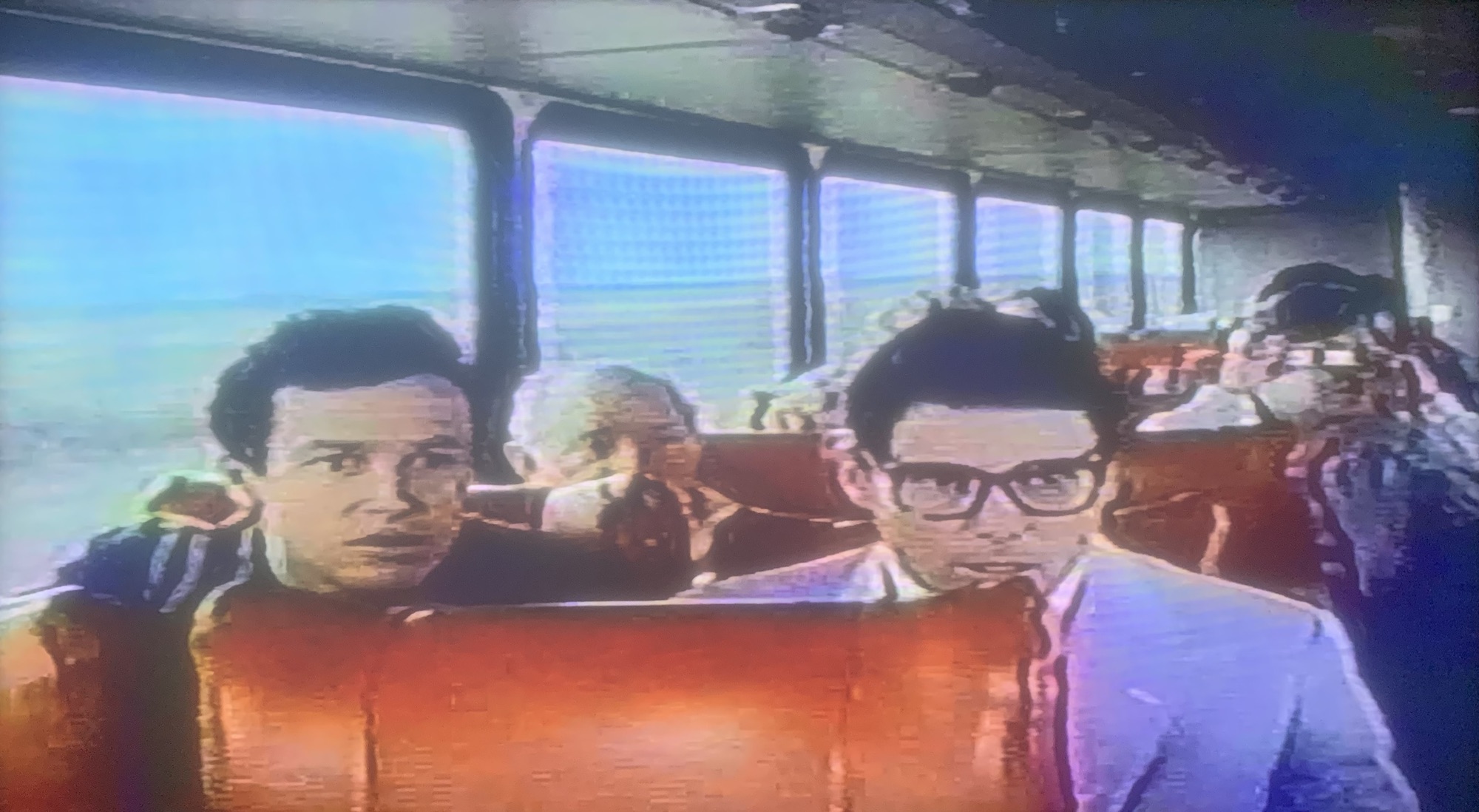
“At two o’clock in the afternoon?” Some added bits of the chemical plant fire, including one of the scientists jumping from a scaffold to his apparent death, and a couple of added bits of Superman observing the fire and helping some more of the trapped employees.
Always nice to have little added moments of Christopher Reeve as Superman. We get an added moment of Gus outside Ross Webster’s office and talking with the secretary and looking for any way out of facing the music.
Featuring Superman screenwriter Leslie Newman in her cameo as Ross Webster’s secretary. As Ross and Vera continue their discussion about how Gus can gain access to the Vulcan satellite, we see Gus meeting Lorelei, and then Gus realizes that it’s not a matter of when but where he can get in unnoticed.
How many rats are in this sewer here? After Gus gets into the local Webscoe office in Smallville, he gets Brad Wilson, former high school football star turned nighttime security guard, drunk off his goard. Again, a few unnecessary lines to pad out the scene.
An added shot of Richard Pryor mugging for the camera as Gus can’t turn on the computer by himself. If Pryor didn’t already have more footage in Superman III than the top-billed Christopher Reeve, the TV cut adds even more Pryor footage.

A few added shots of various computers at work as Gus begins his attempts to reach the Vulcan weather satellite. Great comic music in this sequence from Ken Thorne.
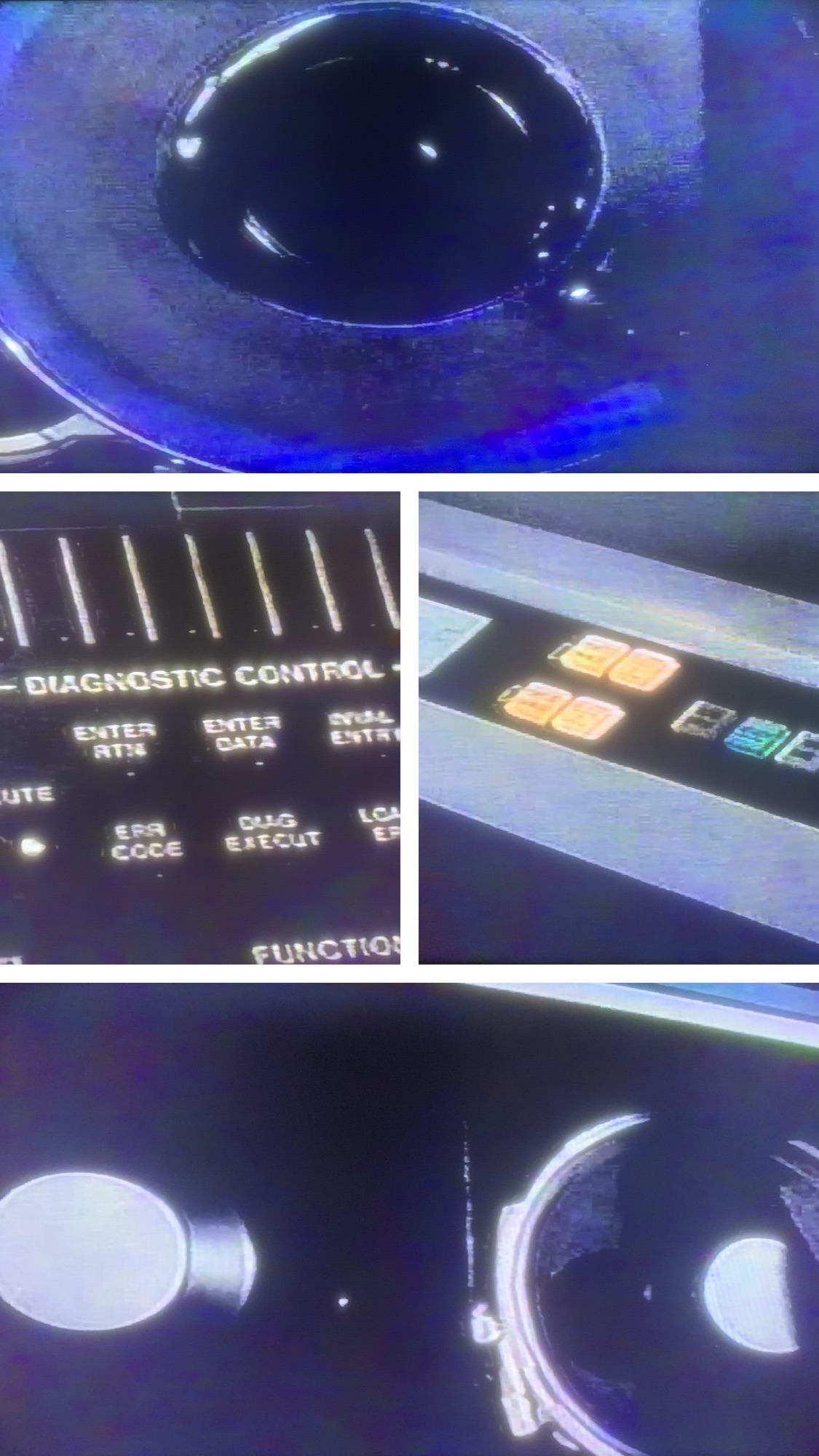

In one scene extension, when the fellow at the ATM starts getting all of the extra money, the scene continues to play out with his excited reaction.

That’s actor Peter Whitman at the ATM. Deputy Dwayne has more than enough money to buy all the fish and meat and potatoes he wants! (Except for beans. He breaks out in a rash when he eats beans.) Several added bits of Gus telling Ross, Vera, and Lorelei about Superman’s exploits in Colombia, along with a newscaster’s confirmation that the Man of Steel has saved Colombia from certain disaster. There’s also some added snippets between Ross and Vera about kryptonite…
…and more unnecessary comic mugging from Richard Pryor. Once Gus prints out the formula for his kryptonite mix, we get a quick added shot of him asking a scientist to cook up his recipe.
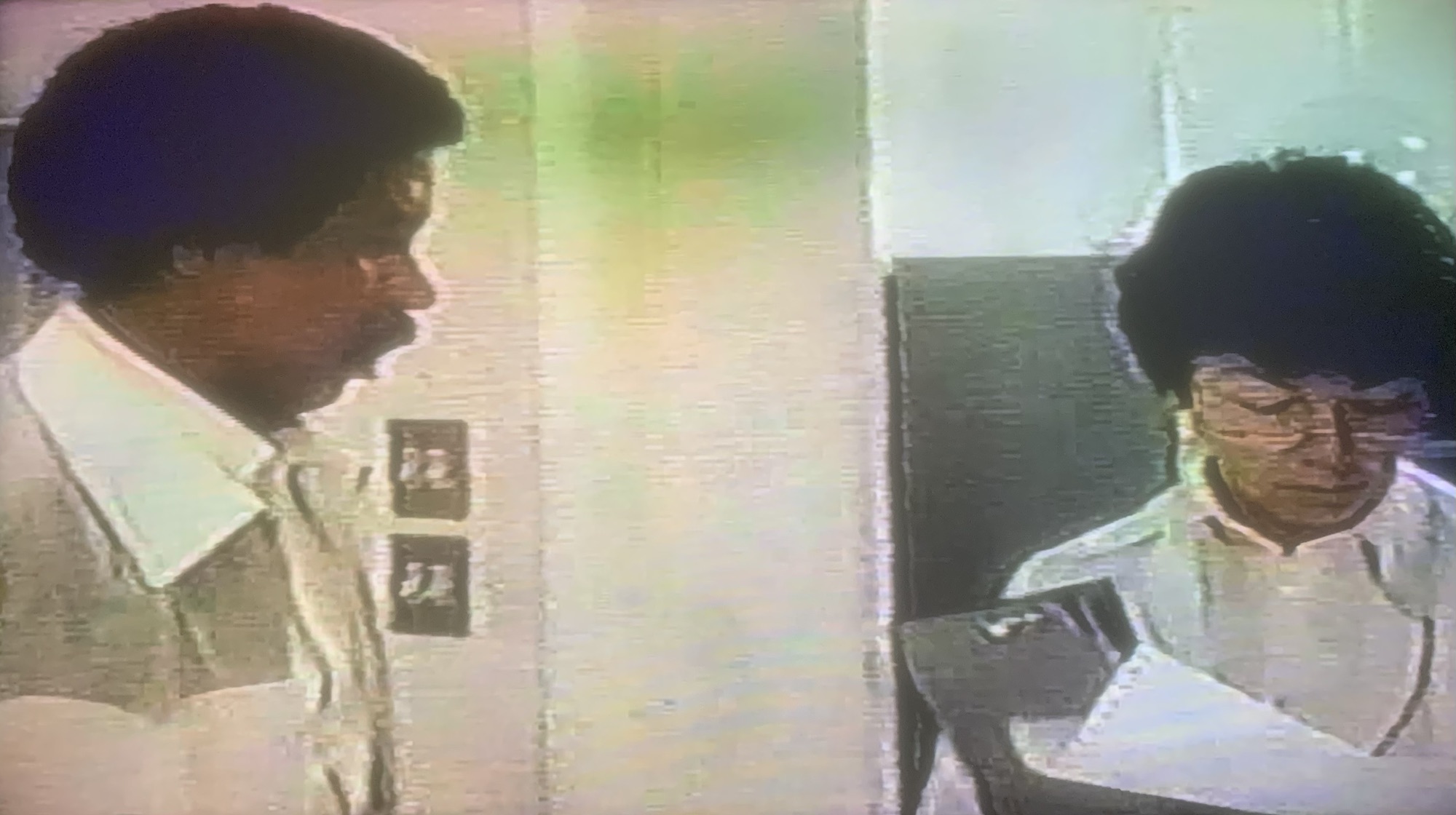
“Boss wants this to go.” At the celebratory reception for Superman in Smallville, we get a nice little moment where he receives a copy of a cookbook from the ladies’ auxiliary.
There’s an added bit of Gus in disguise as an Army general trying to convince the people of Smallville about the importance of American plastics.
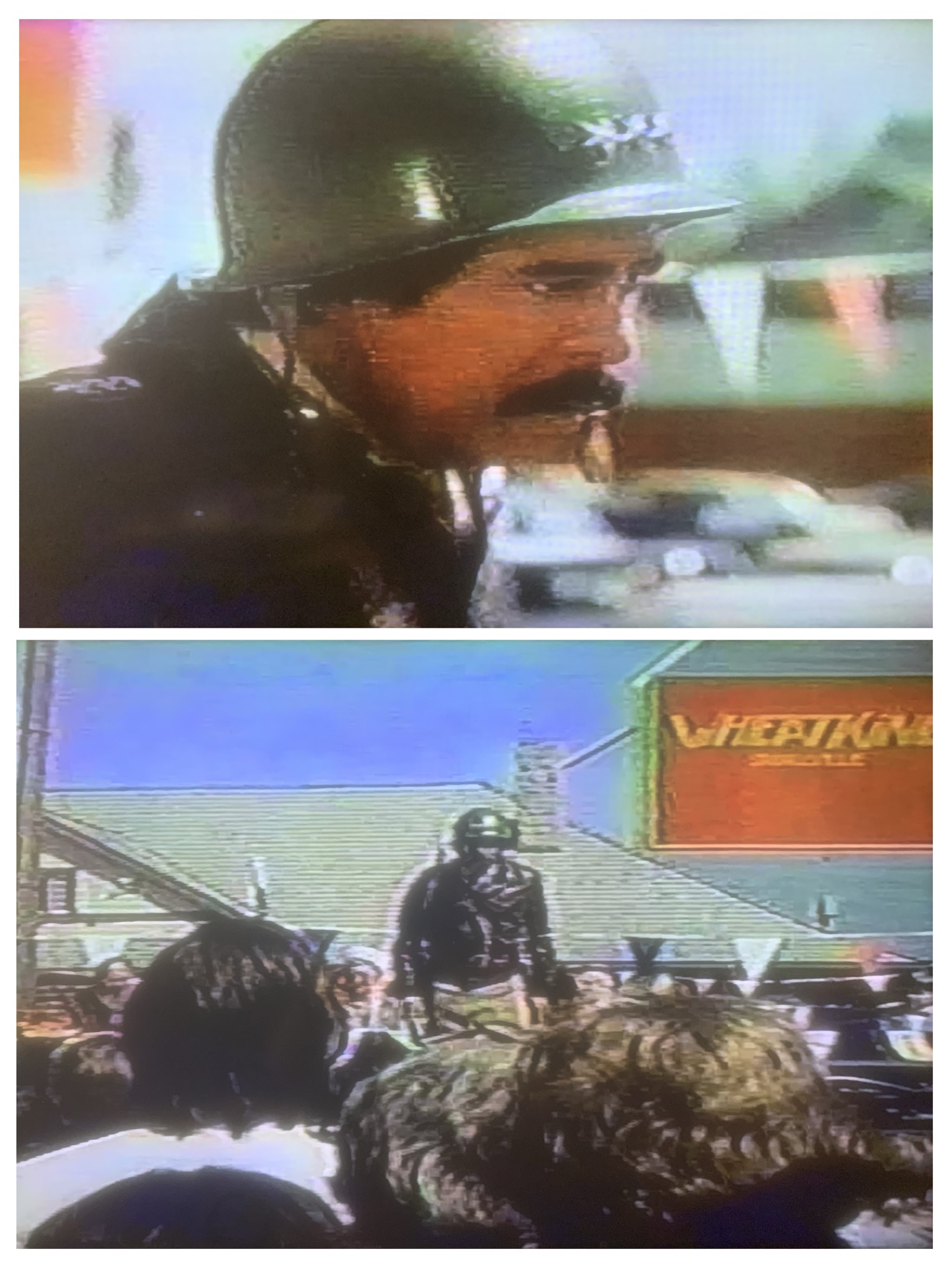
“Do you want some Arab in a white robe telling you that their plastics can whoop our plastics?” I’m not making that line up. It becomes obvious that this line was cut from the film because it might have proven offensive to any potential Arab viewers. Once Gus has given Superman the synthetic kryptonite, we have a quick shot of our hero wondering what is going on here.
As Vera reads about the United Nations censoring Superman, there’s an added bit of Lorelei commenting, “He used to be such a sweetie pie. What’s happened to him in the last couple of weeks?”

This unused shot appeared in the Topps trading card series for the film. During the discussion of how Gus will control the oil tankers to stop sending their oil, there’s an added bit of Ross saying to Vera, “Tell him about the pumps. I know you love the part about the pumps.”

After Gus lays out scraps of paper as his blueprints, Lorelei correctly describes it as plans for a supercomputer. She then dumbs it down and asks, “A hairdryer? Is it a hairdryer?” She’s much smarter than she lets on.
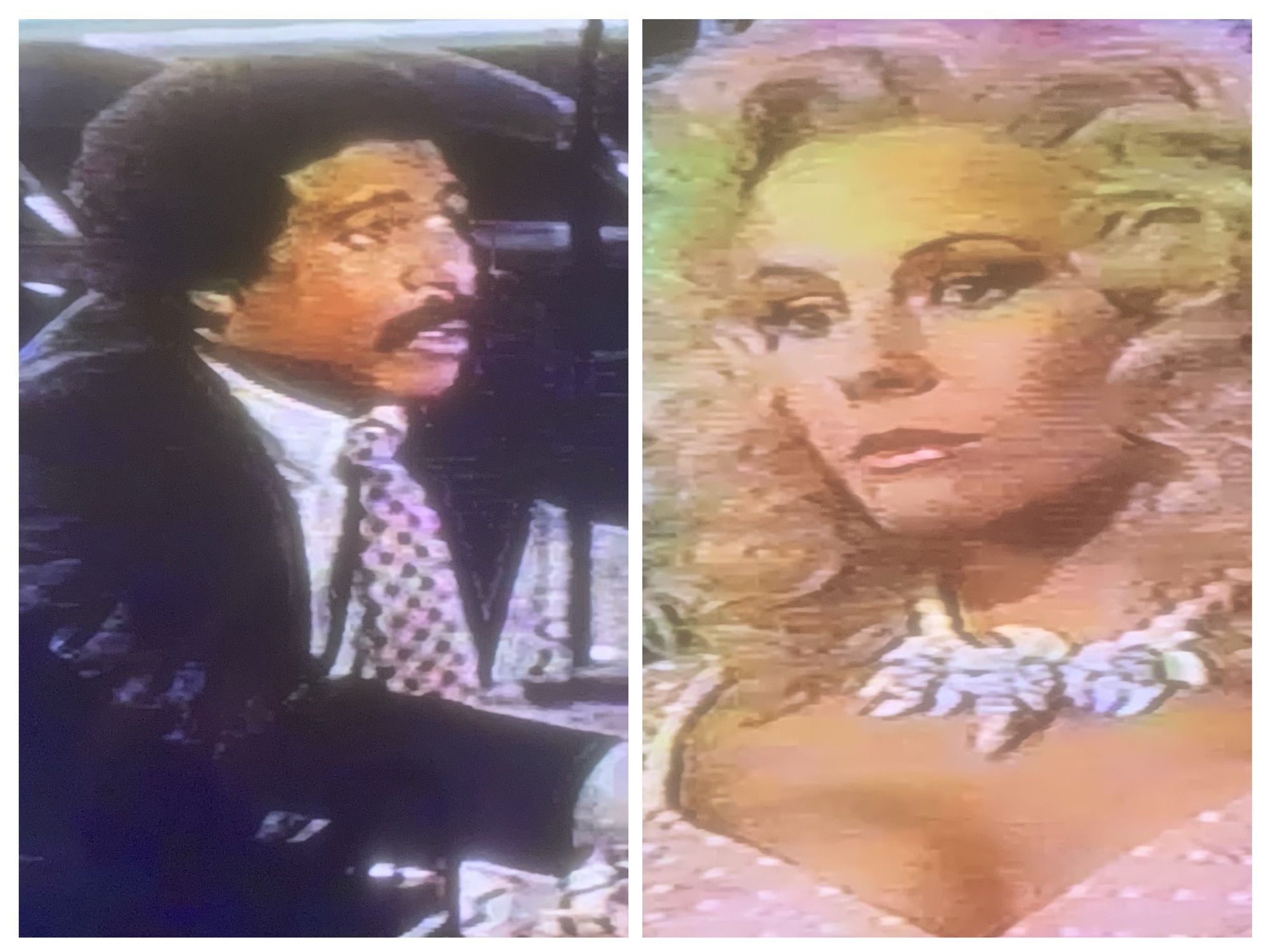
Gus then tells Ross how he came up with the idea for the supercomputer. “I invented it in my own head. This is the super duper, mamma jammer of computers. IBM doesn’t have anything like this.”

Once the oil chaos begins, there’s an added shot of a couple of oil workers attempting to get oil from a frozen pump in the Arctic.
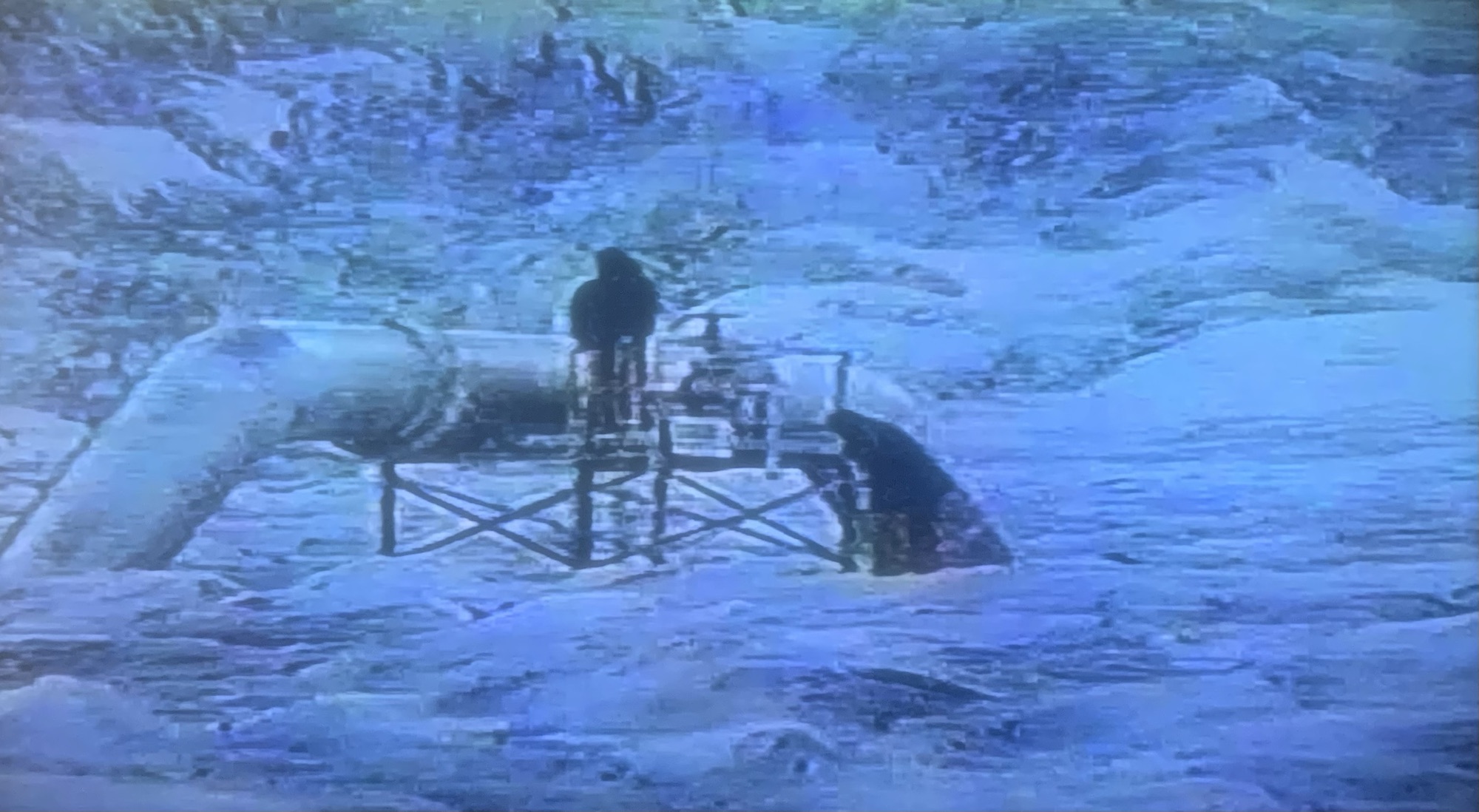
In the scene of Lorelei on top of the Statue of Liberty (just how did she get up there to begin with?), there’s an added bit of one of the policemen telling her not to jump.
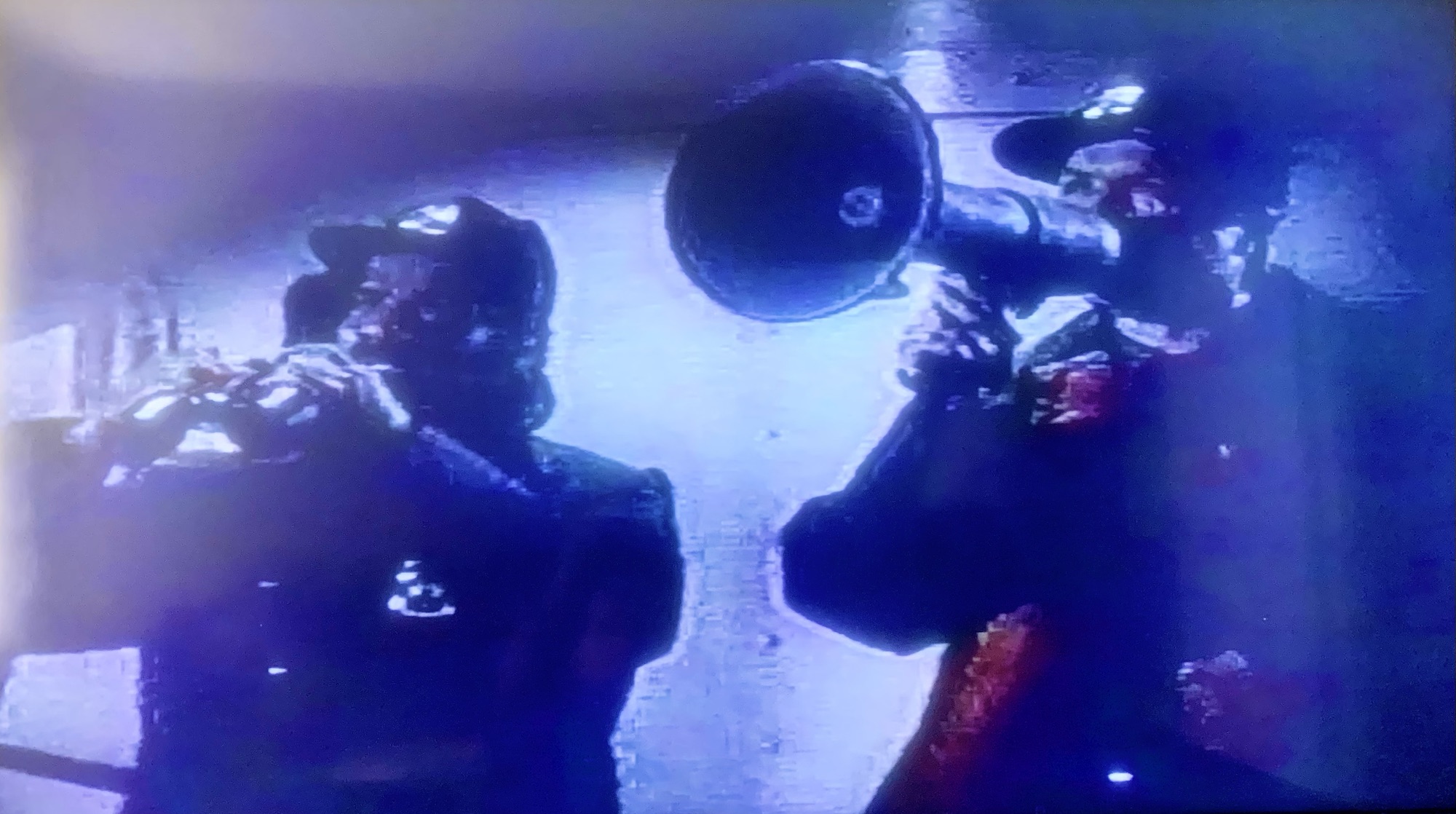
“Do not despair. You have everything to live for. I know, I’ve seen you.” As Lorelei tempts the evil Superman with her “ideas”, we have a quick exchange between them as he asks, “Why don’t you tell me all about it?”

To which Lorelei responds, “I’ll not only tell you, I’ll show you.” Christopher Reeve at his sleaziest. Just after the evil Superman returns and has his way with Lorelei, there’s an added shot of Vera stuffing cotton in her ears as she reads a computer manual.

A quick added bit of a helicopter carrying a Webscoe cargo container to the computer cavern.

A few added bits to the conversation between Lana and Brad, as she attempts to reach out to Clark for help but can’t reach him. She then realizes that she needs to take matters into her own hands.
Once the battle between Clark and the evil Superman has ended, and the real Superman has returned, ABC included an unusual borrowed shot of Superman in flight through the storms over Colombia so it could go into a commercial break at the end of the second hour of broadcast. I remember seeing the extended TV cut on Superstation TBS sometime afterwards, and that commercial transition was clearly not present—they kept the scene of his flight to the damaged oil tanker as seen in the theatrical version with no commercial break.

Duplicated for the ABC telecast. Some added bits and pieces of Ross, Vera, and Lorelei making their way down to the cavern where the supercomputer is housed, while Gus takes the hard way down on a donkey.
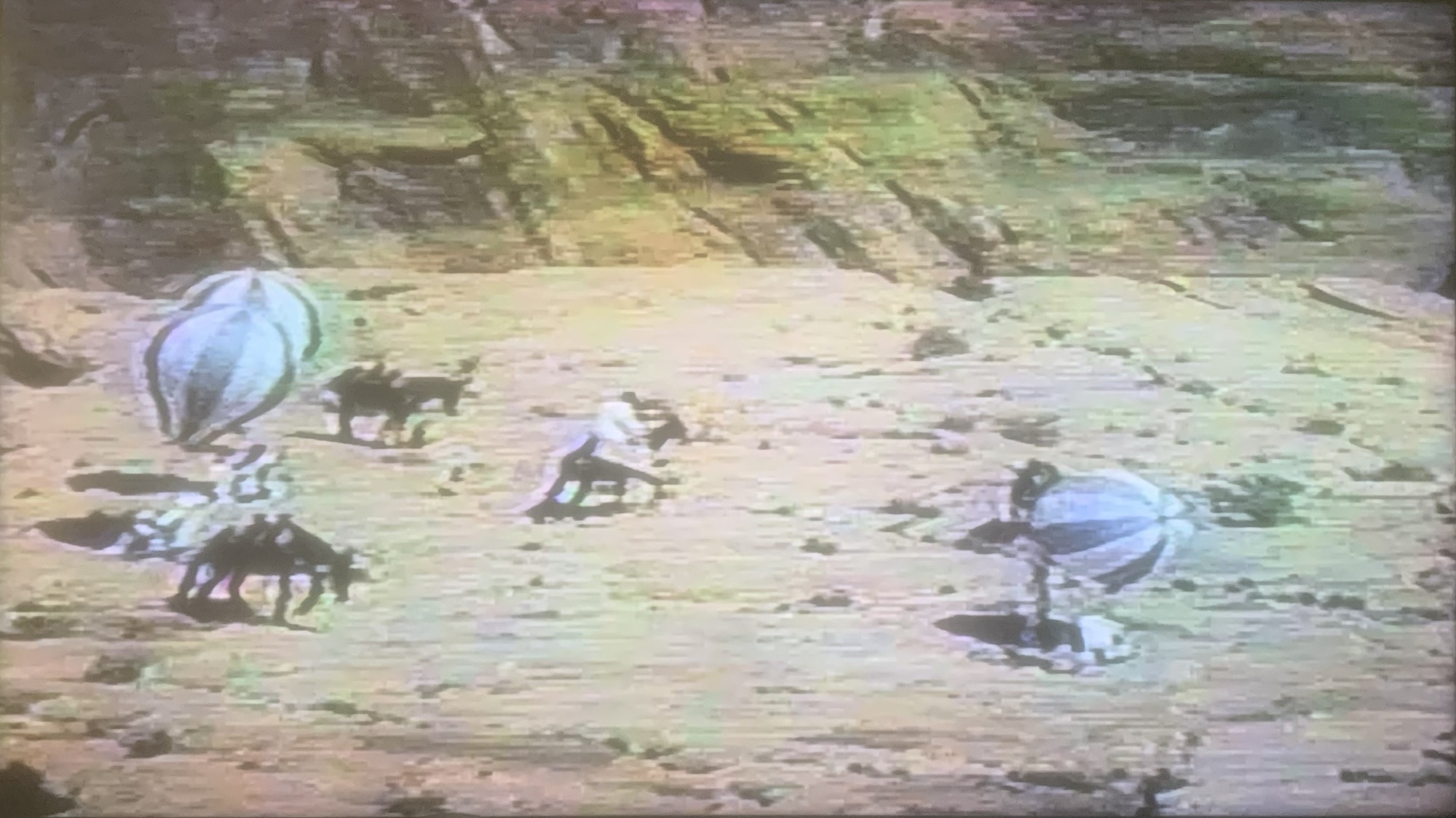
This is an alternate longer shot as the camera turns 360 degrees to show everyone beginning their descent to the cavern. The theatrical version uses a shorter take. 
A couple of added shots of the computer screen. Yawn.

There’s a brief snippet of Lorelei’s reaction to Superman’s arrival at the Grand Canyon, and Vera telling her, “Cut the mush, he’s after our skin!”
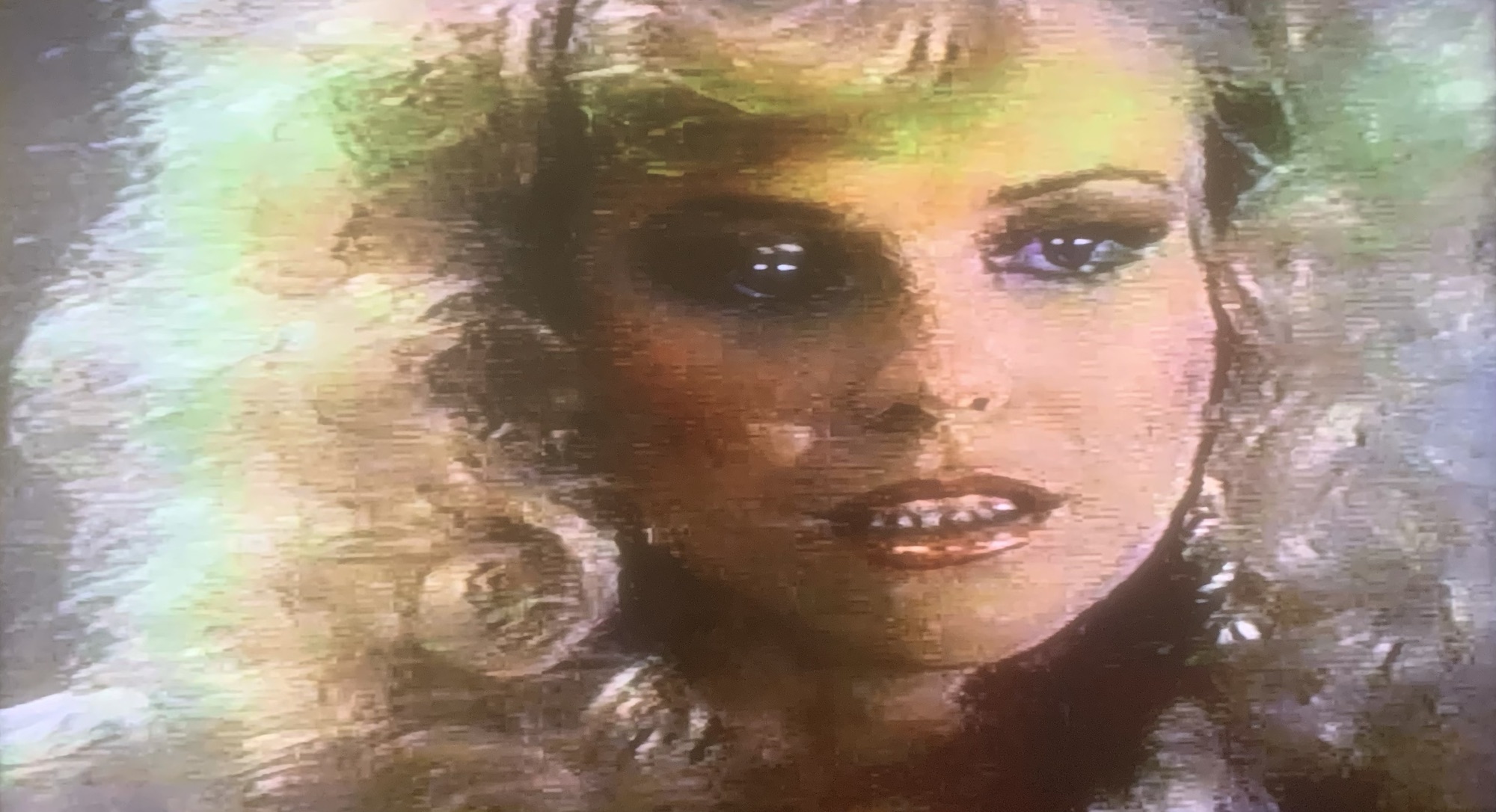
“He can have mine anytime.” As the supercomputer fires its kryptonite laser beam onto Superman, there’s an added extension of Gus grabbing a screwdriver before stopping it.

A small bit of Ross ordering Vera to open the doors but having to do it by hand…
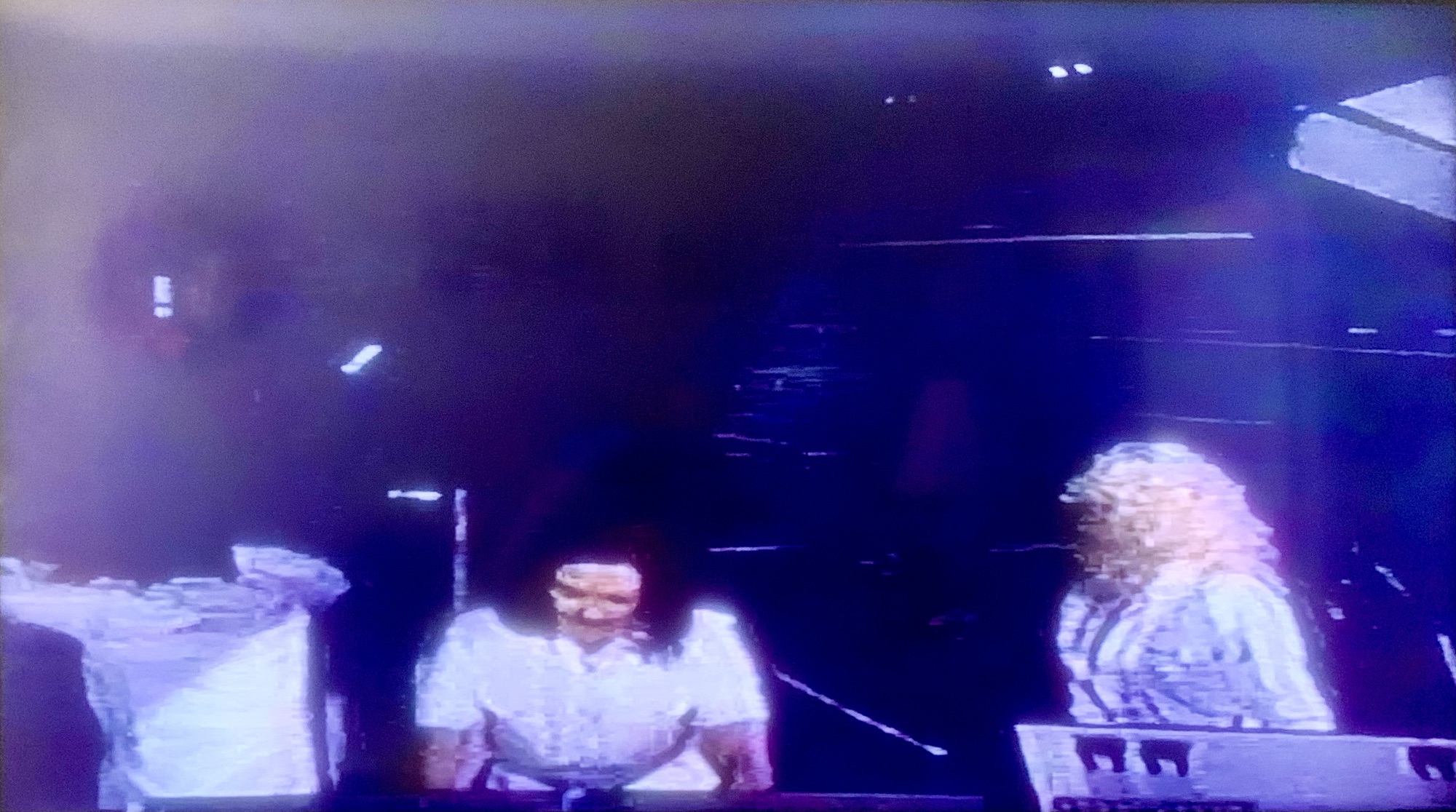
Once Gus says, “It’s feeding itself… it wants to live!” we see an added shot of the supercomputer’s antennas firing up. This was added to the ABC broadcast to find an appropriate break for commercials, and duplicated from the theatrical version.

There’s a brief added moment to the chaos of the power outage, as a neurosurgery goes awry.
Muppet man Frank Oz, the voice of Miss Piggy and Yoda, in his cameo as a brain surgeon. As Gus destroys the kryptonite laser, we hear an added bit of dialogue as he says, “I’m not going to let you destroy Superman!” This line is not present in the theatrical version.

A couple of added shots of the supercomputer’s explosion are included.

Once everything is back to normal, we have an added clip of the oil pumps starting up again.
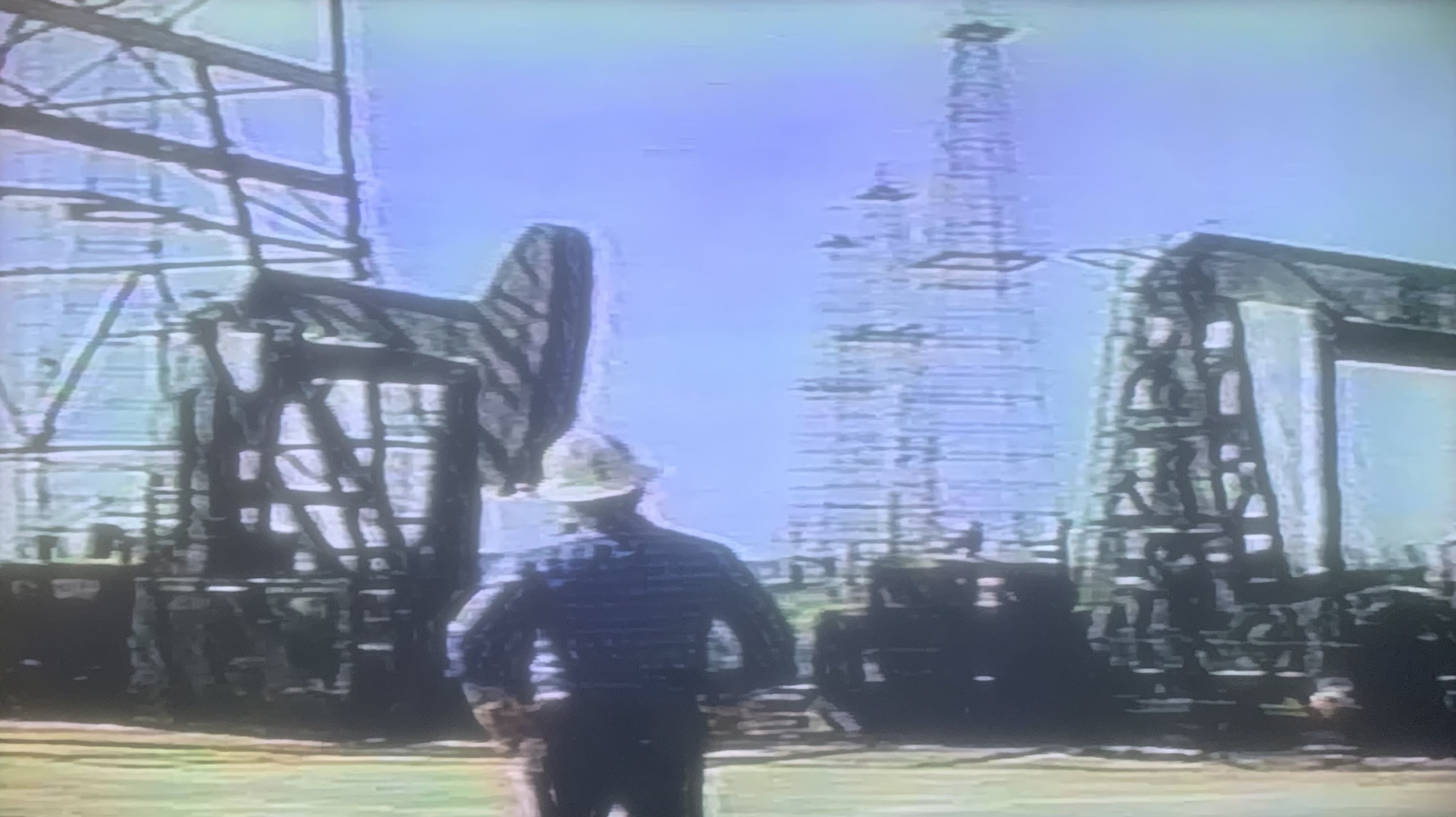
The introduction of Clark arriving at Lana’s hotel room is different in the TV cut. It shows Clark coming out of the elevator and knocking on Lana’s door (which is different from the sound of the doorbell in the theatrical version). A hotel waiter notices how Clark knocks on the door and mimics him.

The final added shot for the TV cut is a brief snippet at the end of the hotel sequence, as we see Brad for the last time (thank goodness!).

“No wonder they sent it back.” But that’s not all of the deleted footage to account for. In one of the TV spots for the film, an unused alternate angle of Superman in flight is used. This was clearly filmed for the scene where Superman flies to save Ricky from the wheat thrasher. The clip is very brief, maybe a half-second at most, but again it shows Reeve’s ability to handle himself naturally in flight.

And in the theatrical trailer for the film, there is an alternate take of Robert Vaughn saying, “What will it do for me?” In the final take used for the film there is a pause in his voice when he says, “What will it do… for me?” But in the trailer his voice has a higher pitch when he says his line.

In addition, the ABC broadcast made a number of changes to the extended TV cut to bring it to the approved broadcast standards of the day. And this one is all over the place! So much so, that I’m going to save all of these changes for a separate blog. And I’m just going to sum it up in one word:

When the deluxe edition DVD of Superman III came out in November 2006, eleven of these deleted moments were included on the disc (and later for the Blu-ray and 4K releases), with six of them included on the streaming version. And all of the scenes were taken from the TV cut. This is the only Superman movie where the added scenes were featured in pan-scan format, while the others presented their cut scenes in widescreen format (even with the workprint scenes from Superman IV).
So why use the TV cut as the source of the additional scenes? This brings up an interesting question. Does a widescreen print of the TV cut exist? As we know, Warner Bros. has a widescreen print of the TV cut of Superman II, as well as a print of the complete cut of Superman IV, in its vaults, both of which I’ve known about since 2018. And if such a widescreen print exists, what condition is it in?
Which brings me back to my question from the beginning: are the added scenes from Superman III worth it? To be honest… overall, no. It’s nice having those few little added pieces of footage with Christopher Reeve in them, but even that doesn’t help the cause. The only significant clip is the revised main title credits, which gives the TV cut a proper feel and brings it into sync with the other films. The rest is lagniappe, stuff that was thrown in there to pad out the rest of the film, just like all of the unnecessary bits that were added to the TV cut of Superman II. This film could have been tightened by another ten minutes or so, and it still would have told a decent story without all of the unnecessary padding.
With 2025 around the corner, and work underway on bringing the Adventures of Superman to Blu-ray, and production on James Gunn’s new Superman film, maybe there’s a chance we’ll see the Warner Archive release the sequels on Blu-ray for all of the fans.
Gotta love these spoilery TV spots! -
Every Nook and Cranny: The Last Word on All of the Deleted Scenes in “Superman II”

Still my favorite poster for this film. I recently had a conversation with my friend Jim Bowers about all of the deleted scenes that were featured in the extended version of Superman II, and it turns out that there is an incredible plethora of scenes shot for the film but for one reason or another were not included in the theatrical version from 1980-81 or in both versions of the Richard Donner Cut from 2006. And I just have to say that if it weren’t for Alexander and Ilya Salkind restoring them for television, we wouldn’t even have these scenes in the first place.
The producers’ intention of restoring the deleted scenes back into the first three Superman films was to pad the film out for television and therefore bring in additional advertisers, which in turn would bring in more money for the producers. These extended cuts were done without the involvement or approval of directors Richard Donner and Richard Lester, as it was similarly indicated at the start of the 2017 extended TV cut of Superman: The Movie on Blu-ray.

Could we see a similar disclaimer at the start of potential extended TV cut of Superman II on Blu-ray from the Warner Archive Collection? It’s certainly possible. So if you’ve not seen the extended TV cut of Superman II, or the Restored International Cut, or if it’s been a long time since you’ve seen it and may have forgotten about it, here is a breakdown of all the scenes and bits and pieces that were added to the film for its telecasts on ABC in 1984, 1985, and 1987, as well as on TV in various overseas countries including (but not limited to) Canada, Denmark, and Australia.
(Please note that all time codes in this breakdown are referenced solely from the Restored International Cut of the film issued in 2004 and may not accurately reflect the actual running time of the extended TV version of the film.)
ADDED FOOTAGE FEATURING CHRISTOPHER REEVE
0:15:36 – 0:16:03 – Superman flying past the Concorde (Donner footage). Portions of this sequence were filmed in July 1978 for Superman: The Movie with Reeve, Michael Berh, and John Rees for a three-part sequence that was intended for the middle of the film.
Some fans mistakenly thought that this really was intended for II, but film and music restoration buff (and hardcore Superman fan) Mike Matessino confirmed that it was indeed shot for the first film. 0:21:01 – 0:21:07 – Lois telling Clark, “Nobody knows it, that’s all, especially not you.” (Lester footage)

0:21:19 – 0:21:29 – Clark asks Lois about getting an electric orange juice squeezer (Lester footage)

0:43:13 – 0:43:25 – Clark Kent at the hot dog stand (Lester footage). In the theatrical version, the scene shows Clark picking up two hot dogs and walking off, implying that he has stolen them. For the extended TV cut, this has been replaced with a longer version of Clark picking up the hot dogs and leaving money for them.
0:43:56 – 0:44:01 – Lois and Clark walk off after he asks, “No orange juice?” (Lester footage).

1:00:51 – 1:01:17 – Superman and Lois flying together (Donner footage). This clip was cribbed by the Salkinds from Superman: The Movie to pad out the extended TV cut of Superman II.
A total cheat. This is reminiscent of some of those cribbed scenes that were cobbled together by Universal Studios for the “Alan Smithee” TV cut of Dune in 1988. 1:15:43 – 1:16:18 – Superman’s soufflé (Lester footage). This added scene was originally intended for the 122-minute Donner Cut but was later removed from the film. It also appears as the sole deleted scene on the Superman II special edition DVD from 2006.
1:33:12 – 1:33:34 – Clark walking through the mountains (Lester footage). The closeup of Clark’s feet was used in the Donner Cut.

1:44:01 – 1:44:08 – dialogue between Zod and Superman; “Somehow I just can’t hear you, Zod!” (Lester footage). For the extended TV cut, when Ursa flies by, Zod speaks an additional line, “Possibly not.” The clip of Zod saying, “It is extremely likely you are merely a fool. Like father, like son,” appears in the Donner Cut.
Perhaps my favorite Christopher Reeve moment from the TV cut. 2:00:19 – 2:00:30 – Zod to Superman: “Accept your destiny, Kal-El! As your father once condemned us, so now do we condemn his misbegotten brat!” (Lester footage)
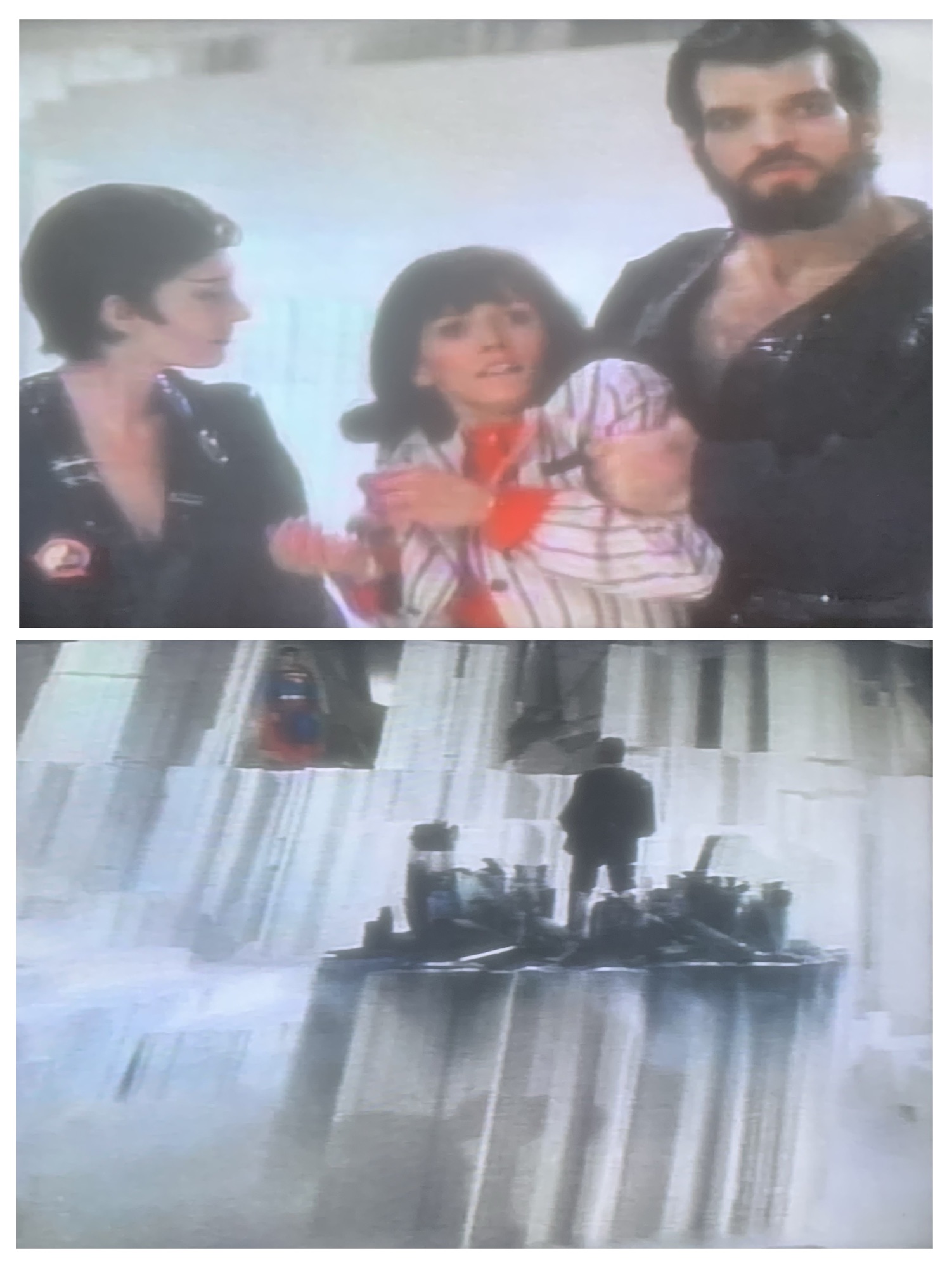
2:00:43 – 2:00:48 – Zod to Ursa: “We must combine our energy.” (Lester footage). This clip is an alternate version of the shot that appears in the theatrical release of Zod saying, “We must combine our strength.”

2:02:40 – 2:02:47 – additional footage of Zod’s demands: “I sense the presence of Jor-El here. Destroy this place.” (Lester footage)

2:02:52 – 2:03:00 – Luthor pointing at Superman and Non pointing at Luthor: “Him?” (Donner footage)

The Donner Cut uses an alternate take of this clip. 2:03:26 – 2:03:39 – Luthor: “I don’t know what to think anymore. You know, it’s not like the old days, Superman, when it was just you and me…” (Donner footage).
2:03:45 – 2:04:06 – Luthor tries to convince Superman that he’s changed; “Well, perhaps there is some good in you after all, Lex Luthor… I’m just going to have to take that chance.” (Donner footage)
2:04:31 – 2:04:46 – Superman tries to go after Zod but Non stops him (Donner footage). This scene was used in the Donner Cut but with some shots rearranged for tighter pacing.
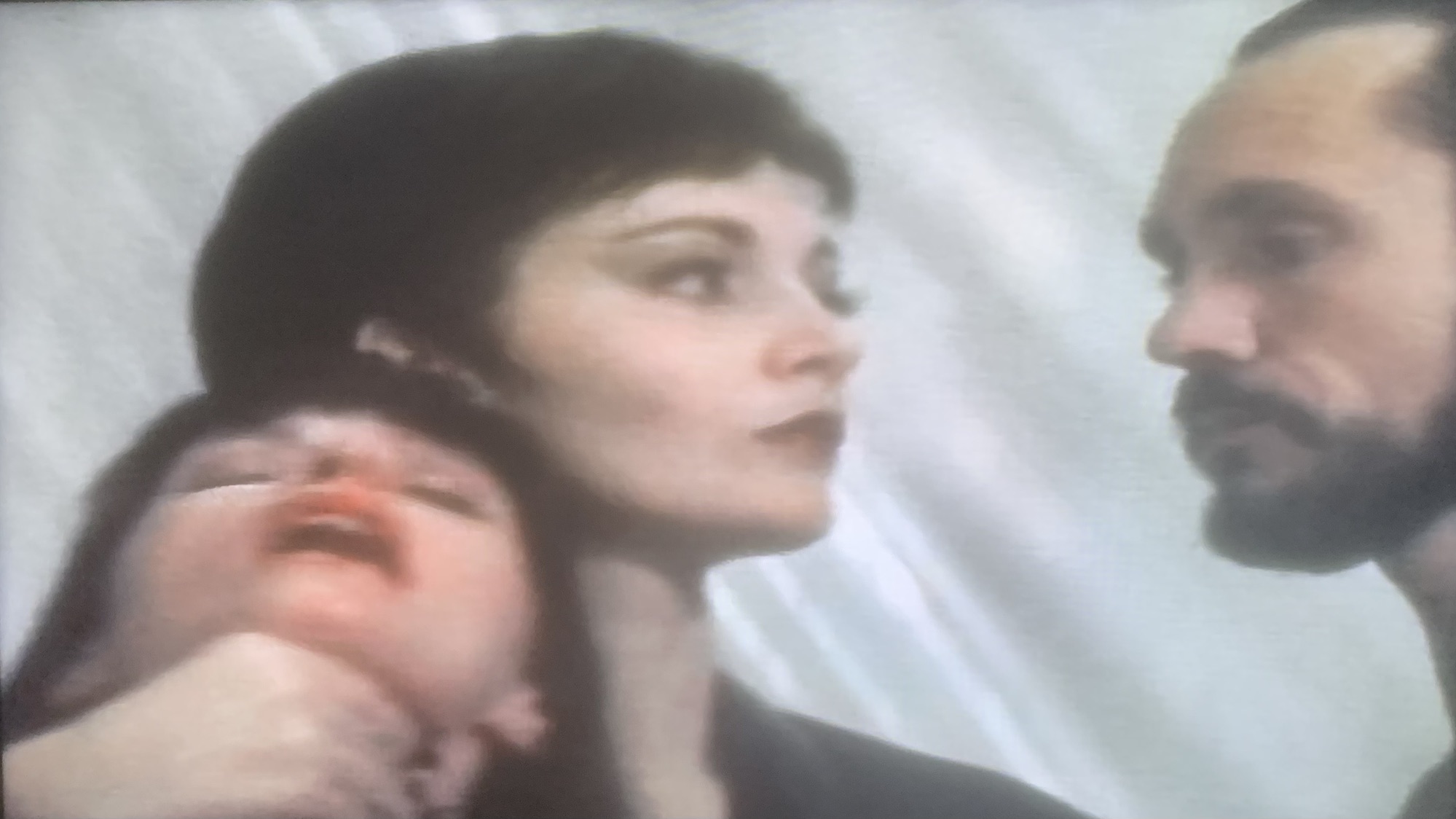
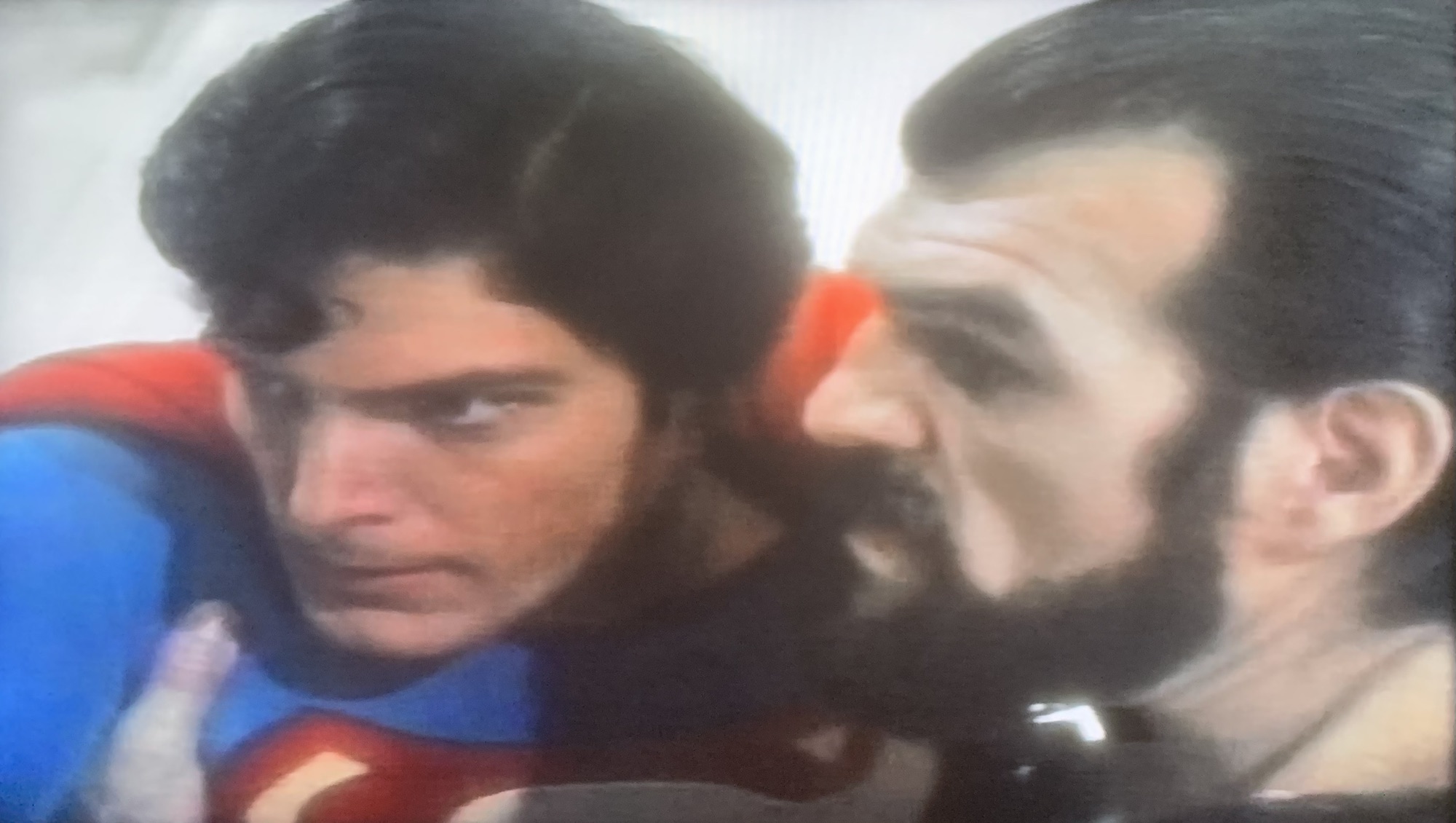
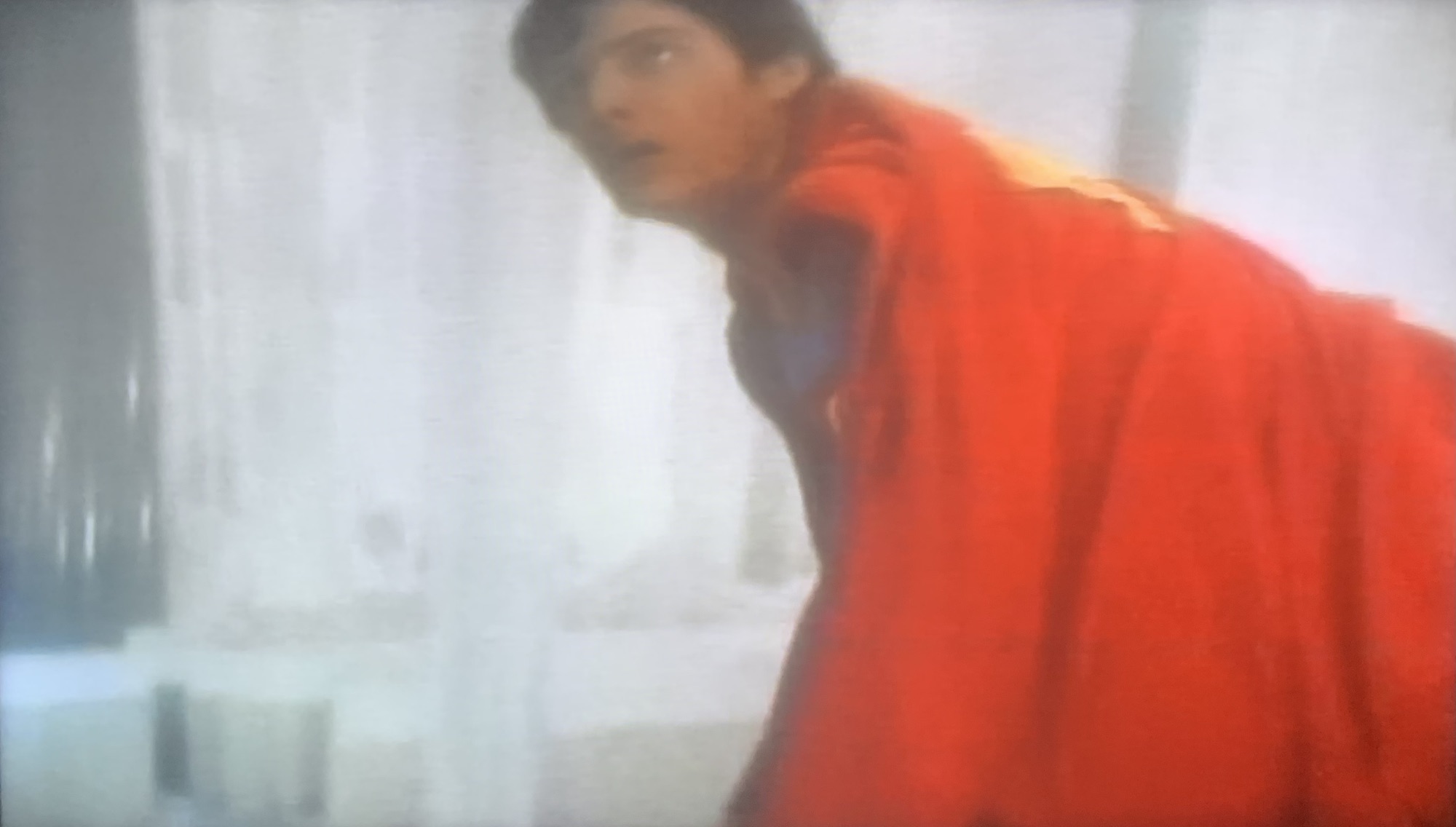
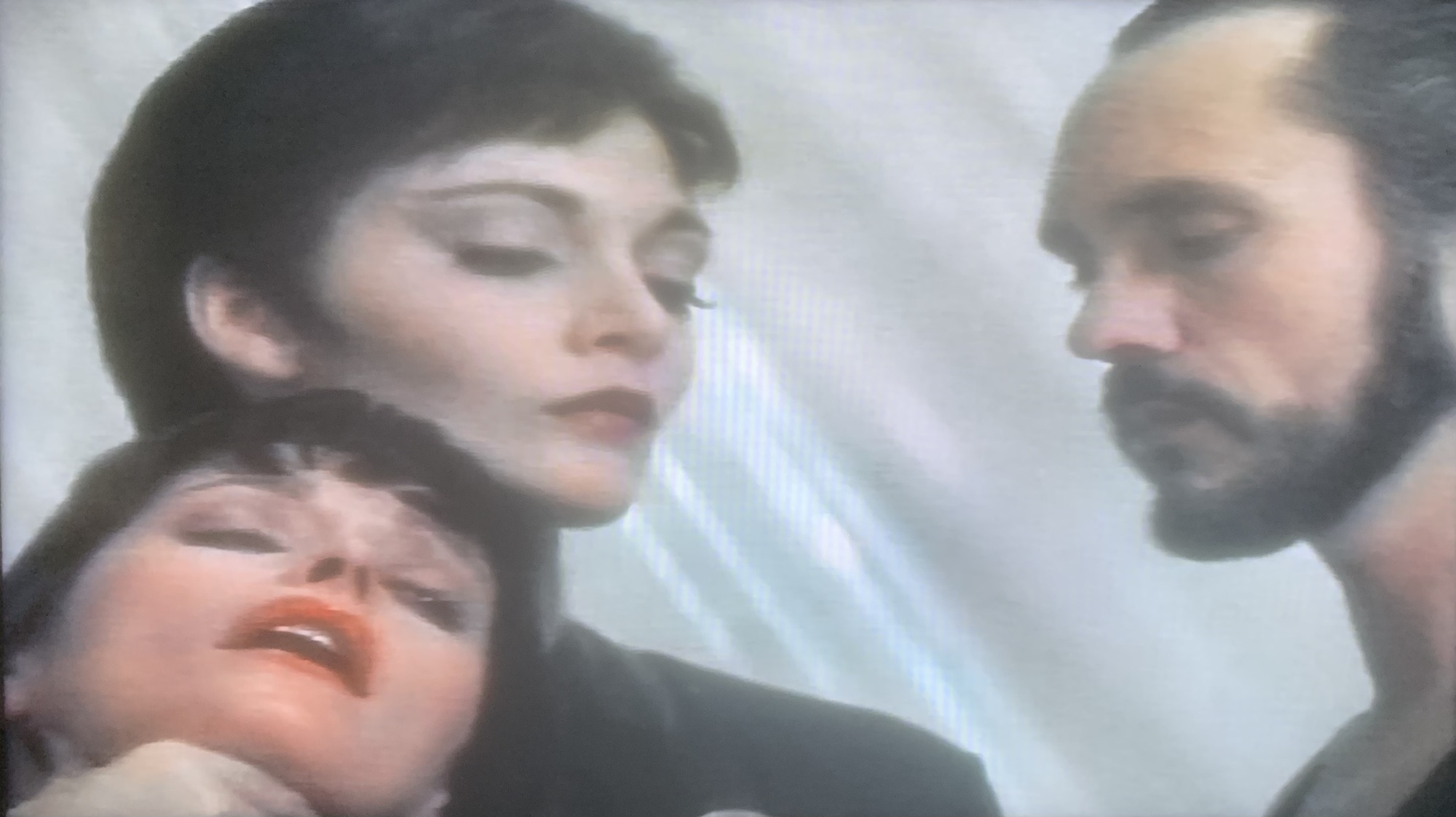
This is how the shots were arranged in the TV cut. 2:08:05 – 2:09:46 – Arctic Patrol arrests Luthor and the villains (Donner footage). This scene was heavily edited in the ABC broadcasts for time, yet appears completely intact in the foreign broadcasts and as a deleted scene on the Donner Cut DVD and Blu-ray (under the title “He’s All Yours, Boys”). Let’s address its editing for the ABC broadcasts.
The first five seconds, where we clearly see the Arctic Patrol officers bringing the Kryptonian villains out of the Fortress, was cut from all of the ABC broadcasts. This shot specifically clarifies that Superman has not killed the villains or left Luthor stranded at the Fortress, that they are indeed alive at the end of the film.
At 2:08:45 we have a brief clip of Luthor saying to Superman, “Let’s negotiate… five percent!” This shot was cut from the ABC airings in 1984 and 1985, but for its final airing in 1987 it was mysteriously restored.
Then at 2:09:20 there is a shot of Superman and Lois preparing to take off from the Fortress. As with the previously mentioned clip, this was cut from the ABC broadcasts in 1984 and 1985 but was restored for its final airing in 1987.
2:09:46 – 2:12:00 – Superman destroys the Fortress, talks with Lois (Donner footage). As with the previous sequence, this too was heavily edited in the first two ABC broadcasts in 1984 and 1985 but appears completely unedited in the final broadcast in 1987. Some people have alleged that this sequence aired intact in 1984, but audio recordings of that first telecast confirm that it was in fact edited for time constraints. Let’s address the editing first.
For the first two ABC broadcasts, a slightly longer closeup angle of Superman and Lois looking back at the Fortress is used. In the Donner Cut, once they land, the shot switches to the more distant angle of them looking back before Superman walks away.

The footage runs from 2:09:46 to 2:10:20, ending with the Fortress exploding, before abruptly jumping to a shot at the 2:11:54 mark of Superman and Lois embracing. This is how the sequence played out in the first two ABC broadcasts, but not in the third and final broadcast in 1987. For the final broadcast, all of the dialogue between Superman and Lois is shown intact.
Much of this sequence appears in the Donner Cut with added visual effects of Superman’s heat vision (referenced in the script as x-ray vision) and the melting away of the Fortress, but two pieces of dialogue from Margot Kidder from the extended TV cut were not utilized. The following pieces were removed from the Donner Cut:
“I mean, I’d be buying my little rainbow at the expense of all those people, ‘Go help, come quick…. I mean, it’s the old eternal triangle. Only in this case, I have all of humanity waiting in the next room.”

2:12:21 – 2:13:21 – Superman returns Lois to her apartment (Donner footage). This clip was included in the Donner Cut, but with one alternate take used. In the TV cut, Lois says, “You don’t have to worry. Your secret’s safe with me, I’m not going to tell anyone who you really are.” For the Donner Cut, she says, “You don’t have to worry. Your secret’s safe with me.”
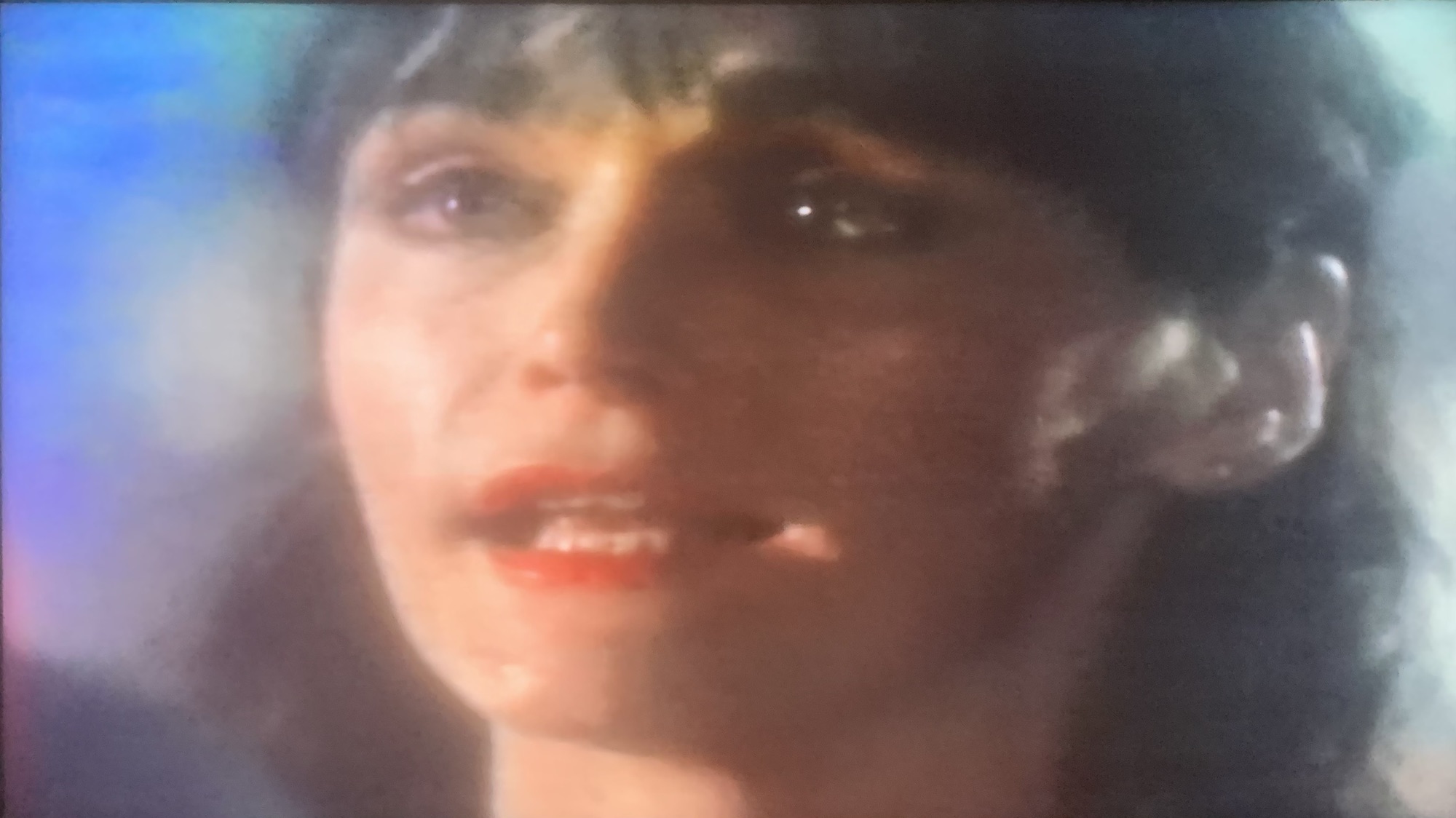
2:18:42 – 2:19:32 – Clark, Jimmy, and the bald bully (Donner footage). This shot appears as a deleted scene on the DVD and Blu-Ray of the Donner Cut.
OTHER ADDED SCENES
Next is a list of additional scenes and segments that were included in the extended TV cut.
0:23:20 – 0:23:31 – Luthor to Otis: “Your brain defies every known scientific law in its infinite capacity to deteriorate.” (Donner footage) The next clip, a closeup of Otis, is inserted over Luthor’s line, “Some, like you, Otis, have more than one.” The extended TV cut is the only instance where this added footage and the alternate insert, occurs.
0:23:49 – 0:24:15 – Luthor discusses how the black box works (Donner footage). This is one of three takes of this particular clip. The key is Gene Hackman’s line, “That little black box goes beyond any known conventional radar.” He also goes on to ask, “I could’ve said it tracked pasta e fagoli, couldn’t I?”
In the theatrical version Hackman delivers the line this way, “That little black box goes beyond any conventional radar.” There is no mention of the pasta e fagoli reference in this take.
In the Richard Donner Cut he delivers the line this way: “That little black box goes beyond any normal conventional radar.”
0:24:15 – 0:24:49 – Luthor: “…and when I have his secret, I’ll have Superman.” (Donner footage) This alternate take also includes him saying, “Slasher Fogelstein’s a bedwetter.” This clip appears in its entirety in the Donner Cut.
In the theatrical version, Hackman delivers the line this way: “…and his secret will give me Superman.” The clip ends, and there is no reference to Slasher Fogelstein.
0:29:21 – 0:29:32 – NASA controllers: “You’re looking old for your age.” (Lester footage) The last six seconds, of the static on screen and John Ratzenberger asking, “Which one of you guys is using the hair dryer?” appear in the Donner Cut.

0:30:12 – 0:30:21 – Ursa: “Men… to kill!” (Donner footage) This added exchange between Zod and Ursa appears only in the extended TV cut. Zod tells her that she will have everything she wants, “…and I will lead!”

Any added clips of Ursa in the TV cut and the Donner Cut feature Sarah Douglas’ natural voice. Her lines were later relooped for the theatrical version. 0:31:46 – 0:32:40 – added dialogue between Luthor and Otis along the prison walls (Donner footage). This clip was included in the Donner Cut in its entirety.
0:33:54 – 0:34:03 – added footage of Otis pulling down the getaway balloon (Donner footage). For the Donner Cut only the added closeup of Ned Beatty was included. The rest of this footage appears only in the TV cut.

“I’m almost there!” 0:34:19 – 0:34:24 – birds’ eye view of guards catching Otis (Donner footage). This clip also appears in the Donner Cut.

“You never give up trying, do you? Where’s Luthor?” 0:34:28 – 0:34:33 – final shot of Otis: “I think I hurt myself.” (Donner footage)
0:34:57 – 0:35:18 – tourists at Honeymoon Haven (Lester footage). This montage was featured in overseas telecasts of the TV cut, including Canada, Denmark, and Australia, and not in the United States.
0:38:37 – 0:38:55 – added dialogue between Luthor and Miss Teschmacher in the balloon (Donner footage). An alternate version of this dialogue appears in the Donner Cut after the prison escape.
I apologize for the low sound quality of the clips used in this blog. 
A behind the scenes shot of this scene, courtesy of CapedWonder.com. 0:39:19 – 0:39:45 – Niagara Falls: photographer rips film out of his camera (Lester footage). This shot, along with the existing footage of Niagara Falls and actor Hadley Kay, was cut from the ABC telecast for time constraints, but it appears in the foreign broadcasts of the film in its entirety. For the ABC broadcast, once the balloon sequence ends, the film jumps to Lois asking, “Where’s Jimmy Olsen when I need him?”

Who exactly is this uncredited actor? Inquiring minds want to know! 0:44:26 – 0:46:39 – Luthor and Miss Teschmacher arrive at the Fortress of Solitude (Donner footage). This requires a bit of explaining.
The sequence in its entirety as seen in the Restored International Cut. A behind the scenes clip of the snowmobile docking next to the Fortress was seen in the Making of Superman: The Movie documentary. For the ABC telecasts, only 21 seconds of the footage of Luthor and Miss Teschmacher arriving at the outskirts of the Fortress – from 0:44:26 to 0:44:47 – was featured in the film, as this sequence was heavily edited on ABC for time constraints.
In addition, the introduction to the sequence, of Luthor and Miss Teschmacher traveling north through the Arctic mountains, at 0:44:01 to 0:44:26, was also removed from the ABC telecasts for time. When it was used in the theatrical release, additional voices were used as Miss Teschmacher asks, “Ice and snow, is this your idea of a good time?”
This is followed by a voice double for Gene Hackman, who did not return to finish work on Superman II, who says, “A good time? Is that all you care about?” These two lines would be removed from the extended TV cut (though oddly enough they were preserved for the Restored International Cut).
The sequence would not be seen in its entirety until the Canadian, Danish, and Australian telecasts.
For the Donner Cut, a portion of the footage from 0:44:26 to 0:44:32, followed by footage from 0:44:56 to 0:45:08, and footage from 0:45:47 to 0:46:39, would be used in the film itself.
The first part of this sequence, from 0:44:26 to 0:45:20, would also be included as one of the deleted scenes on the DVD and Blu-ray of the Donner Cut.
0:47:34 – 0:47:44 – Miss Teschmacher finds the Fortress boring (Donner footage). This added clip would also appear in the Donner Cut.

0:50:09 – 0:50:58 – Luthor muses (Donner footage). This is an alternate version of the sequence that was filmed with closeups of Gene Hackman’s face. The version that appears in the Donner Cut features a variation on the line, “It’s too true to be good.” The version that appears in the theatrical release ends with Luthor saying, “All three with the same power that he has…”
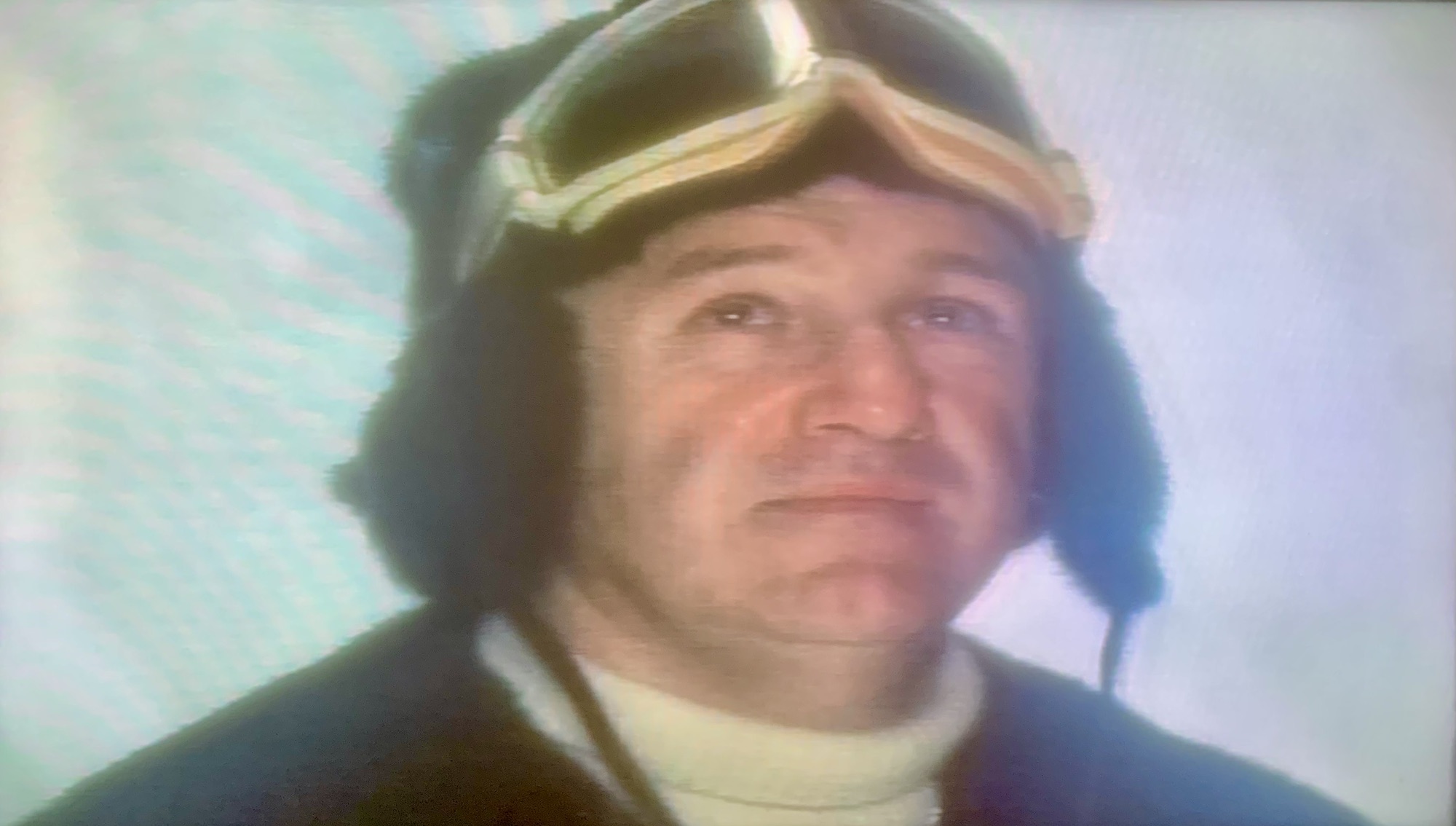
This closeup appears only in the TV cut. It’s the first time we hear Gene Hackman say the line, “They’ll need a contact here on Earth, of course, someone they could trust, someone who has the same wonderful contempt for life, liberty and the pursuit of happiness… it’s too good to be true.” 0:50:58 – 0:52:29 – Luthor and Miss Teschmacher leave the Fortress and head south (Donner footage). This clip also appears as a deleted scene on the DVD and Blu-ray of the Donner Cut. It would also be removed from the ABC telecasts for time, while appearing in its entirety in the Canadian, Danish, and Australian broadcasts.
1:03:26 – 1:03:28 – alternate version of Deputy Dwayne reacting to Zod firing the shotgun on himself (Lester footage). This clip is an alternate take of the shot which appears in the theatrical version and the final version of the Donner Cut in which Dwayne says a clearly audible line of profanity.
This alternate take, which was used in the extended TV cut, features the same closeup but without any line said in the shot. It was also used in the original 122-minute version of the Donner Cut, but was substituted in the final version with the profanity-laced shot.

I actually prefer the silent alternate take myself. 1:04:10 – 1:04:22 – Dwayne and Ursa (Lester footage)
In the shot of Zod sighing, pay attention to when Ursa walks away. This is what happens! 1:07:57 – 1:08:38 – Non kills the boy (Lester footage). This scene also appears in the original 122-minute version of the Donner Cut with a couple of dialogue lines relooped, but it was cut from the final version, along with the entire first sequence in East Houston. This scene was also included in the 2006 documentary “You Will Believe: The Cinematic Saga of Superman”, though it was divided into two parts.
1:11:48 – 1:11:59 – Zod to Non: “Very well, you may try.” (Lester footage)
1:12:55 – 1:13:39 – various reactions to the villains’ attacks (Lester footage). These clips were cut from the ABC broadcasts for time constraints, though they appeared in the Danish and Australian broadcasts unedited.
Don’t ask. Don’t even ask. 1:14:00 – 1:14:03 – Army officers firing on Non (Lester footage)
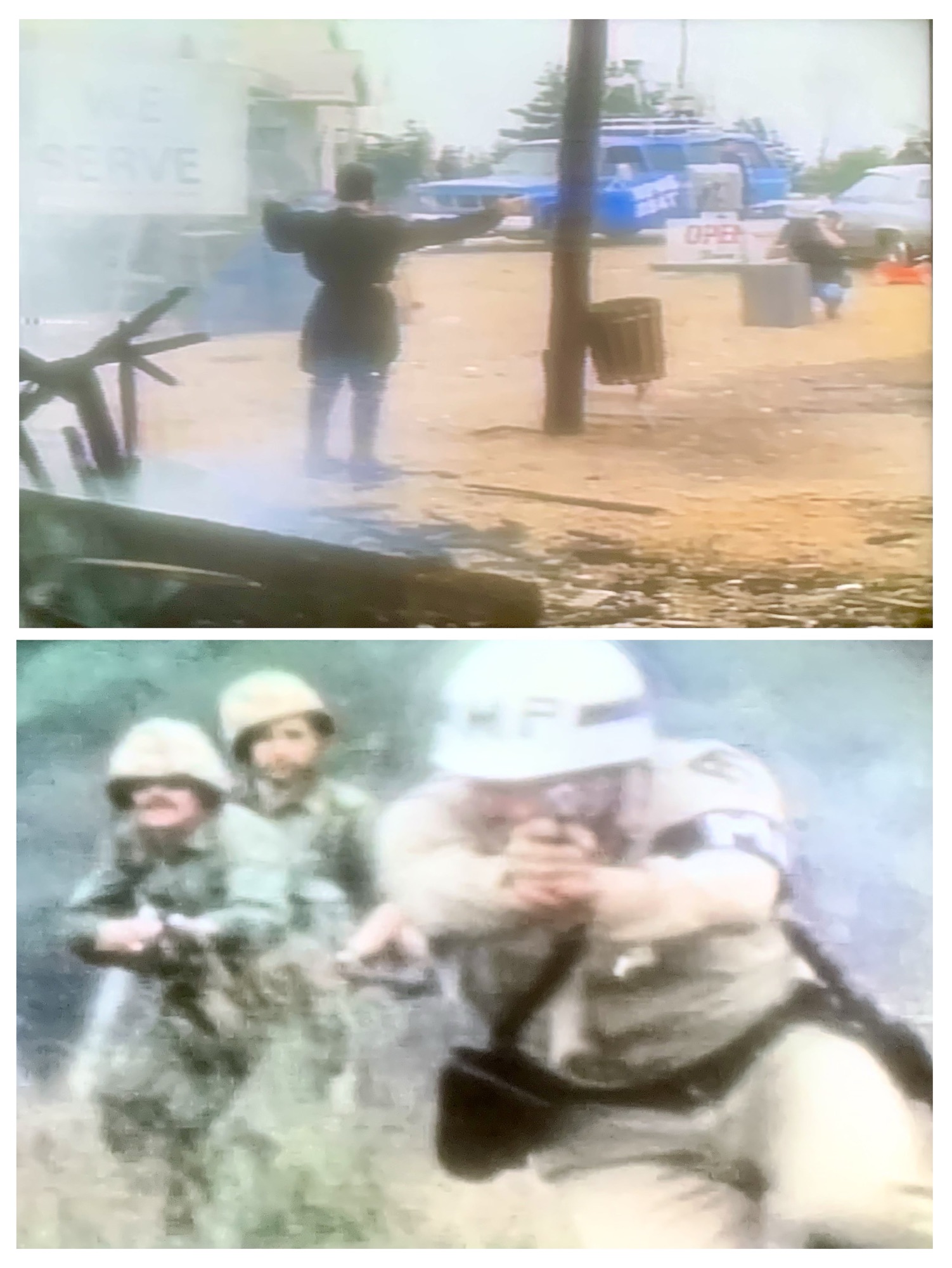
1:14:06 – 1:14:17 – Army officers ordering Deputy Dwayne to clear out so they can fire on Non (Lester footage)

“Get the hell out!” 1:17:58 – 1:18:14 – Lois looks for a place to change her clothes (Lester footage). This brief snippet was cut from the ABC telecasts for time constraints but appeared in the Canadian, Danish, and Australian broadcasts uncut.

1:24:16 – 1:24:21 – “Everything’s under control. Nobody’s going to get in here!” (Donner footage)

1:24:34 – 1:24:42 – Zod fires on the Secret Service agents (Donner footage). The first three seconds of this footage appeared in the ABC broadcasts, while the rest of the footage was trimmed for time constraints. The footage appeared intact in the Danish and Australian broadcasts.
An alternate version of Zod firing on the agents was used in the Donner Cut. The difference is in Terence Stamp’s face. In the take used for the Donner Cut he is smiling, while in the take that appears in the TV cut he is not smiling.
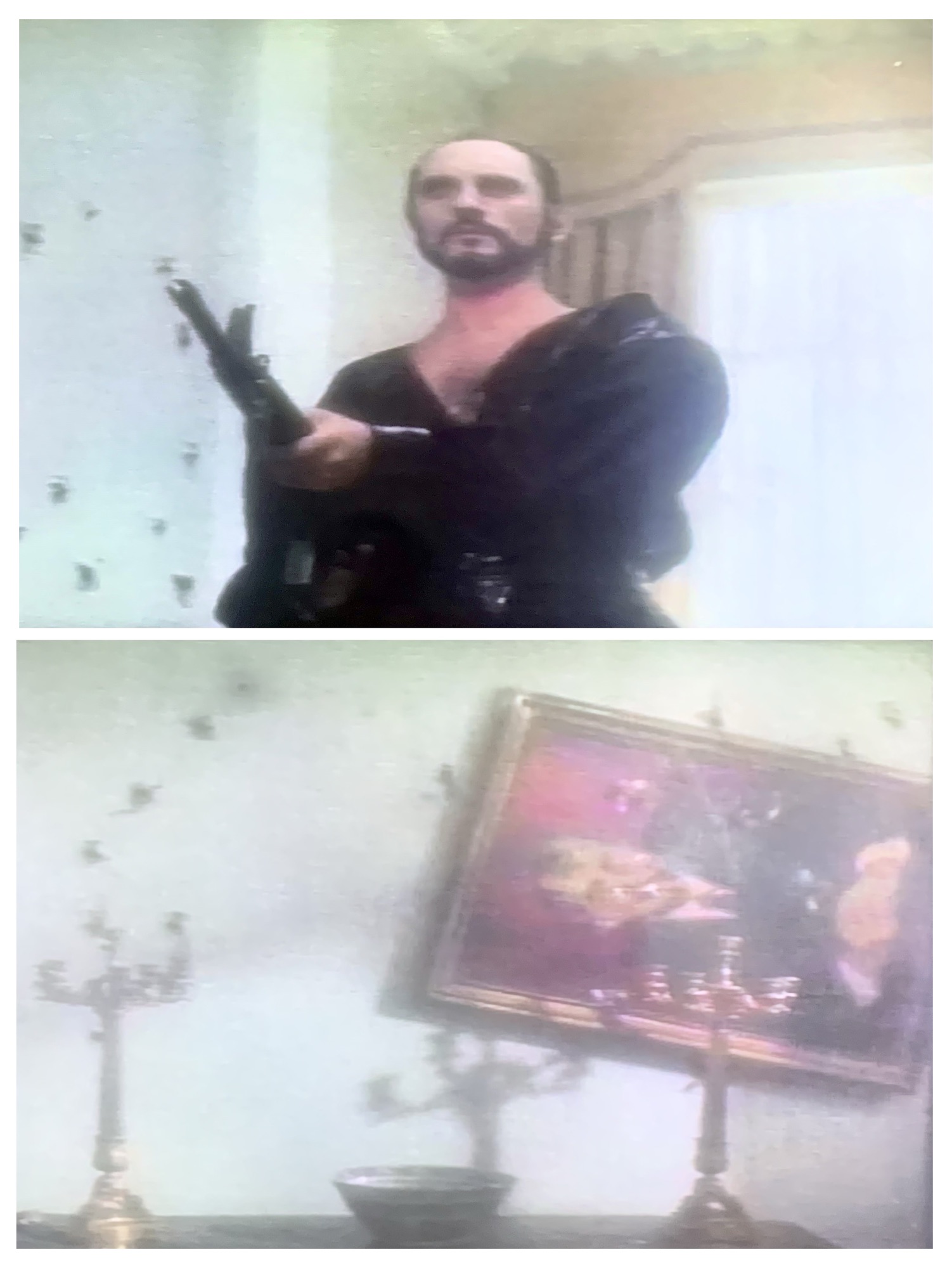

A Polaroid shot of the Nixon portrait getting shot, which appears in the international broadcasts of the extended TV cut, courtesy of CapedWonder.com. 1:24:49 – 1:24:54 – Non growls at the attack dog (Donner footage)
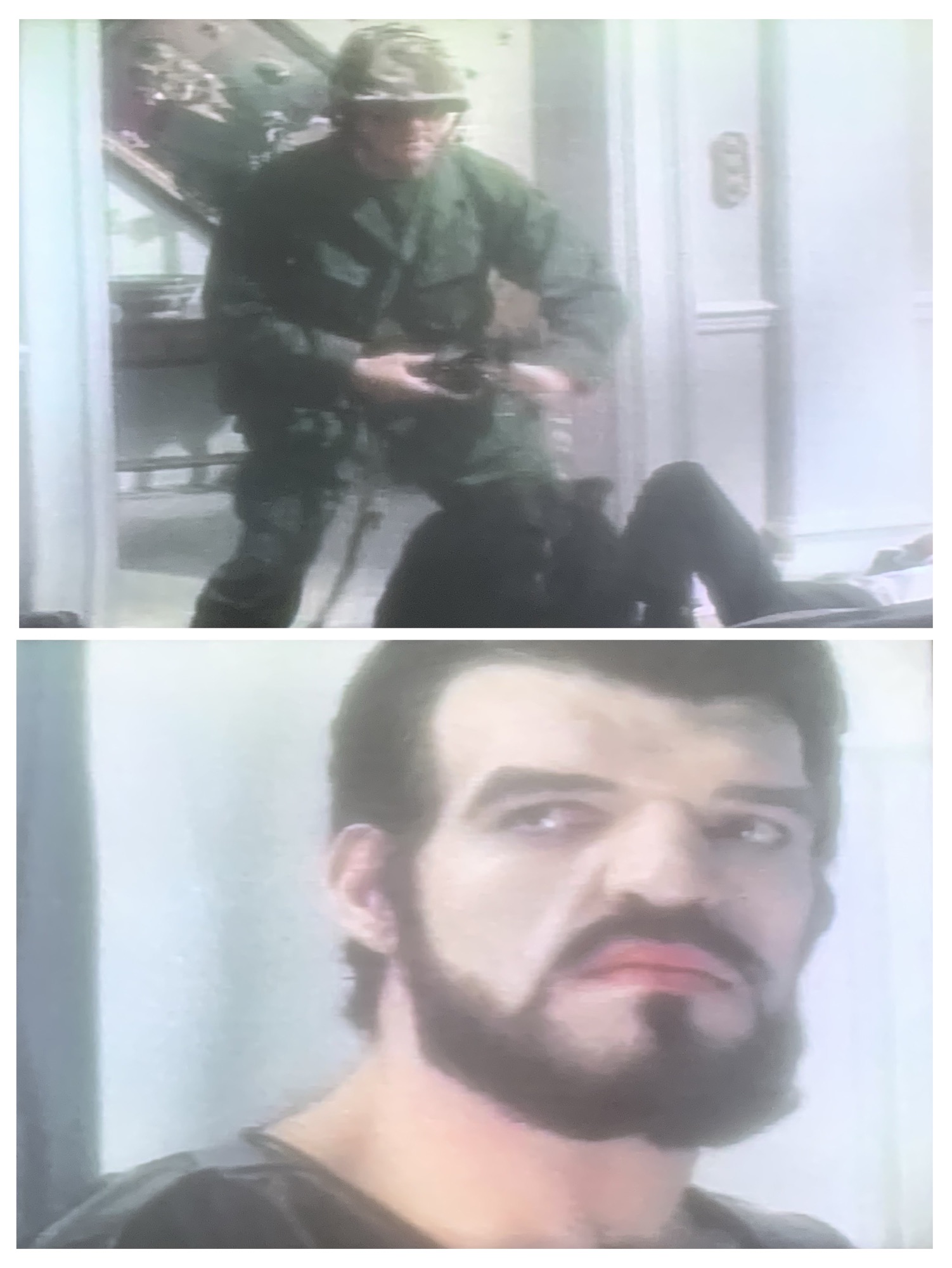
1:26:11 – 1:26:23 – Ursa: “What a backwards planet this must be where the men wear the ribbons and the jewelry.” (Donner footage). This snippet also appears in the Donner Cut in its entirety.
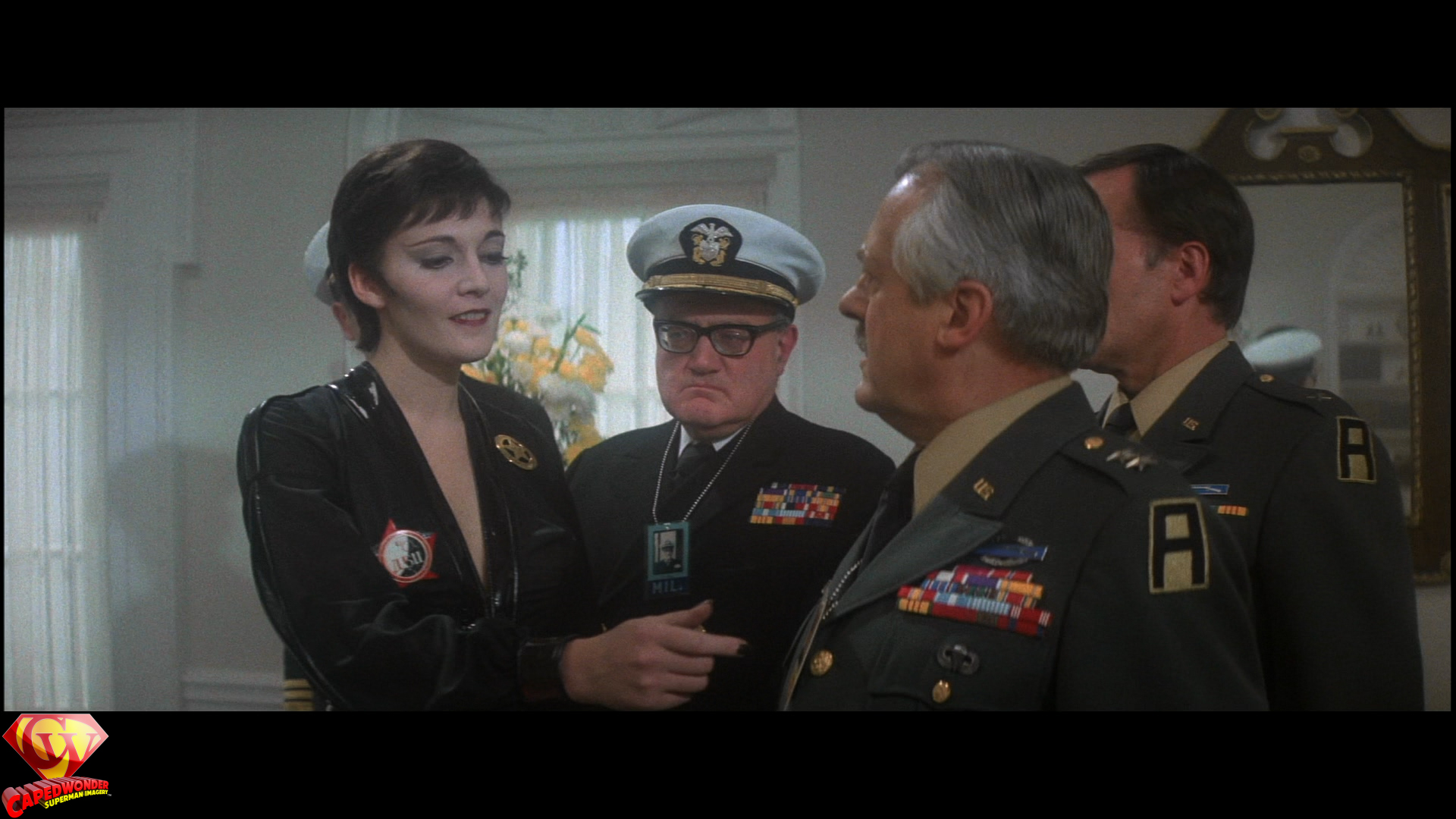
1:27:06 – 1:27:37 – establishing shots of Lois and Clark driving through the mountains (Donner footage – second unit?). The first 19 seconds of this clip were included in the Donner Cut in 2006. The second shot, a longer pullback of the mountains, was edited from the ABC broadcast for time constraints, but it would be seen in the Danish and Australian broadcasts in its entirety.

1:37:02 – 1:37:18 – additional dialogue between Zod and Luthor in the White House (Donner footage). This added bit was included in the Donner Cut.

“The son of Jor-El? Jor-El, our jailer?” 1:38:07 – 1:38:09 – Ursa: “Praying…” / Zod: “Yes, to me!” (Donner footage)

1:38:21 – 1:38:33 – Luthor picks up a cigar and lights it up (Donner footage)
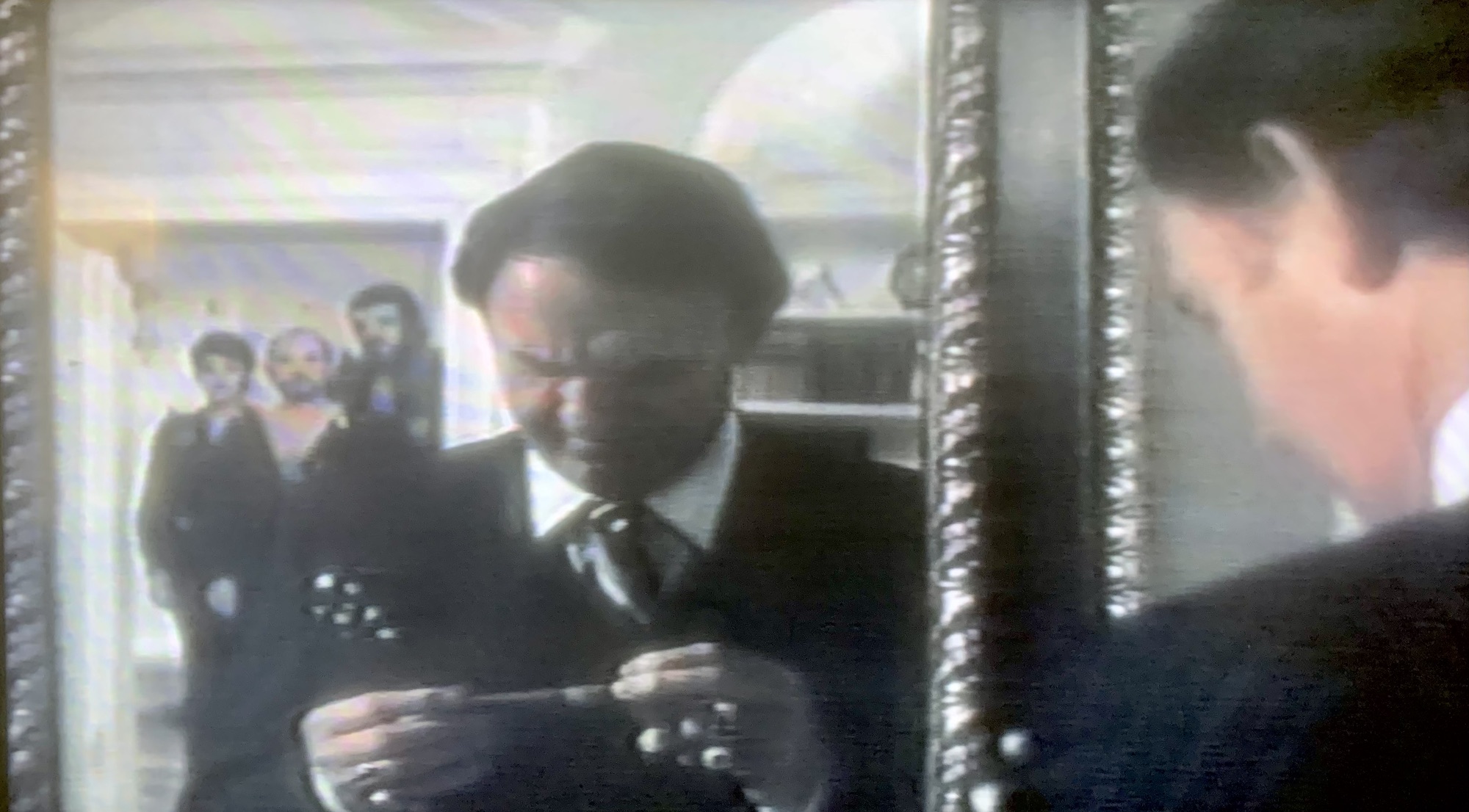
“Havana… check.” 1:40:52 – 1:41:08 – Non crushes Jimmy Olsen’s camera (Donner footage). Most of this footage appears in the Donner Cut…
…except for this bit (or bite). Marc McClure had some real zingers that didn’t get used in the theatrical release or the Donner Cut. 1:41:32 – 1:41:39 – Non picks up Jimmy by the collar (Donner footage). This clip would be used in the Donner Cut. The extended TV cut used a closeup of Zod saying, “This is the son of Jor-El?” But the Donner Cut uses an alternate angle, a two-shot of Zod and Luthor.

This shot of Zod appears only in the TV cut. 1:42:22 – 1:42:30 – added Luthor dialogue (Donner footage). The last part of Gene Hackman’s line when he says, “I can turn over a new leaf, a tree, a whole forest…” would be relooped by a voice double and used at the end of the theatrical release over the shot of Superman and Lois flying away from the Fortress.
Another great moment from Gene Hackman. 1:43:29 – 1:43:35 – Daily Planet onlookers; Jimmy to Perry: “You okay?” (Donner footage)

1:44:42 – 1:44:52 – Jimmy fetches Perry a cup of coffee (Donner footage). This clip was edited from the ABC telecasts for time constraints.
1:45:24 – 1:45:46 – added footage of Non pursuing Superman through the streets of Metropolis (Lester footage). Two brief model shots of Non pursuing Superman were included in the Donner Cut. These added shots, along with the theatrical footage of their flight across the harbor, were cut from the ABC telecasts for time constraints.
1:46:14 – 1:46:22 – Luthor grabs the coffee (Donner footage). The first six seconds of this clip appear in the Donner Cut, but not Jimmy’s retort, “I should’ve spiked it.” This shot was also taken out of the ABC telecasts for time.
Another great zinger from Marc McClure! Michael Thau should have kept that bit in the Donner Cut. I know I would have! 1:55:58 – 1:56:08 – villains return to the Daily Planet (Donner footage). The birdseye angle of the Daily Planet exterior appears in the Donner Cut, while the shot of the villains in flight is exclusive to the TV cut.

The Donner Cut uses an alternate angle of the villains in flight. 1:56:23 – 1:56:31 – villains banter with Luthor and Lois (Donner footage). The TV cut uses an alternate closeup angle of Luthor, which abruptly cuts out when Zod says, “He fled in fear of us!”
In the Donner Cut, an alternate longer shot is used, and we hear his complete line, “You heard him. Three against one, he should have taken two ears and a tail.”
The added shot of Lois saying, “He’ll be back! As long as he’s alive, he’s going to try again,” also appears in the Donner Cut.
1:57:06 – 1:57:21 – Luthor demands Cuba for the location of the Fortress of Solitude (Lester and Donner footage). The shots of Zod are Lester reshoots of the original Donner clips. The shot of Luthor saying, “A small incentive, O Fullest One, a mere bauble to jog the memory…” was used in the Donner Cut, while Luthor’s request of Cuba is a closeup in the TV cut. The Donner Cut uses an alternate longer shot.
1:57:46 – 1:57:57 – flying to the Fortress (Lester footage). This clip appears in the Donner Cut, but with a voice replacement for Terence Stamp.

1:58:27 – 1:59:40 – villains arrive and break into the Fortress (Donner footage). While the final shot of the Fortress is used in the context of the Donner Cut, the entire scene appears as a deleted scene on the DVD and Blu-ray.
2:03:03 – 2:03:09 – Luthor: “General, I helped you through all the tough times, remember? I filled your inside straight!” (Donner footage). The Donner Cut uses an alternate version of this clip.
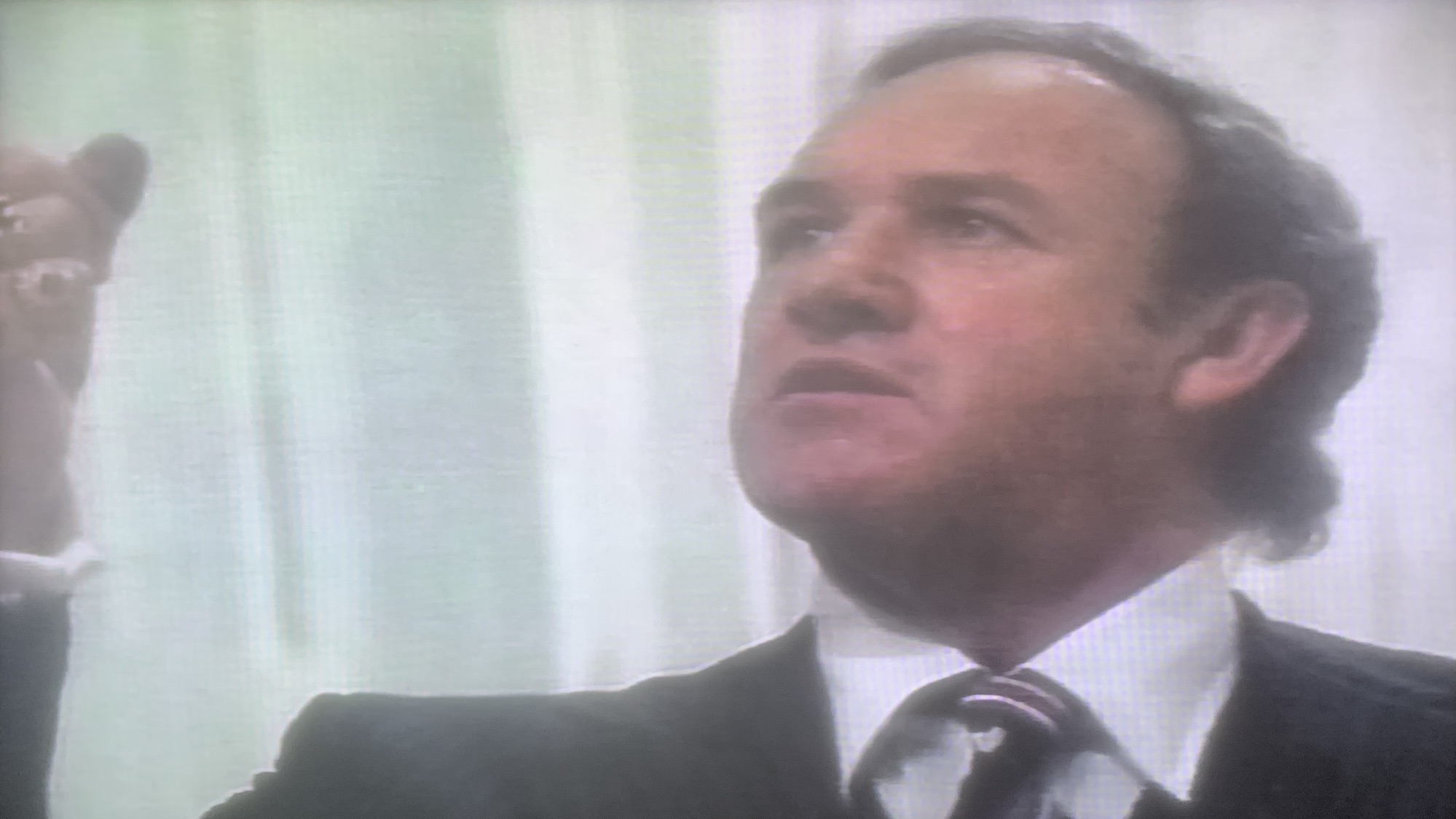
At the end of the extended TV cut, some of the title cards are arranged differently. First, the title card “Special thanks to Howard R. Schuster and D.P. Associates” is removed from the film. Next, the following title cards are not present:
Additional Optical Sequences—Cinema Research Corporation
Howard A. Anderson Co.
Process Photography by Zoptic

This is how the title card appears in the TV cut. I want to say that these credits were not included in the initial theatrical release of the film, though they appear in all versions of the film on video, from VHS to laserdisc to DVD, Blu-ray, and 4K UHD, so I cannot be sure. For some reason this is how I remember seeing the movie when it was initially released, but I could be mistaken. Time genuinely does that.
Additional title cards appear at the end of the extended TV cut. First is the following:
The producers acknowledge with thanks the cooperation of:
Mothercare Limited
Timex Corporation
J.V.C. (U.K.) Unlimited
Essex Motor Sports
(indecipherable) Gucci (sp?) (Eric Shea at Designs Unlimited)
Kentucky Fried Chicken (Great Britain) Limited

If anyone has any clear information on the next to last credit in this shot, please let me know. The final title card reads “Music Editor TV Version – Michael Clifford”.

He did an admirable job re-editing and remixing Ken Thorne’s music for the extended scenes. MISCELLANEOUS
In two places of the extended broadcasts there are occurrences of dialogue replacement. During the scene of the sheriff’s encounter with the Phantom Zone villains, at the 1:02:35 mark, he says, “Did that son of a gun give me an order?” This replaces the profanity in the theatrical version, in which Clifton James says, “Did that son of a bitch give me an order?”
A few seconds later, once the sheriff hands his deputy the shotgun, at the 1:02:40 mark he says, “You gotta learn to kick hard if you want to be a peacemaker.” This replaces the profanity in the theatrical version in which he says, “You gotta learn to kick ass if you want to be a peacemaker.” Interestingly enough, both lines can be heard in the Restored International Cut with the profanity intact.
Sounds like whoever dubbed over Clifton James’ lines for the TV cut must have been holding his nose while relooping the lines! In the ABC broadcasts, after Ursa slams the trucker through the table, a second of footage of General Zod sighing is briefly edited from the film for time constraints.
During the villains’ attack on the White House, once Non throws the broken pillar, causing the Army officer to fire on the chandelier, the closeup of the injured officer is not present in the ABC broadcasts, edited either for time constraints or for violent content.
For the ABC telecasts only, during the first scene at Don’s Diner, the line spoken by Rocky (actor Pepper Martin) is briefly edited to where he says, “I don’t like you anyway,” as opposed to the original line, “I don’t like your meat anyway.” This brief edit was made to remove any potential sexual connotations towards Lois, though the line appears intact in the international telecasts of the extended TV cut (and the Restored International Cut).
In the Canadian telecast, during the scene of the villains’ rampage in the Daily Planet, once Luthor says, “You just hold onto that little lady, and he’ll be along,” the scene ends. The rest of the sequence was edited from the broadcast to fit the film into a three-hour time slot.
Finally, there is an alternate insert that was included only in the ABC telecasts of the film. During the opening credits montage, at the 4:34 mark, an added insert of Jonathan and Martha Kent is included to cover up the full frontal nudity of the infant Kal-El as he emerges from the remains of his starship. This insert runs two seconds long and ends at the 4:36 mark.
As I bring this to a close, I have to ask the big question: are all of these added scenes worth it? Some clearly are, as they were used in the Donner Cut. Some shots, particularly a number of the Lester scenes, are clearly comic padding and add very little to almost no material value to the story other than what the Salkinds had intended: to pad the film out and bring in more advertising dollars. And some of the additional Lester clips are definitely worth keeping.
Some fans have created their own fan recuts of Superman II, using the best of the Donner and Lester scenes to create a more comprehensive story. Others, like the anonymous editor of the Restored International Cut, for example, sought to restore the extended cut to as best a version as possible to give Warner Bros. an incentive to release the full Richard Donner cut and the extended TV cut on disc in an official capacity.
If this doesn’t give you more motivation to contact Warner Home Video and politely ask them to release the extended TV cut of Superman II on Blu-ray as part of the Warner Archive Collection, I don’t know what will! It’s in their vaults, and like the Blu-ray releases of the extended TV cut of Superman and the international version of Supergirl, it would be a huge seller for Superman fans everywhere.
Why this trailer never got included on the DVD or Blu-ray, I’ll never know. Warner Bros., can you make this happen too? And here’s a little bonus for you: in the shot of Superman hurling a powerless Zod across the Fortress, pay attention to Lex Luthor. That is clearly not Gene Hackman, but in fact a stunt double! How can you tell? Look at the stunt double’s hairpiece. That is clearly different from Hackman’s own hair. See for yourself:

So who is the stunt double here standing in for Hackman? (Some of the photographs and screenshots in this blog are used courtesy of CapedWonder.com.)
-
Marketing “Superman IV” for Home Video

I recently acquired this Warner Home Video flyer for my collection. In loving memory of Dan Goozee, the artist of this beautiful artwork, whom we recently lost this past April. After the critical and commercial failure of Superman IV: The Quest for Peace at the box office, it wasn’t long that Warner Bros. would gear the film up for its eventual release on VHS and laserdisc. By the fall of 1987, the window between a movie’s theatrical release and its debut on home video was shrinking, and movies became more and more affordable to the masses. At this point Betamax had gone the way of the dinosaurs, leaving only VHS and laserdiscs as the two leading formats in the home video market wars of the time. So it was no surprise that the fourth (and final) installment of the Christopher Reeve film series would make its debut on home video rather quickly after its theatrical run.
When you think about it, four months is not a long time for a film to arrive on home video. At that point in the 1980s, such a window began to shrink. Take Purple Rain, for example. The 1984 summer movie which marked Prince’s film debut earned over $70 million at the box office on a very modest $7.2 million budget, making it one of that year’s biggest hit films and generating a hugely successful album with several hit songs that still stand out to this day. When the movie came out on VHS, it was still playing in theaters, and Warner Home Video was quick to capitalize on its success. I want to say that it came out on video in September of 1984, as my parents got the tape for me for my birthday when I turned 18, and it was priced at a very affordable $29.98 MSRP for its time, one of the very first home video releases to do so in such a short period of time. Nowadays it’s not uncommon for a movie to go to digital or Blu-Ray within a month or two at most, regardless of its success or failure, but back in 1984 this was truly unheard of. (Oddly enough, last year I found the film on Blu-ray at the local Big Lots for all of five dollars!)
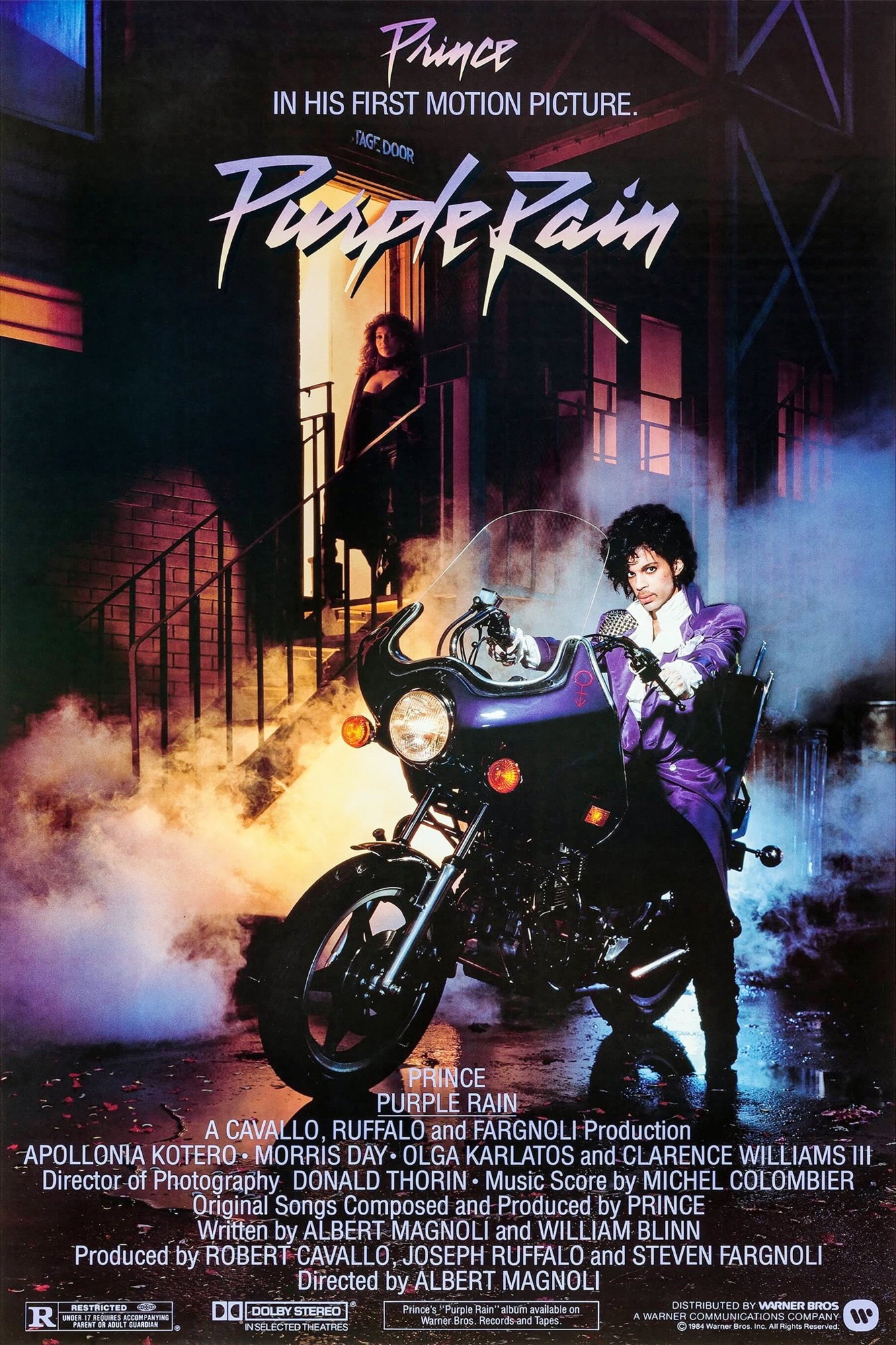
The summer of 1984 really had a lot of great box office hits, didn’t it? But Purple Rain was not the first movie to hit home video at an affordable price. Other movies, including the second, third, and fourth Star Trek movies; Raiders of the Lost Ark; and Top Gun all made their home video debuts at relatively low prices. And by early 1985 Paramount Home Video began selling individual episodes of the original Star Trek on VHS at insanely low prices. Eventually, older movies which were initially priced anywhere between $70 and $90 were being re-released at much lower prices, making them more affordable for home video fans who didn’t want to shell out the big bucks for just one movie. (Tell that to the kid who went to the local Camelot Music at Metrocenter and shelled out 70 bucks for the first VHS release of Superman: The Movie in 1980, four years before we got our first VCR!) And it wasn’t just for hit movies or classic television shows. It was now across the board.
In the case of Superman IV, Warner Bros. executives knew that they had to try to recoup their losses somehow after its disastrous box office performance. That meant putting it out on the rental market at first to gauge moviegoers’ responses. Because the film had failed and disappeared from theaters in a matter of weeks—I remember it leaving my hometown of Jackson, Mississippi, after only four weeks at the Metrocenter Cinema 4, where the previous Superman movies had premiered—there were obviously some people who either didn’t get the opportunity to see it during its theatrical run or chose not to go, given the overall negative reception from film critics and casual audiences (imagine how it would have played out during the social media era). I still recall seeing a group of kids around seven or eight years old each who were all into wanting to see Robocop, which had been tuned down from an X rating to an R rating because of the excessive amount of violence in the movie. Superman didn’t interest them, but Robocop did.
And part of the publicity strategy was to emphasize those reviews that played up to the film’s strengths rather than its flaws. Unfortunately, there were not a lot of positive reviews of the film upon its release. I recall my local newspaper, the Jackson Daily News (the evening version of the Clarion-Ledger) publishing a review, and while I do not have a copy of it anymore, I seem to recall it saying that Superman was starting to look a bit threadbare. I may be wrong, but for some reason I specifically recall that word in the review. Another review called the film “Superman on a Shoestring”, and even Christopher Reeve himself wrote in his 1998 autobiography Still Me, “The less said about Superman IV, the better.” He went into further detail about the film’s low budget and the compromises that were made in filming the scene of Superman’s arrival at the United Nations, commenting how Richard Donner would have spared no expense to make the scene look right. Given that the production had occurred at a very low point in his professional and personal life, it’s understandable why he made such a comment and wanted to distance himself from the negative memories associated with the film, even years after its release. But there had to be some positive reactions out there somewhere, right?
The most prominent positive excerpt comes from Desmond Ryan’s review in the Philadelphia Inquirer when he wrote, “Superman is still flying high. It’s good fun.” This excerpt is prominently featured on the VHS and laserdisc releases.

The original VHS release… 

…and the original laserdisc. But that’s not the only positive comment that’s out there. Janet Maslin also had some kind words about the film in her review for the New York Times: “Christopher Reeve is still giving this character his all, and especially in his bumbling Clark Kent incarnation he remains delightful.”
And in her review for the L.A. Weekly, Mary Beth Crain commented, “Genuine summer moviegoing F-U-N. There’s enough modern-day wish fulfillment to make everybody happy.” If only more reviewers had been kinder to Superman IV at the time. I’m sure there probably were, but at the time those were few and far between.
It’s based on the strengths of these three comments that Warner’s marketing team wanted to play on the film’s positive appeal in their attempt to get viewers and fans excited about the film’s release on home video that fall. And in their marketing strategy they included these excerpts in a promotional flyer that would be sent to video stores across the United States.
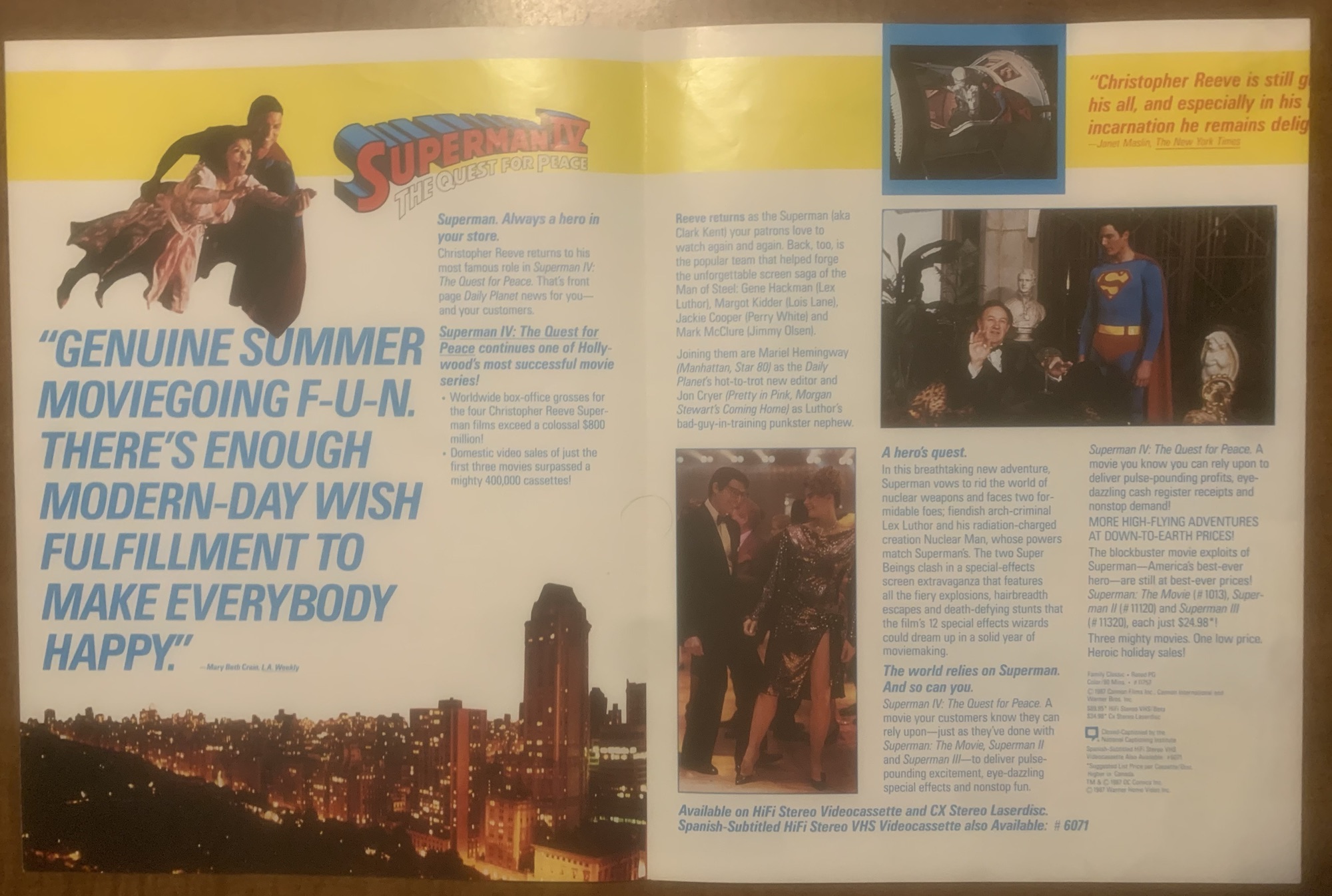
What makes the flyer interesting is that the Warner marketing team used images from scenes that were not featured in the theatrical release at all. One such image is the scene of Superman saving Red Square from a nuclear missile going awry. (It would be included in the Cannon Films international release, but American audiences wouldn’t see the sequence in its entirety until the syndicated TV broadcast beginning in April 1990.)
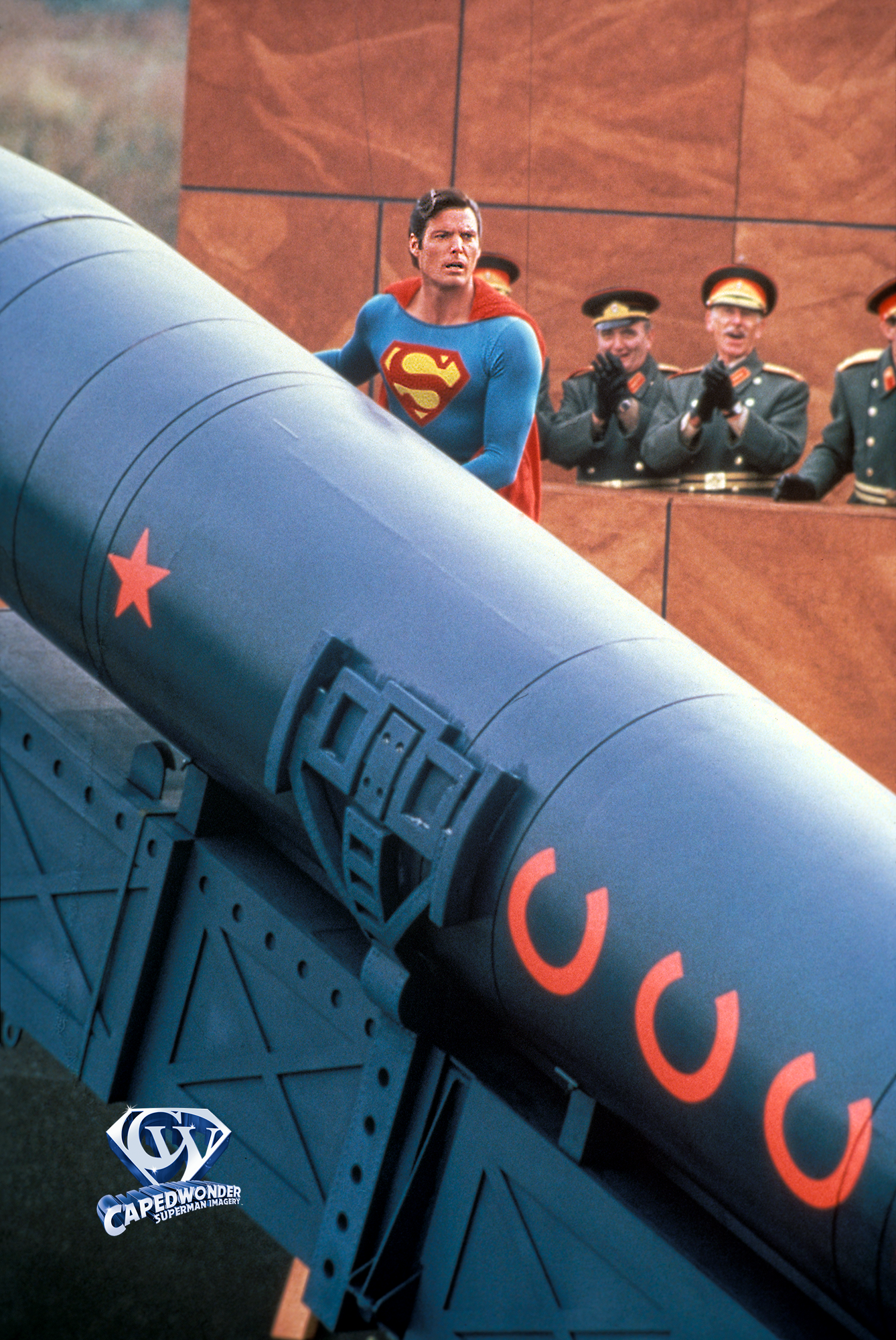
Even worse, they also included a shot of Clark and Lacy dancing together, which was taken from the lost Metro Club sequence, which has not been seen since its lone sneak preview screening in Orange County, California, in June 1987.
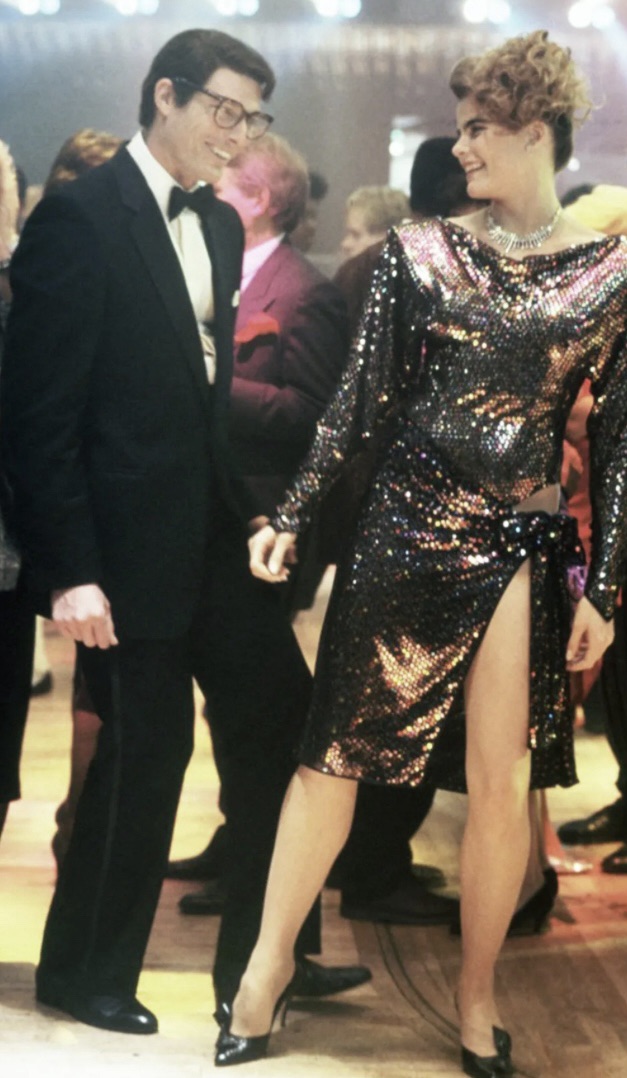
Behind the scenes pictures, the Scholastic novelization, the DC Comics adaptation, and the soundtrack release give us an idea of what the scene would have looked and sounded like. But that’s not all. Warner Home Video also promoted the first two volumes of The Adventures of Superman, the classic 1950s series featuring George Reeves as the Man of Steel. Each tape featured two episodes of the series, one from the first season and one from the final season, along with a segment of the 1940s Fleischer Studios animated theatrical series. Priced at an affordable $29.98 each, Warner Home Video would release two further volumes in 1988, along with the first-ever video release of the uncut 1951 feature film Superman and the Mole Men.
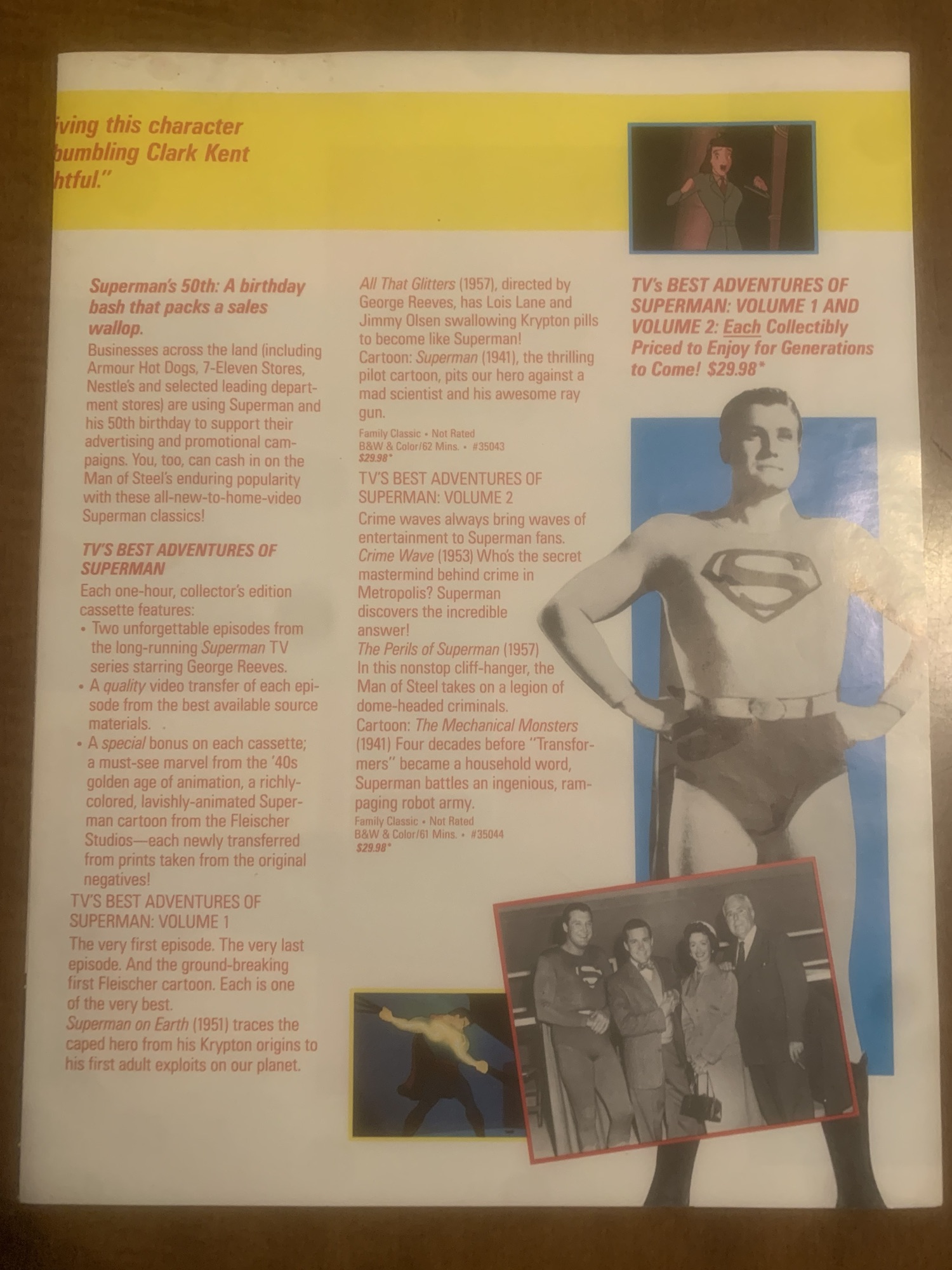
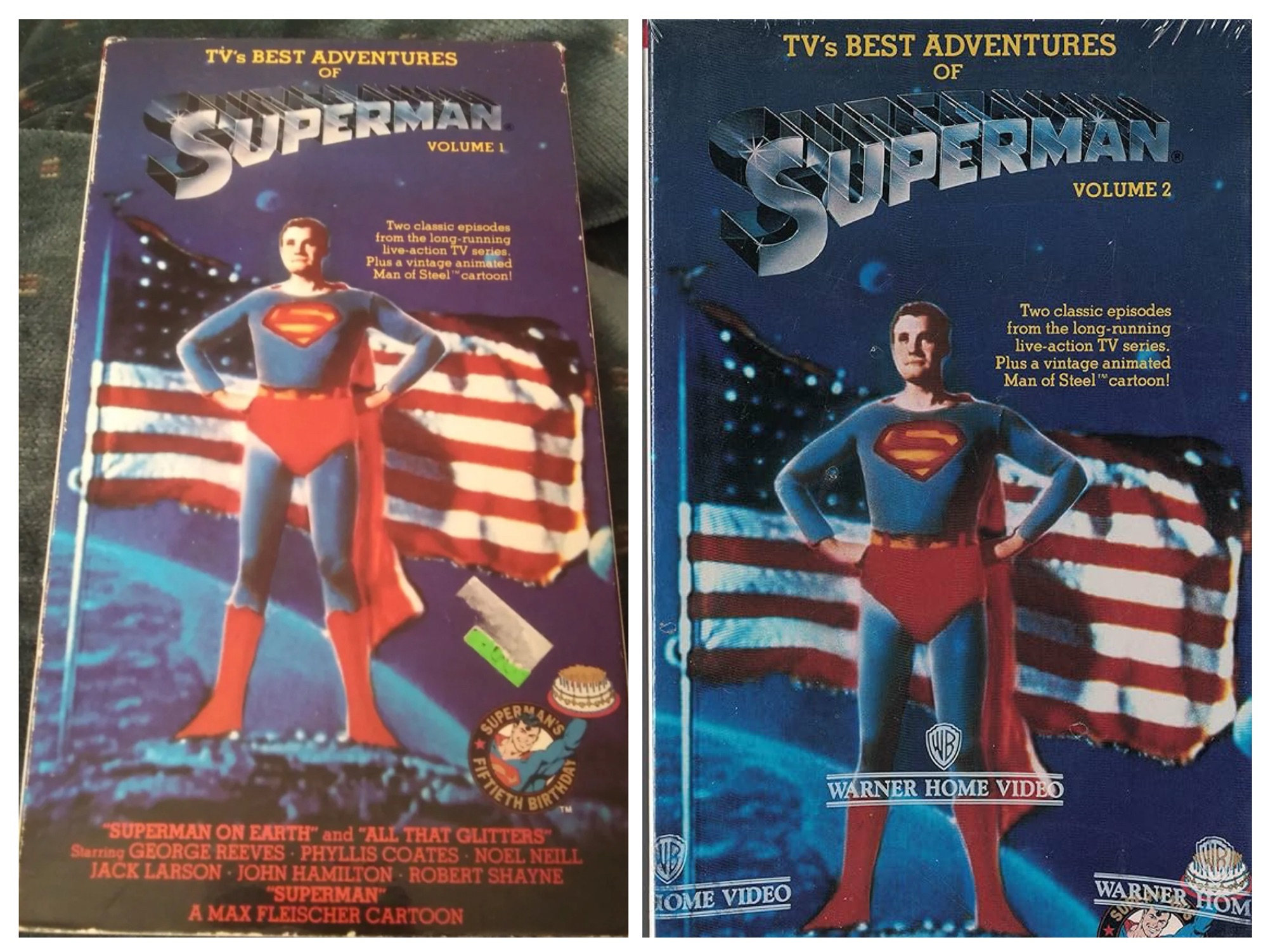
In 1995 Columbia House would release the series on VHS with three episodes per tape. Then came the series on DVD in 2006. And next year we will see the series arrive on Blu-ray. But here’s what’s interesting about the home video releases of Superman IV. The MSRP for the VHS release was set for a whopping $89.98, while the laserdisc was priced at a much more affordable $34.98. This was clearly a marketing strategy designed to gear the VHS for rental first, to drum up interest again for the movie, until the rental stores phased the tapes out and recycled them into their bargain bins for mere pennies on the dollar a couple of years later. Laserdiscs, however, were the higher-quality parlor products through the 1980s and the 1990s prior to the advent of DVD.
Of course, by now the first three Superman movies were re-priced at a much more affordable sell-through price of $24.98 apiece. That means you could have scored the first three films for less than what you’d have shelled out for Superman IV! (Then again, I am that kid who spent $70 of his hard earned allowance to get the first movie on VHS in 1980, but by the fall of 1987 I was a broke college student who couldn’t have afforded to shell out 90 dollars for a single tape! Priorities when you’re 21!) Don’t get me wrong, I’m sure there were some people who went all out and spent the 90 dollars for the VHS tape. I just wasn’t one of them.
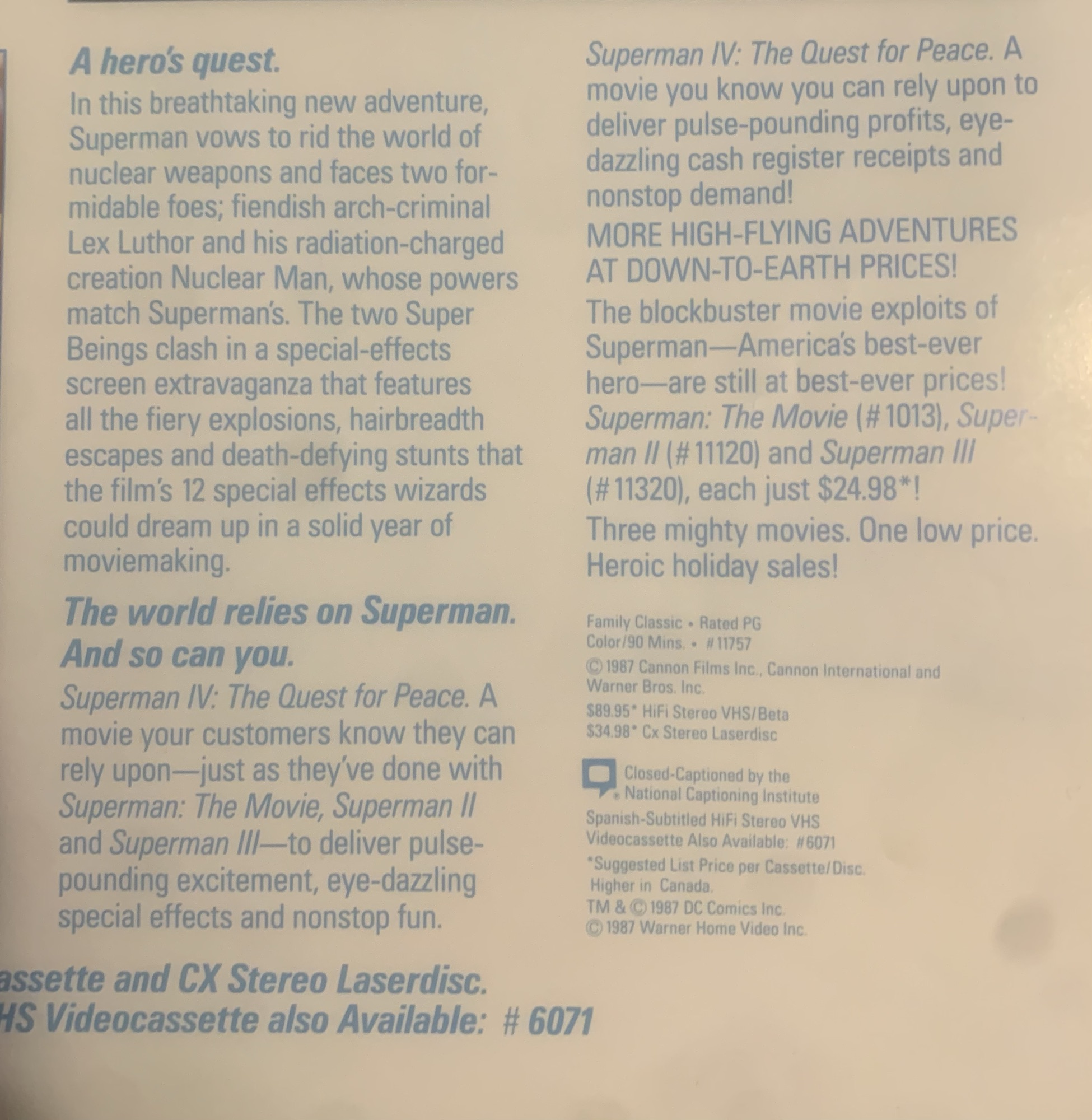
Just how did those pulse-pounding profits, dazzling cash register receipts, and nonstop demands actually fare back then? By 1989 Superman IV would reach the movie networks, with HBO and Cinemax scoring the first broadcasts. And it would be at least another 12 years before we would see the first-ever DVD release of Superman IV in its original theatrical aspect ratio, and another five and a half years before we would see a plethora of those lost scenes on the deluxe edition release. And somewhere in a Warner Bros. film vault sits the complete 134-minute cut, in exactly what condition nobody knows.
But it’s interesting to see how the marketing team at Warner Bros. were serious about going all out to recoup the money they lost with Superman IV. As with the film itself, at least their attempts were sincere.
(Some of the images in this blog appear courtesy of CapedWonder.com.)
-
The Brando Biopic
So for a little while now we have known that a new biopic on the life and career of the legendary Marlon Brando has been in the works, with Billy Zane of Back to the Future and Titanic fame portraying Brando. But now we have proof that Zane is going to take it one step further to a key moment in Brando’s legendary career, and this is proof that a picture truly says a thousand words…

I don’t need to say anymore!
-
That Japanese laserdisc…

Love that Kanji script for the crystalline logo! Recently I obtained my first region-free Japanese Blu-ray set, the 2023 blockbuster film Godzilla Minus One which was released in a variety of versions and included the equally acclaimed Godzilla Minus One: Minus Color variation, and it had me thinking about another movie that has a unique twist to it that continues to fascinate fans to this day.
One of the more important and unique collectibles I have had in my collection over the years was without a doubt my copy of the laserdisc of Superman IV: The Quest for Peace which was released in Japan by Tohokushinsha Video and King Video. Of the four films in the Christopher Reeve series, this particular version of IV has had the most interest to me on many different levels. So let’s break everything down and take a look at them in no particular order.
Right on the front cover we notice that this has the Cannon Films logo at the top of the laserdisc package, which informs us that this is the international version of the film. As we know, the film was cut down from its original 134-minute length after its disastrous sneak preview in Orange County, California, in the middle of June 1987 to a mere 89 minutes for its theatrical release only a month later in the United States and Canada from Warner Bros. However, visual effects supervisor Harrison Ellenshaw insisted that two additional scenes be restored to the film for the international release from Cannon Films, that of the tornado sequence and Superman saving Red Square in Russia from a nuclear attack, bringing the run time to 92 minutes in various markets including (but not limited to) the United Kingdom, France, Japan, Germany, and Australia, among others. This is confirmed by the censorship reel logs from the studios at the time of its release.
The subtitle on the front cover, however, implies something completely different. When translated from Japanese to English, it becomes known as “The Strongest Enemy”. Does it work better than “The Quest for Peace”? In my mind probably not, since it implies that the Nuclear Man is the central villain of the story. The German subtitle “Die Welt Am Abgrund”, also known as “The World at the Abyss”, has much more meaning and depth to it and would have worked a lot better had all of the film’s original nuclear subplots remained in the film.

The back cover of the laserdisc reveals even more interesting tidbits to us about this print of the film. As it is listed here, the running length of the film is 93 minutes, so what in particular makes this cut of the film even longer?
For one, it contains the two additional scenes that were not included in the U.S. version, the tornado sequence and the scene of Superman saving Russia from attack by the Nuclear Man. Both scenes are included here in their finished format with completed visual effects and music, and they would not be seen by U.S. audiences until April 1990, when the extended version of Superman IV was shown in numerous syndicated markets across the country, including WGN In Chicago, Superstation TBS in Atlanta, WPIX in New York City, and WDBD-TV 40 in my hometown of Jackson, Mississippi, among others. That syndicated print was distributed by Viacom, which used the Warner Home Video release and the international version as the template for the broadcast, although it trimmed some shots for advertising purposes. Of those four stations that I referenced, the print shown on Superstation TBS had the most complete print, with all of the footage from the film intact, especially the tornado sequence.
(What’s even more interesting about the syndicated version shown in Chicago and Jackson is that it included a TVNet trailer at the start of the broadcast that included a brief snippet of Clark and Lacy kissing in the back of a cab, and at the end of the trailer we clearly saw a crystalline version of the Superman IV logo, both of which were taken from the Cannon Films international trailer.)
Through the 1990s the fledgling Internet was besieged with rumors that the complete 134-minute cut was the final film shown on the now defunct SFM Holiday Network, but nobody could supply the proof, and it later turned out to be debunked by a number of hardcore Superman fans, including me. I believe that if ABC had acquired the rights to the film, we could have gotten that complete 134-minute cut extended and fully restored for television, as with the first three films. Then again, look what happened to Supergirl, and that turned out to be a messy affair. So there’s no way of knowing.
A remastered version of the international trailer, which includes the deleted scene of Clark and Lacy kissing, and the crystalline logo that appeared in the TVNet syndicated trailer in the Chicago and Jackson markets. Also, the film contains some slightly different presentation credits, beginning first with the Japanese release credits, as the film was distributed in a joint partnership between Tohokushinsha and Shochiku Fuji Co., Ltd.
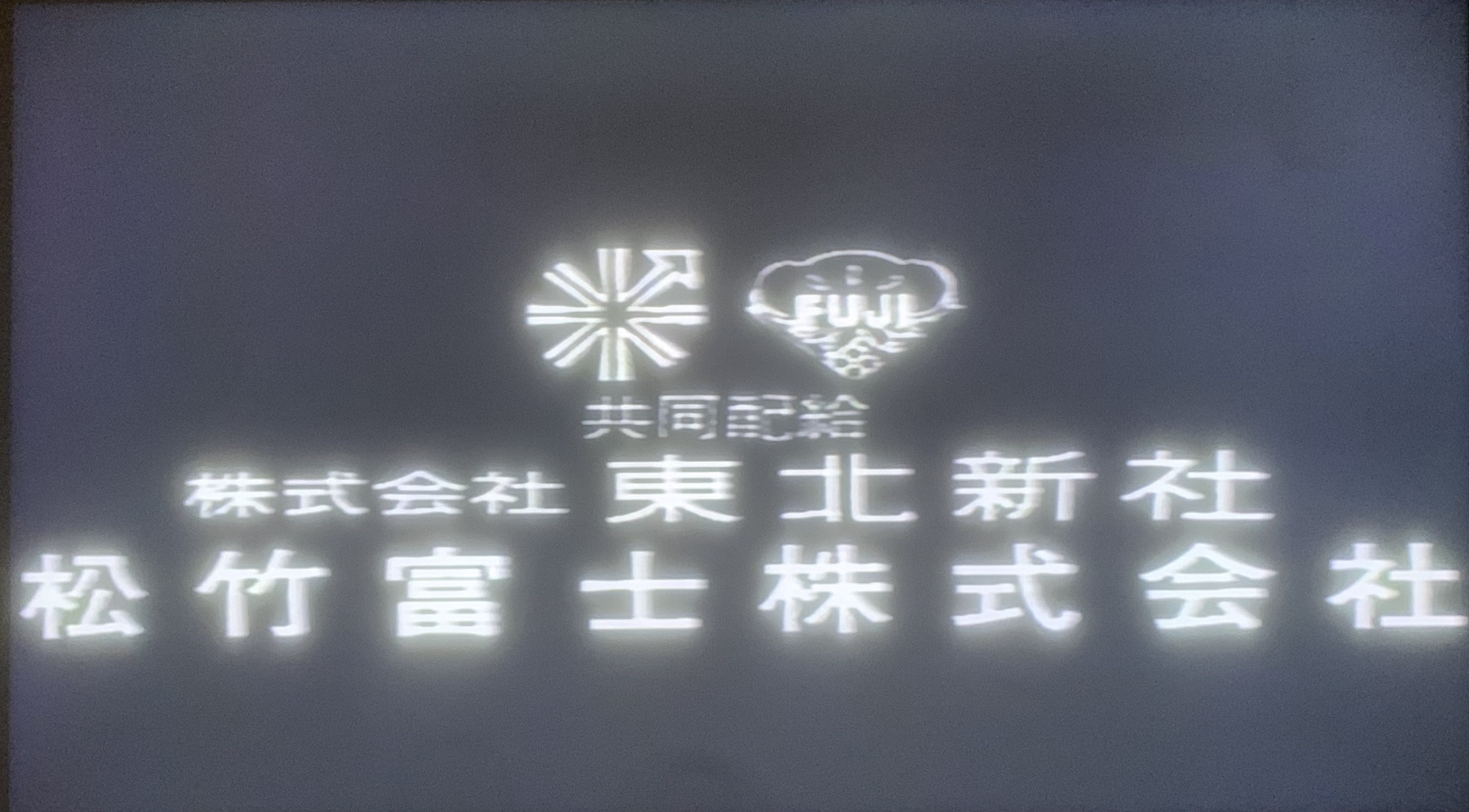
The image quality isn’t the best, but it’s what I had access to. The film then continues with that beautiful crystalline logo in the Kanji script, along with the subtitle which translates into “The Strongest Enemy”. It is here that we learn that Natsuko Toda provided all of the translation for the film’s release in Japan.
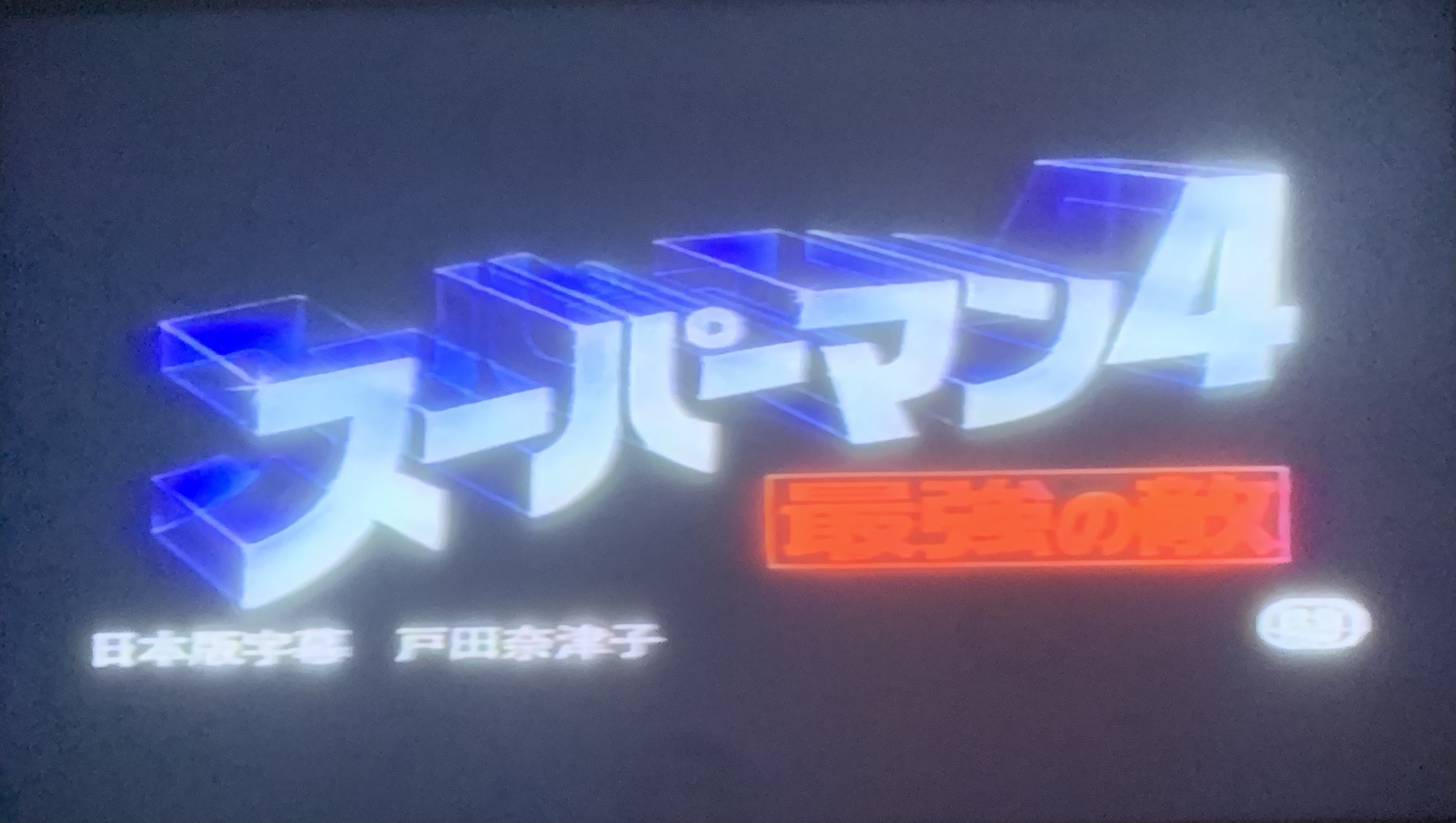
From there we have some slightly different main title credits which are different from the U.S. title credits. It’s not much different, and it’s done in the same style as the U.S. titles, but… well, you get the point.
Imma just leaving this right here. One of the more noticeable differences between the U.S. print and the Japanese print is that the foreign language subtitles are superimposed on the right side of the screen, as opposed to the bottom of the screen, as evidenced by these two screenshots of characters speaking in Russian and Italian, respectively.

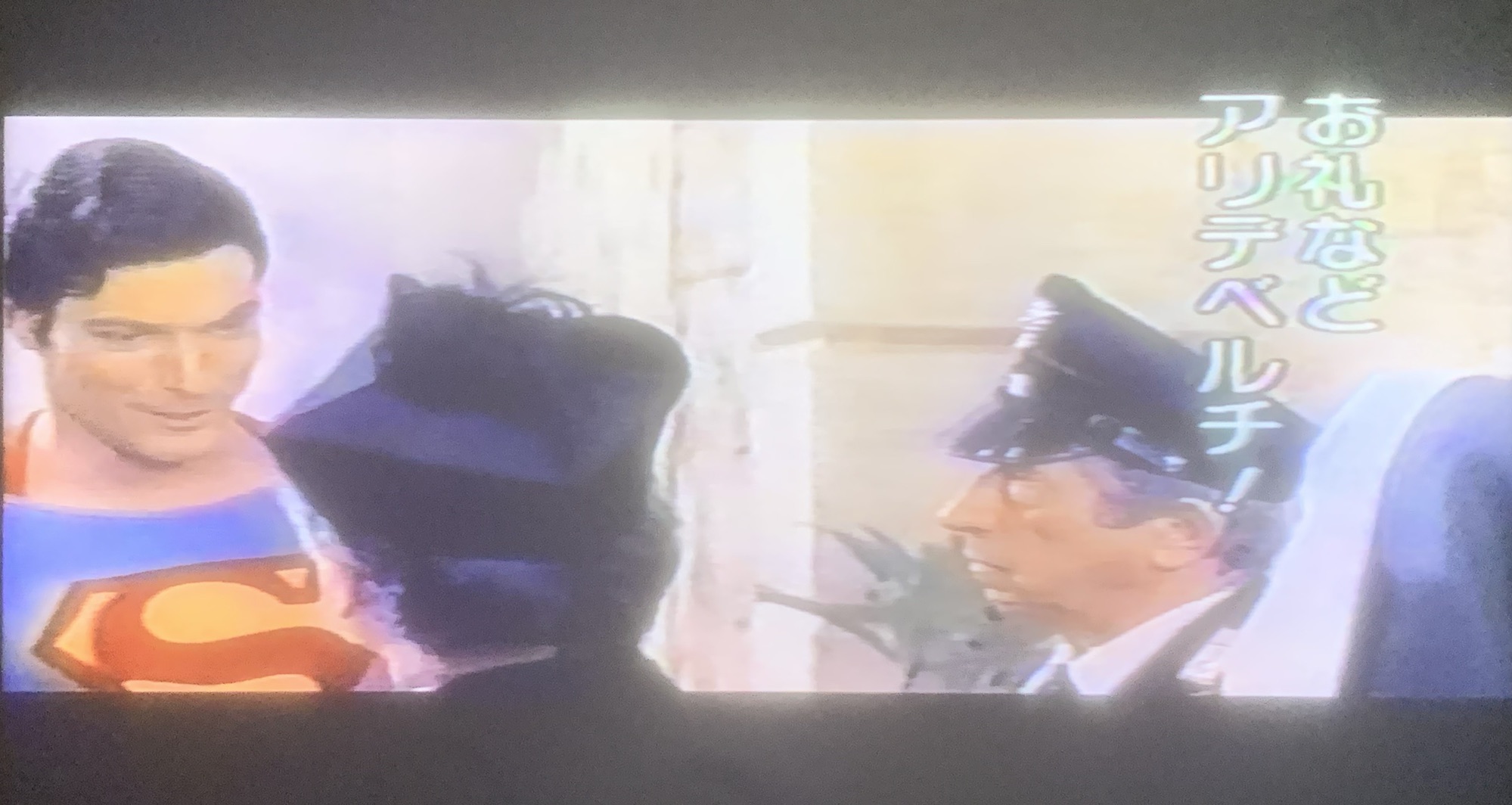
I recently spoke with film reviewer and YouTube producer Oliver Harper, who confirmed some key points about the Japanese laserdisc release that I had known about for years. First, the entire print of the film is presented in a 2:1 aspect ratio, as opposed to its original 2:35:1 aspect ratio, so you’re not getting all of the image in the Japanese print. Oliver also confirmed that the laserdisc sourced a PCM surround track, which gives the film a flat sounding quality, as opposed to the Dolby stereo track on the U.S. laserdisc from 1987 and the later 2.0 tracks on the DVD and Blu-ray versions and the Dolby Atmos track on the 4K UHD release. He also pointed out that the print used for the laserdisc is quite dirty in places.
In addition, Oliver pointed out that the Japanese laserdisc contains no chapter stops whatsoever, as opposed to the 16 chapter stops on the Warner laserdisc (seven for the A side, nine for the B side), which makes jumping to the added scenes pointless.
Furthermore, there’s a difference between the dividing points between the Warner and Japanese laserdiscs. On the Warner laserdisc, the A side ends with the scene of Clark saying to the weight trainer, “No pain, no gain?” before switching sides and beginning the B side with the Nuclear Man arriving at Luthor’s penthouse. On the Japanese laserdisc, the A side ends with Luthor saying, “Nobody’s perfect,” and the B side begins with the double date.
As for the tornado and Russia scenes, these clips are the best quality I’ve seen them, even better than on the Japanese laserdisc and without the superimposed subtitles at the bottom of the screen.
That’s Christopher Reeve’s children Matthew and Alexandra in the sequence, which was shot early in production circa late September 1986. Believe it or not, this sequence was filmed on a backlot! In the version of this scene that appears on the Warner Home Video DVD and Blu-ray, you can clearly see part of the background which included scaffolding and cars! The rest of the shot was painted in with a matte painting to blend with the live action footage. The film ends with another title card indicating that King Records Co., Ltd., assisted Tohokushinsha and Shochiku Fuji with the selling of the film to the Japanese markets.

But that’s not all. The laserdisc also includes a great looking insert about the history of the character and the development of the film, as written and compiled by Hiroshi Temiya (who also provided the text for the back cover of the laserdisc).
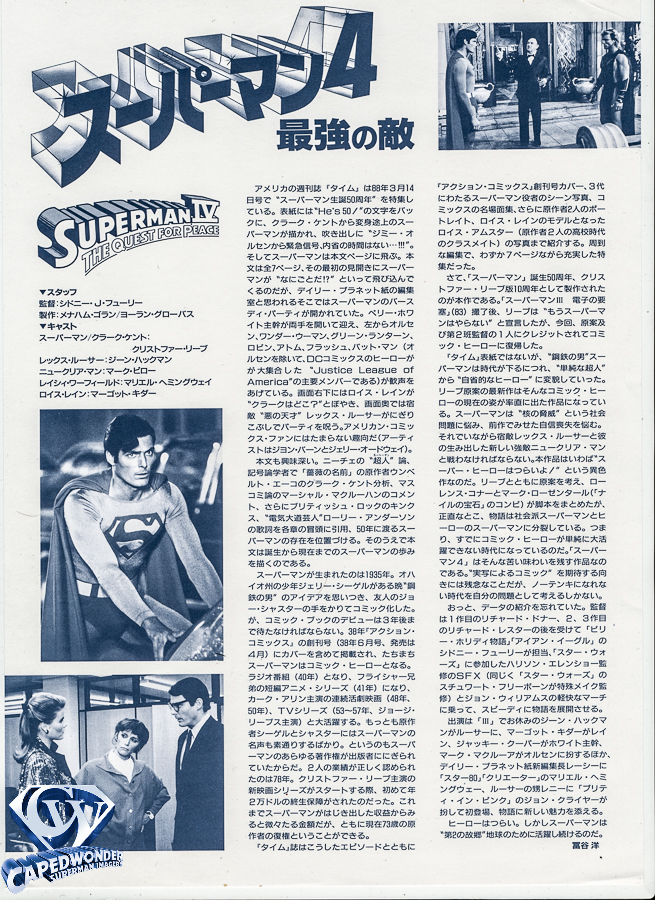
The commentary is filled with a nice collection of anecdotes about Superman’s 50th anniversary in 1988, the creation of the character, his history in television and film, and, of course, some background information on the making of Superman IV. What’s also interesting is that the writer mentions that Superman III had its own unique Japanese subtitle as well: The Electronic Fortress! That definitely has some serious vibes to it that we didn’t get here in the States.
For a time it would be the only source of the film in widescreen format until May 2001, when Warner Home Video finally released the U.S. theatrical version on DVD in its original 2.35:1 widescreen ratio. And then there was the 2006 deluxe edition with lots (but not all) of the deleted scenes. Then the 2011 Blu-ray. Then the 2023 4K release that I’m not going to go into, which was, for lack of a better word, a mess.
I have fond memories of that laserdisc and finding it toward the end of the 1990s on eBay for my home video collection. When I got married and moved from Mississippi to Alabama in early 2005, nearly all of my things—all of my books, videos, CDs, and nonessentials—were put in storage in Huntsville for several months until my then-wife and I could find a house to move to. Once we were able to get the house and get everything moved out of storage, then the fun of unpacking began. Out of all of my things that I moved into my office, unfortunately only one thing did not survive the transition from Mississippi to my new home in Alabama, and that was the Superman IV Japanese laserdisc. It had broken cleanly in half somewhere in the move. Ouch. And with nothing to play it on, it meant having to throw it away. I’m thankful for a buddy of mine who got me a replacement copy for my collection years later—not the laserdisc, but at least a watchable copy.
I remember a conversation years ago I had with music restoration producer Mike Matessino, one of the top guys in the business and a really cool guy to boot, and he told me that Warner Home Video should have given fans the international extended version on DVD. And in 2018, my friend Jim Bowers told me that the Warner Archive had a copy of the complete 134-minute cut in their vaults, along with the extended TV cut of Superman II. We don’t know the quality of those prints, but I believe they are complete. To this day fans continue to ask the Warner Archive to release them on Blu-ray, as they would be huge sellers.
Until that happens, any overseas copies of Superman IV are highly sought after by fans and collectors, and the Japanese laserdisc is the most complete version of the film that is out there to date. One day, that bad boy is coming back to my collection again.
(Some of the photographs used in this blog are courtesy of CapedWonder.com.)
-
The Spanish Translation

So in my quest to further build my Superman ‘78 collection, I came upon an interesting foreign language variant of the highly successful miniseries from 2021-22 written by Robert Venditti and illustrated by Wilfredo Torres. And this one was two years in the making for me.
I first came upon this variation, entitled Superman 1978, online through a series of searches on Google and X (the former Twitter) which led me to an overseas website entitled Buscalibre, which had the graphic novel collection for sale. It was the first foreign language translation of the series that I came across, and the price wasn’t too bad for it. Thirty-five dollars, and I would have had it delivered to my door. But there was one significant problem that prevented me from getting Superman 1978.
It was the summer of unfortunate transition for me. I was in between jobs after suffering a serious work-related injury that kept me sidelined for weeks, and I had to treat my injuries all on my own and learn how to walk again. That summer I began to experience the first of a series of physical health issues related to my type-2 diabetes which had begun in 2009 and which I had held at bay for most of that time. Now things were changing, and before long my concern was not about some graphic novel from overseas. My concern was my health and my very life. So I had to put Superman 1978 on the back burner as I recovered, but I never forgot about it.
Over the course of the next two years I balanced my work life and my situation with my diabetes, which continues to this day. And in that time I found two more foreign language translations of Superman ‘78, one in German for the Kindle and Apple Books apps (which I have previously commented on), and one in Korean that mirrored the American hardcover version. But still I never forgot Superman 1978, even as the second series The Metal Curtain was released, and even as I found further cover variants of the first issue of the first series. My collection was growing in leaps and bounds.
Then in early May of this year, everything came full circle for me. On a whim I happened to look on Amazon, and lo and behold, there it was! One copy in stock for 21 dollars plus shipping. I pulled the trigger, and it was a lock for me! Two weeks later it arrived at my doorstep, and the quest was finally complete.
So what makes this Spanish version of Superman 1978 different from the other versions? First of all, this is licensed to ECC Ediciones, a Spanish imprint that handles primarily DC Comics but also numerous manga and other smaller labels for the Spanish markets overseas. Apparently their release of Superman 1978 in June 2022 was a massive success, and it went back in March 2023 for a second printing.
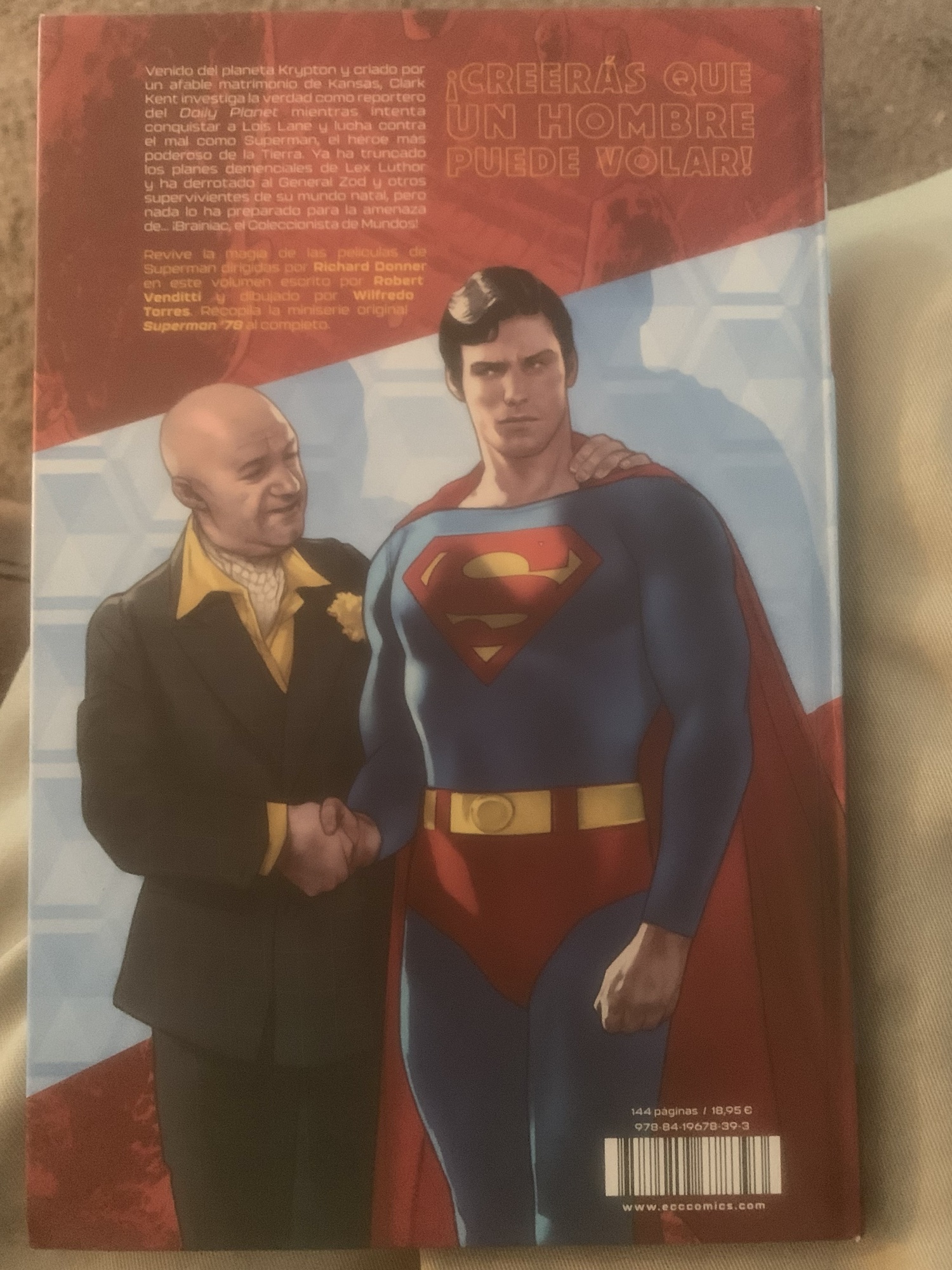
The back cover to Superman 1978. As opposed to the English and Korean versions, the Spanish version does not come with a slipcover but it is in hardcover format. And the back cover text is pretty straightforward with the familiar movie poster tagline “You’ll believe a man can fly!” in Spanish. (It would be interesting to find the classic film poster with the tagline in Spanish. I’m sure there’s one out there…)
And the back cover copy translates as follows:
“Coming from the planet Krypton and raised by a kindly Kansas couple, Clark Kent investigates the truth as a reporter for the Daily Planet while trying to win over Lois Lane and fight evil as Superman, Earth’s most powerful hero. He’s already thwarted Lex Luthor’s insane plans and defeated General Zod and other survivors of his home world, but nothing has prepared him for the threat of… Brainiac, the Collector of Worlds!
“Relive the magic of the Superman films directed by Richard Donner in this volume written by Robert Venditti and drawn by Wilfredo Torres. Collects the original miniseries Superman ‘78 in full.”
As for the interior content, all of the different covers of the original series and many of their respective variant covers are included in this Spanish volume, with the newsstand covers and the 1:25 pencil sketch variant cover separating each chapter, while the variant covers are included in a separate section at the end of the book. The translation itself is ably handled by Felip Tobar Pastor and edited by Gustavo Martinez, who have successfully translated the copy for Spanish readers.

Still one of the best variant covers of all time from Wilfredo Torres! The volume begins with the Mico Suayan variant cover and a new foreword written by Fran San Rafael, which covers the history of the Man of Steel from the comics to the cartoons, the television series, and the movies, along with the development of the Superman ‘78 series. Here is that foreword translated into English, which is cleaned up for any language inaccuracies:
THE RETURN OF SUPERMAN
By the end of the seventies, the world had already enjoyed several adaptations of the adventures that the Man of Steel had lived in comics for four decades. First came the radio serial from the WOR station, which premiered in 1940 and from which emerged characters as important to the mythology of the character as Perry White or Jimmy Olsen. It was also where kryptonite was born as a common resource whenever Bud Collyer, the protagonist, needed a break and his staff had to go offside for a good part of an episode. Later the Fleischer cartoons would arrive, a milestone that had a very high budget at a time when Did eyes was beginning to monopolize the field of animation. Already in the early fifties, Superman and the Mole Men arrived, the film starring George Reeves that would give rise to a television series shot in black and white. For a generation of Americans, it was the definitive version of the character.
The world was not prepared for what Superman was going to entail when it was released in 1978, many years after the last adventures starring Reeves. Between one adaptation and another, several more animated versions had emerged, but it was Christopher Reeve’s Man of Steel who made us believe that a man could fly. The project arose when Warner Communications became the parent of DC Comics, which opened the door to endless possibilities. The superhero chosen to open fire was the most emblematic, of course, in a production that was initially going to be directed by Steven Spielberg, having recently arrived at the Hollywood Olympus with Jaws. However, the popular had already committed to another project (Close Encounters of the Third Kind), so it was Richard Donner, who had also gained notoriety shortly before (in his case, with The Omen), who would take charge to adapt the best-known superhero in the world.
Superman had several important names who endorsed the film at the box office. John Williams, who had already had some successes, was chosen to compose the soundtrack, which left us with unforgettable songs such as the famous fanfare. Mario Puzo, the writer of the novel The Godfather, was in charge of the script. For his part, Marlon Brando played Jor-El in a brief role that, however, became one of the film’s biggest draws. It was he who welcomed the spectators to the aseptic Krypton of Donner (the one to which we will return in the next pages) before we saw the plains of Kansas and a sumptuous Metropolis where Reeve convinced us as Clark Kent and fascinated us as Superman, all without detracting from the memorable performances of Margot Kidder (Lois Lane) and Gene Hackman (Lex Luthor). Curiously, one could say that Reeve did not meet the physical standard that a superhero seemed to require (and that there was another possible candidate for the role, Arnold Schwarzenegger), but what muscle justifies a man lifting a helicopter?
The film was a great success that generated an entire franchise that was shortly followed by Superman II, with the appearance of the three Kryptonian criminals that Jor-El had locked up in the Phantom Zone. Later, two more films would arrive, to which Supergirl would be added, but the stories contained in this volume take place after the second installment. With it, DC Comics recovers the spirit of the comics it has published recently, based on great adaptations of the past such as Batman 1966, Wonder Woman 1977, or Batman 1989. The latter returns us to Tim Burton’s Gotham City, via the hand of Sam Hamm (the scriptwriter of the original film) and artist Joe Quinones, and we will be able to enjoy it serialized month after month by ECC Ediciones.
The creators of Superman 1978 are writer Robert Venditti, a regular at DC Comics who has written for major characters such as Green Lantern and Aquaman, and artist Wilfredo Torres, who already participated in Batman 1966 a few years ago. It was Torres who made it clear on the publisher’s website: “There is no fictional character I love more than Superman. Of all the interpretations there have been in animation, television and film, the version by Christopher Reeve and Richard Donner is the one I like the most. Working on this project is a childhood dream come true.”
Surely there are many readers who identify with these words of the artist and who are going to thoroughly enjoy this volume, where we will remember Reeve, Hackman and Kidder, and where we will see for the first time in the history of this Superman a villain that many have claimed for years a true heavyweight from the Man of Steel’s mythology. This is Brainiac. And since the various subsequent films have not featured him, it is wonderful to be able to see him facing the hero that several generations consider the definitive Superman.
While we glean no new information about the films themselves, it is clear that Fran San Rafael loves the films and knows the Superman franchise well.

Mico Suayan’s tip of the hat to artist Jim Lee’s cover to Superman #207. Christopher Reeve and Richard Donner would have loved this piece. I still have yet to get this minimal trade dress variant, the rare Superman ‘89 error variant, and the foil cover variant. Unfortunately with this Spanish translation (and there is one big unfortunately that I have to mention here), it does not include the heartfelt tribute to Richard Donner that was included in the first issue, as well as the German and Korean versions. This is a loss to be sure, and I’m sure the editors could have spared an extra page or two to include the Donner tribute, since his vision of verisimilitude was so influential to the first two Superman films and was continued by Robert Venditti and his artists in the two stories thus far.
Bottom line: if you’re on the hunt for foreign editions, this is a great addition to your collection. And with that, if there are any other foreign language translations of Superman ‘78 that are out there in the wild or under the proverbial radar, I would love more than anything to know about them and add them to my growing collection! And when we see The Metal Curtain gathered into a graphic novel collection, you can bet your bottom dollar that I’ll be there to get as many versions as I can, including all of the foreign language translations that I can locate.
-
More on Christian Heiss
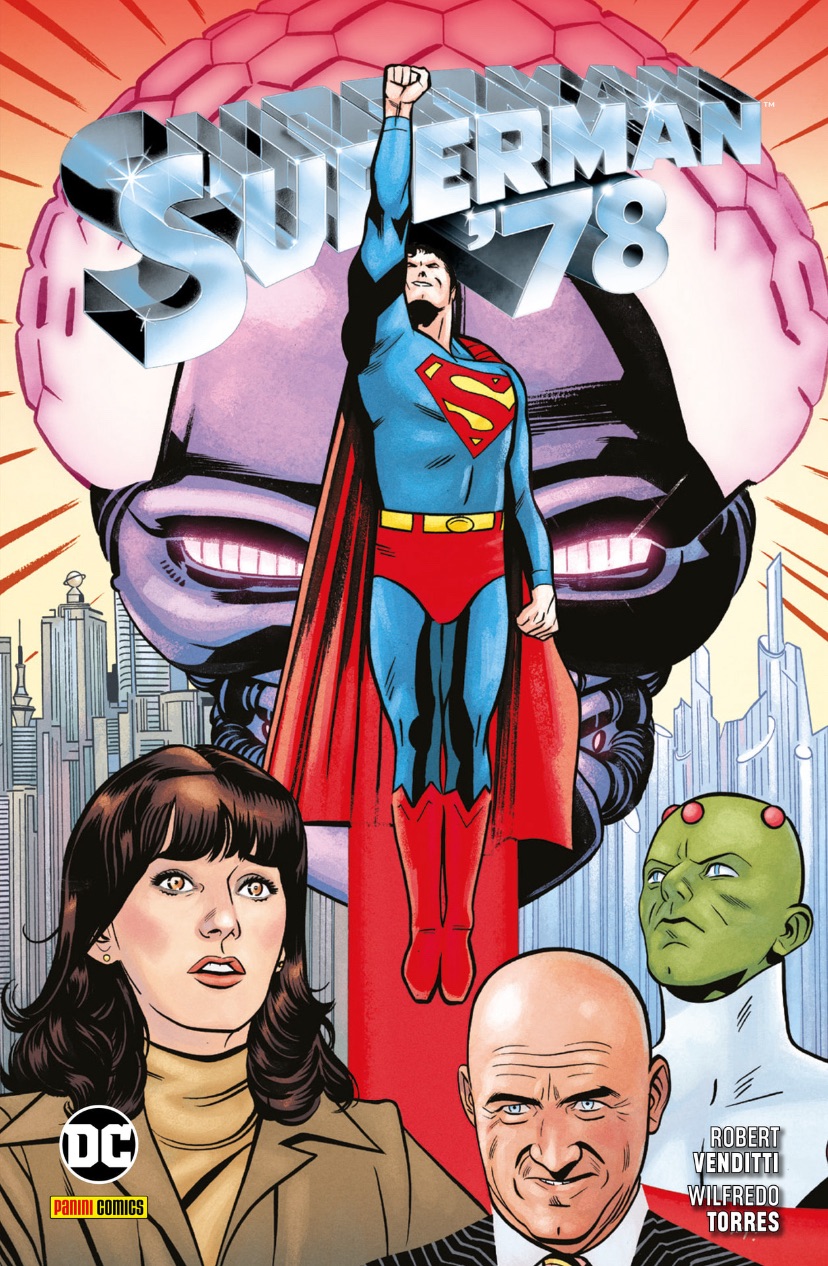
The cover to the German language release of the Superman ‘78 graphic novel licensed to Panini Comics, currently available in digital format for the Kindle and Apple Books apps. In my previous two blogs on the Plaion Pictures Blu-ray release of Supergirl, one of the highlights of the release was the text commentary by writer Christian Heiss. It’s not the first time that I’d read some of his writing. When I came across the German language version of the Superman ‘78 graphic novel collection for the Kindle last year, I had noticed that he had written the foreword and afterword for the collection.

The foreword… So here’s what he had written, translated from German to English (forgive me if some of the translations are a little off, but I’ve done my best to clean it up where needed):
STELLAR CINEMA BLOCKBUSTER
In 1978, an advertising slogan on a cinema poster announced to all cinema-goers: “You’ll believe a man can fly.” Above it, next to the Superman emblem, a red-yellow lightning bolt could be seen racing through the cloudy sky. The message was so simple, so successful was its message. Superman: The Movie became a huge box office hit that year and caused a major renaissance for the Kryptonian hero.
Even today, director Richard Donner’s film is still considered an exemplary blueprint for the film adaptation of a superhero comic, despite some outdated passages. With lots of humor, action sequences and special effects at the height of the time and a huge portion of heart, the film thrilled its audience. Last but not least, the actors were a guarantee of success: Christopher Reeve embodied the kind superhuman just as convincingly as his bumbling, shy alter ego Clark Kent; Gene Hackman clearly enjoyed his portrayal of the diabolical Lex Luthor; and Margot Kidder was one of them as Lois Lane clever and passionate reporter like she is in the (comic) book.
The film spawned three sequels up to 1987 – and now this comic sequel, which follows directly on from the events of Superman: The Movie. So let’s go back to the year in which the Man of Steel first appeared in Metropolis… and in this volume he encounters a new danger from the depths of space!
Have lots of fun with it!

…and the afterword. NOT EVERYTHING IS GREAT
As already noted in the foreword, Superman: The Movie was the box office hit of 1978. In that year, the film was at number 1 on the US Box Office hit list for 13 weeks in a row. But even though the final product was so successful and is still considered the classic superhero film par excellence, the story behind it was riddled with numerous problems and obstacles.
It started with the financing of the project: Ilya and Alexander Salkind, the film’s main producers, had secured the rights to a Superman film adaptation, but had difficulty finding a studio that would cover the production costs and subsequent distribution of the film wanted to take over. In the end, the two of them financed the filming of Superman: The Movie out of their own pockets until a distributor was finally found, Warner Brothers, who brought the film into cinemas – and the Salkinds certainly made a profit from this huge hit that covered their expenses more than once exceeded.
The producers initially hired Guy Hamilton, who had previously directed various films in the James Bond series, as the director. But when production was relocated from Rome to England for cost reasons, it became clear that Hamilton could not stay in his homeland for a long period of time due to problems with the British treasury. A suitable replacement was finally found in Richard Donner, who had previously directed the successful horror thriller The Omen.
The self-confessed Superman lover first looked at the script. The Salkinds had spared no expense and effort and hired best-selling author Mario Puzo (The Godfather) to write the script, whose work resulted in a colossus of 500 pages of script – enough material for five films! Donner had the script, which he also found too slapdash, quickly revised and tightened up by experienced author Tom Mankiewicz.
For the role of Superman they initially looked for a well-known name such as Paul Newman, Robert Redford or Steve McQueen, but here too Donner had a different opinion than his producers: because he believed that a star would overshadow the part of the steel hero, they finally signed him the largely unknown theater actor Christopher Reeve – a direct hit! But before Reeve could slip into the Superman costume, he first had to build up some serious muscle mass. He did this under the guidance of bodybuilder David Prowse – who, funnily enough, was involved in a major hit film in a different role: In the films of the first Star Wars trilogy, Prowse was under the dark guise of arch-villain Darth Vader!
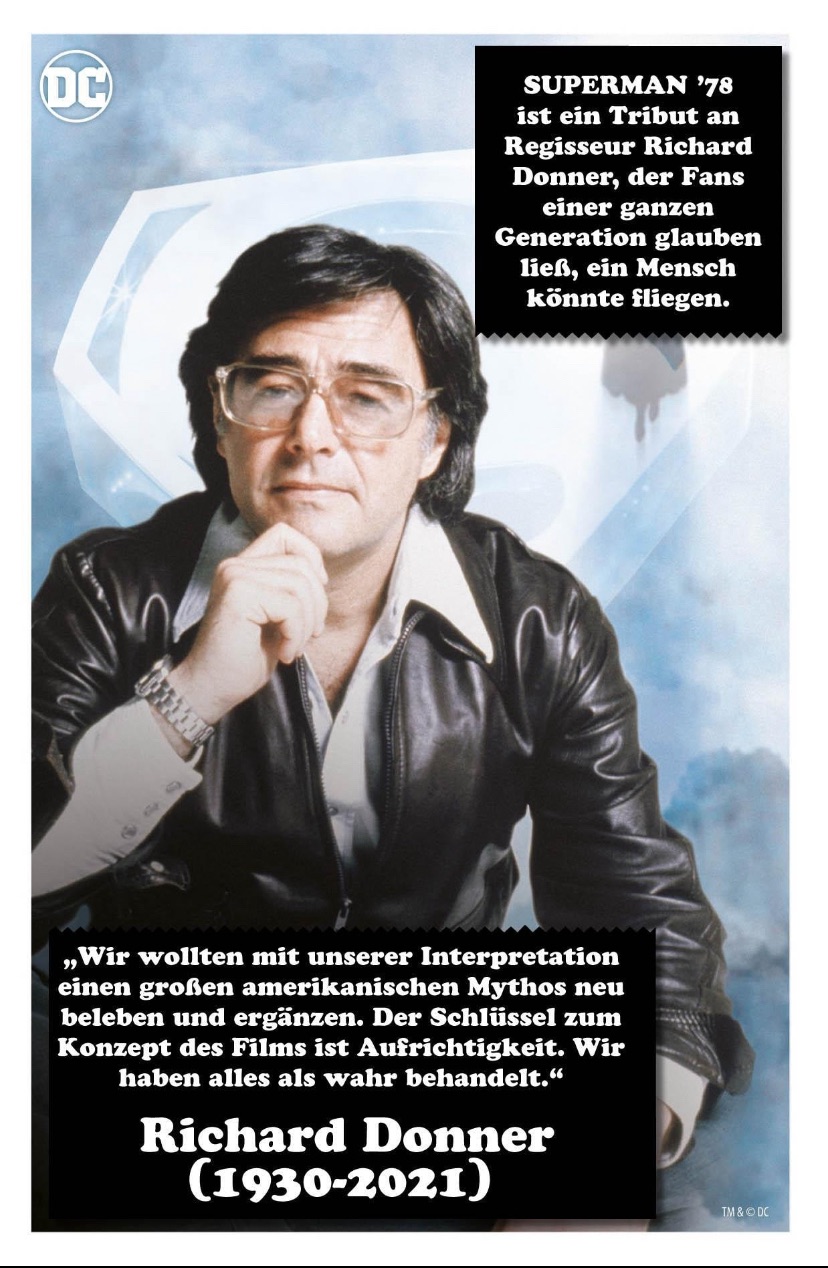
The dedication to Richard Donner as it appears at the end of the German language translation. While we glean nothing new from Christian Heiss’ foreword and afterword, he clearly knows his facts about the development of the Superman films, even if they are both brief for the graphic novel.
These are the only new additions to the growing collection of the Superman ‘78 series, along with the English, Spanish, and Korean versions, and with the recent completion of Superman ‘78: The Metal Curtain, don’t be surprised when we see a compilation of the second series in one volume in multiple languages. And when that happens, I’m sure we’ll get another great commentary from Christian Heiss again.
